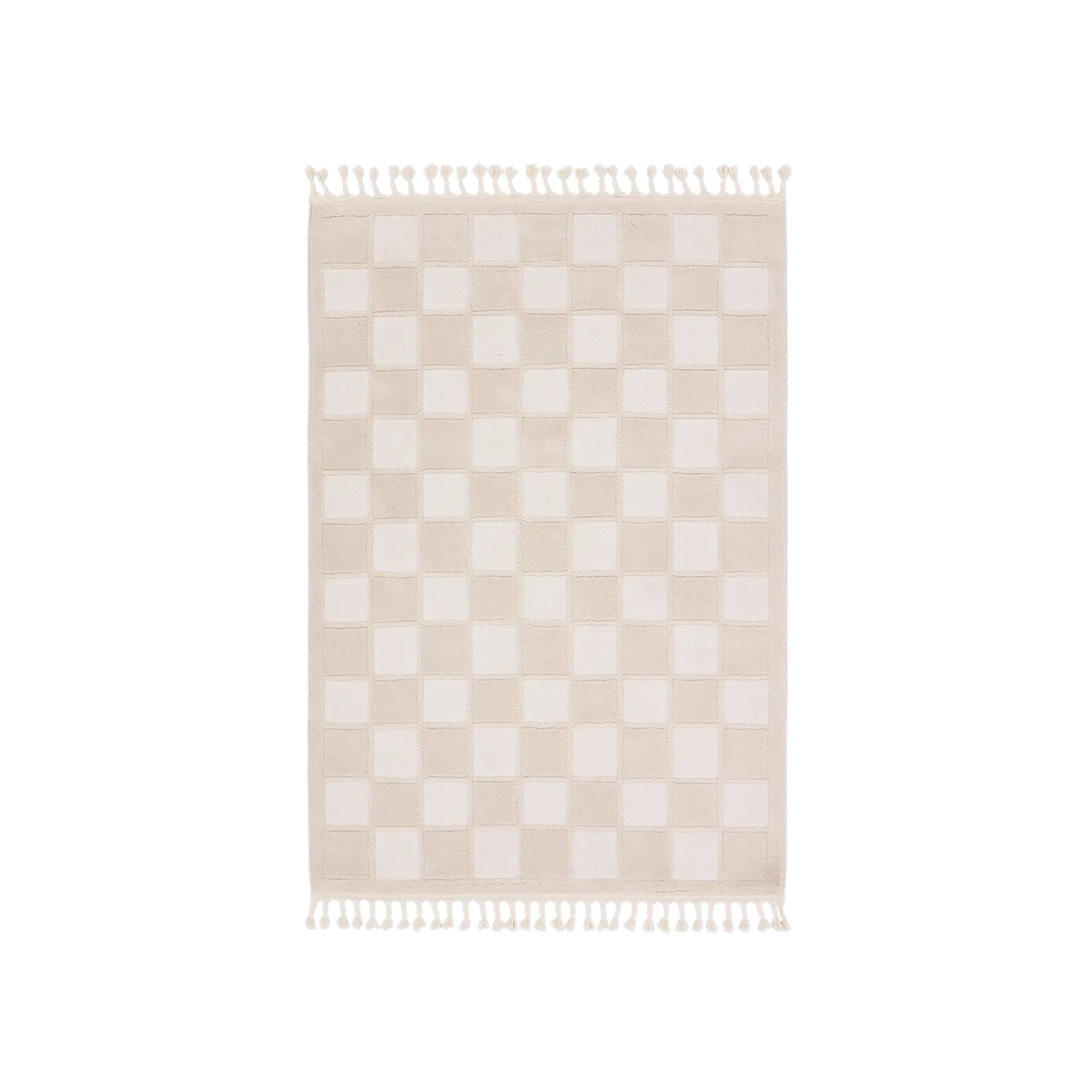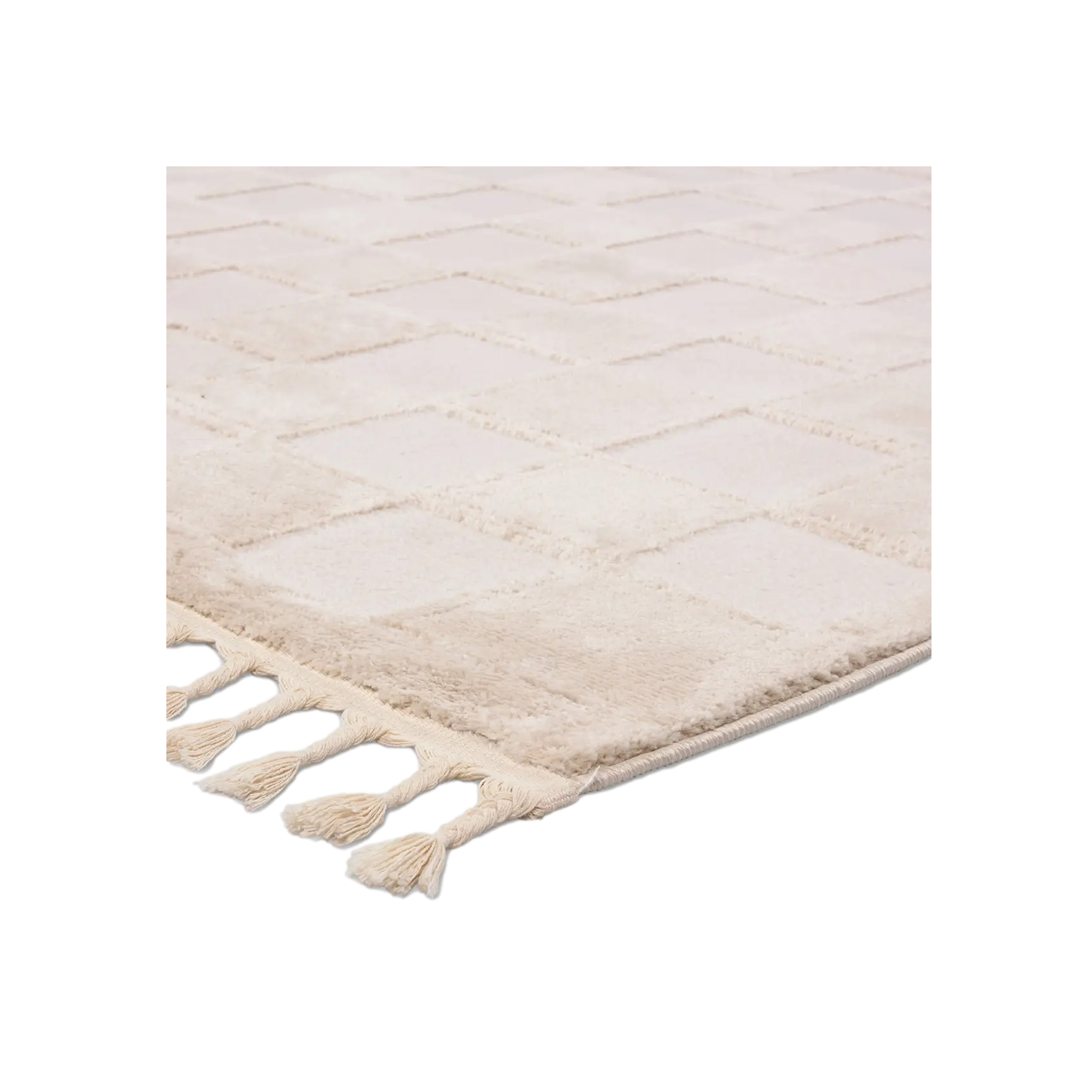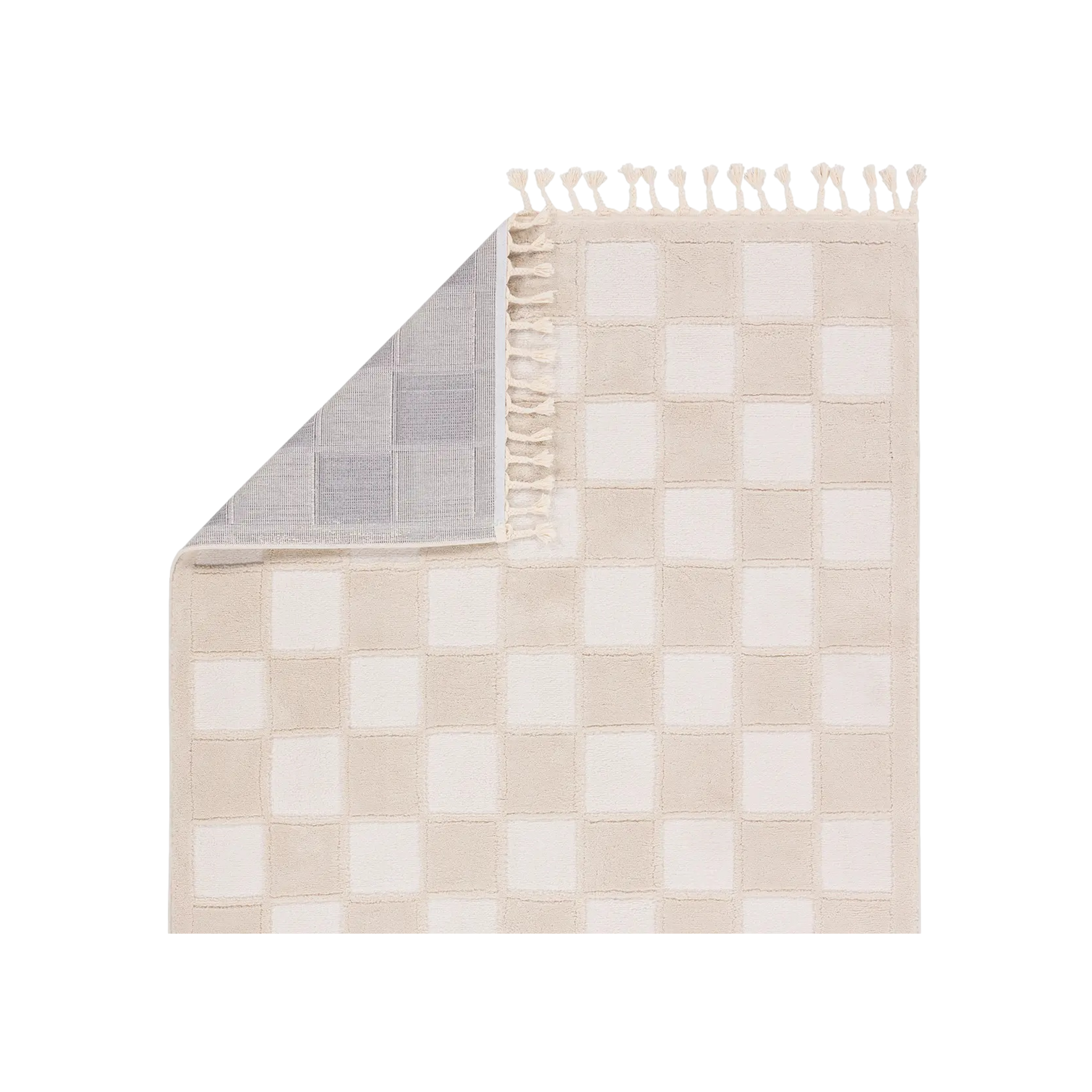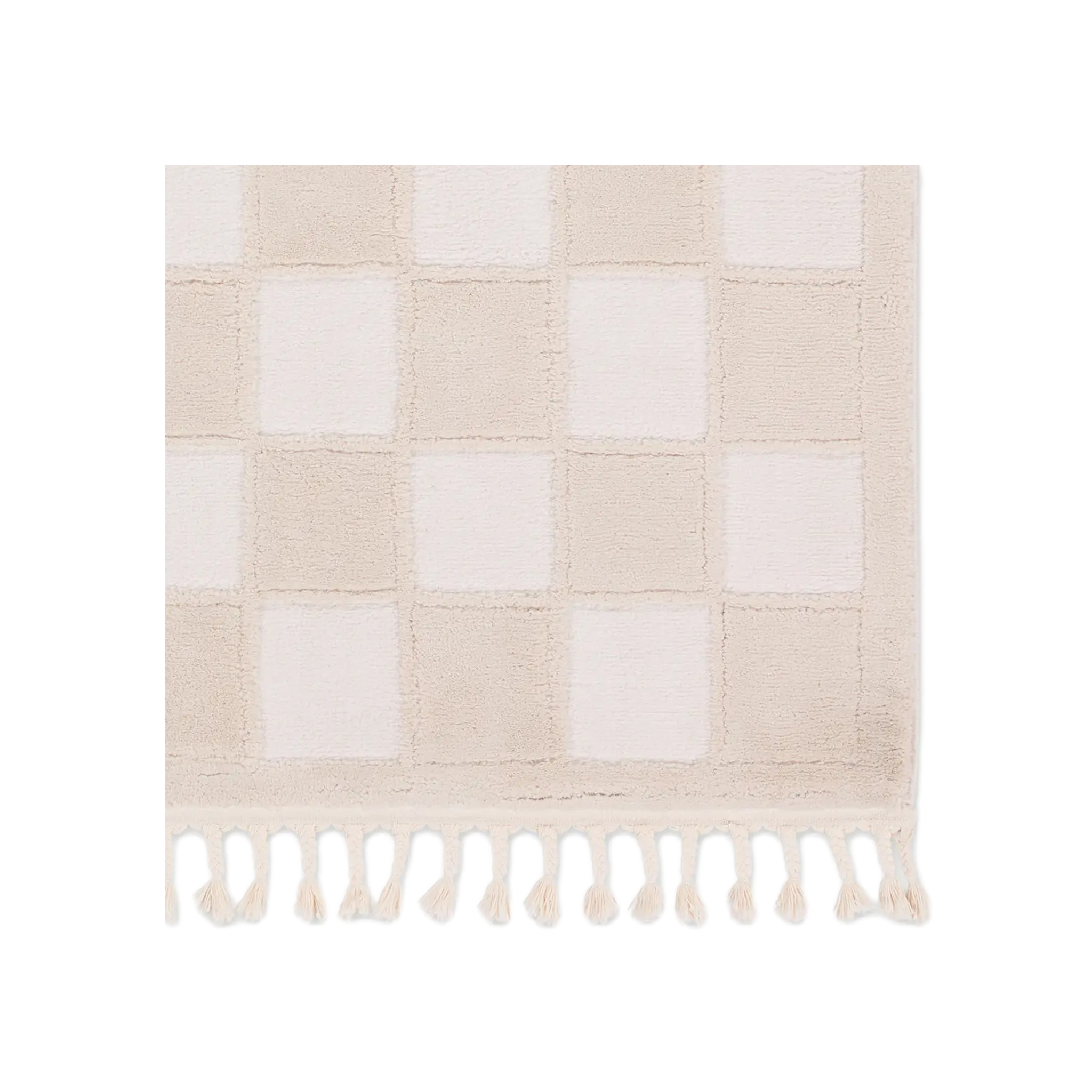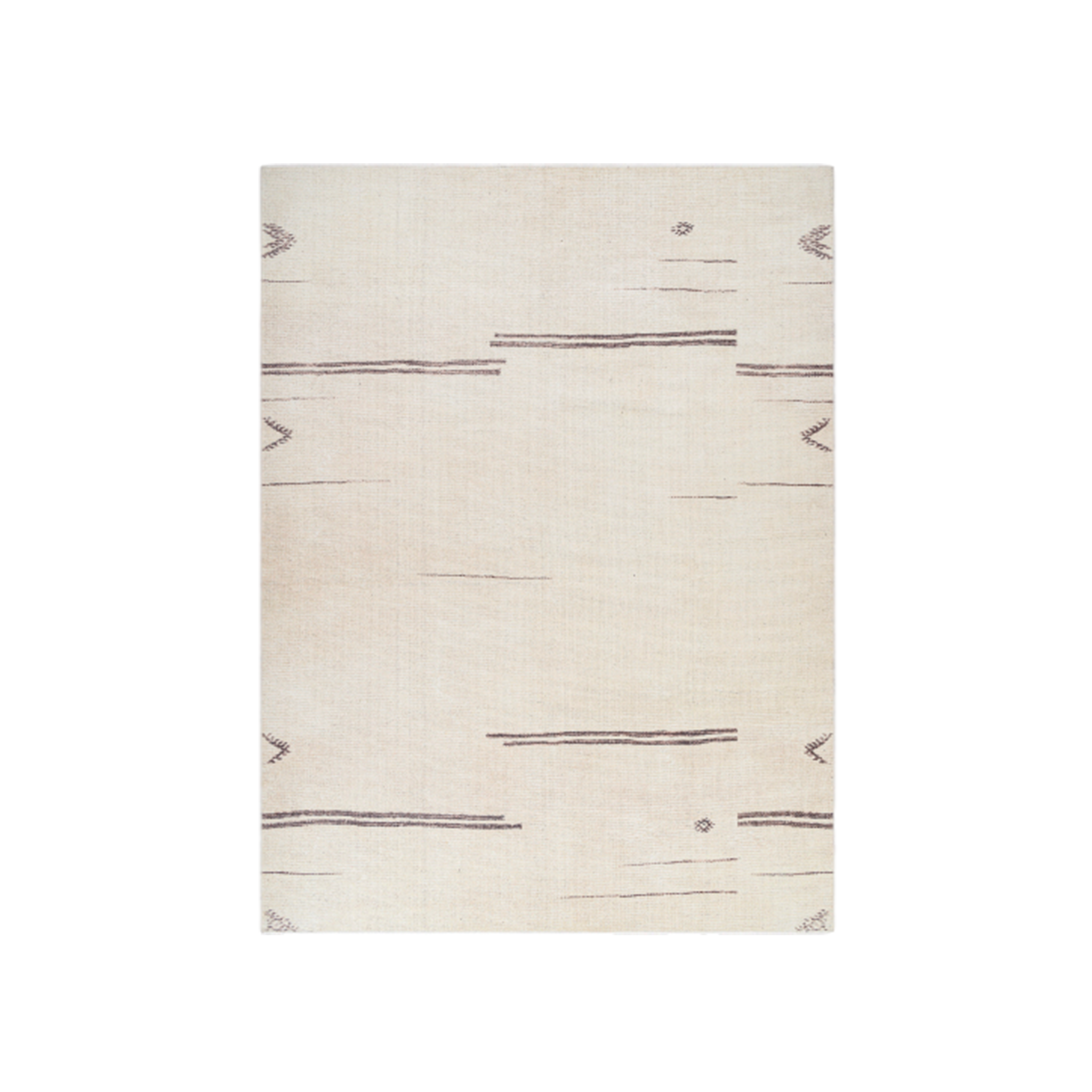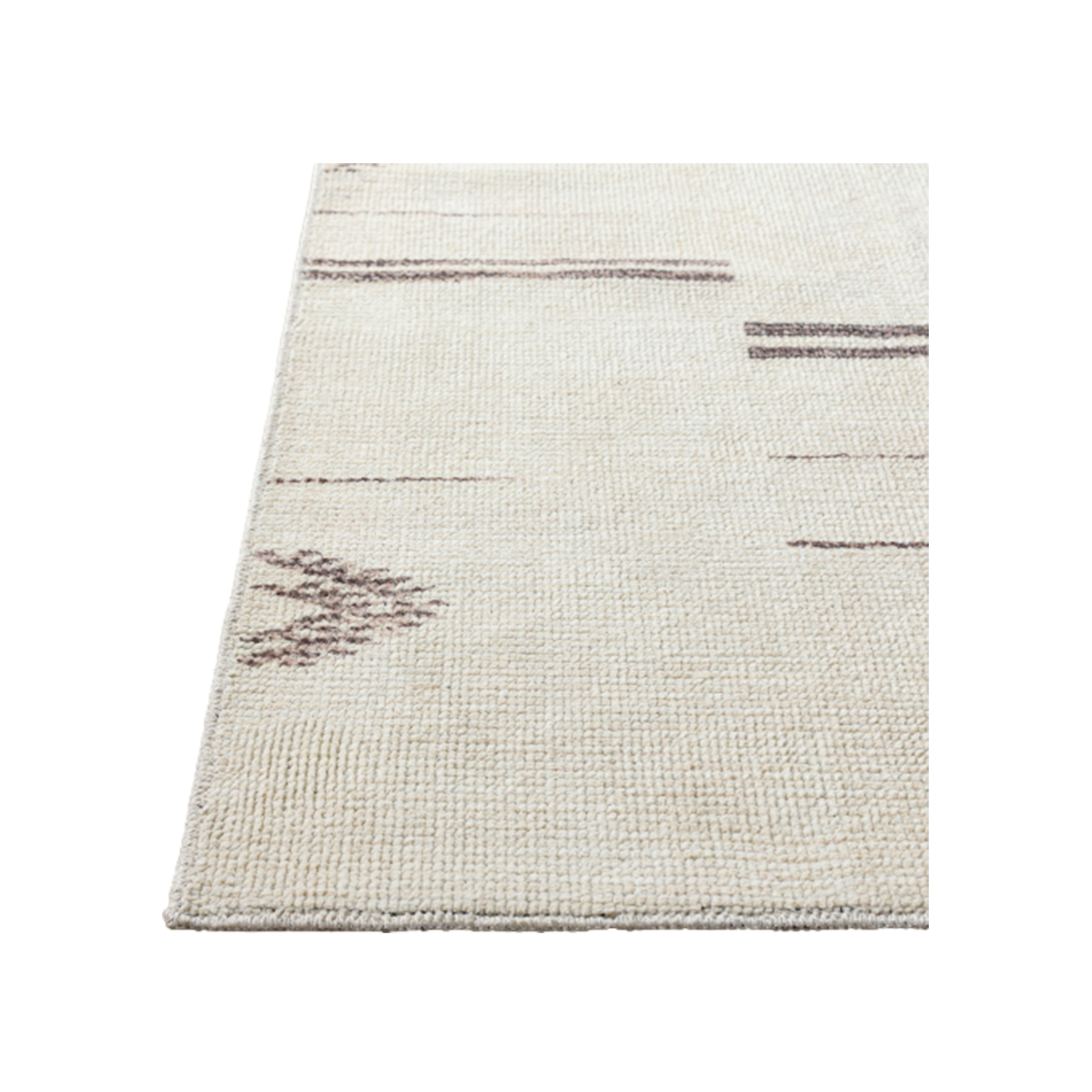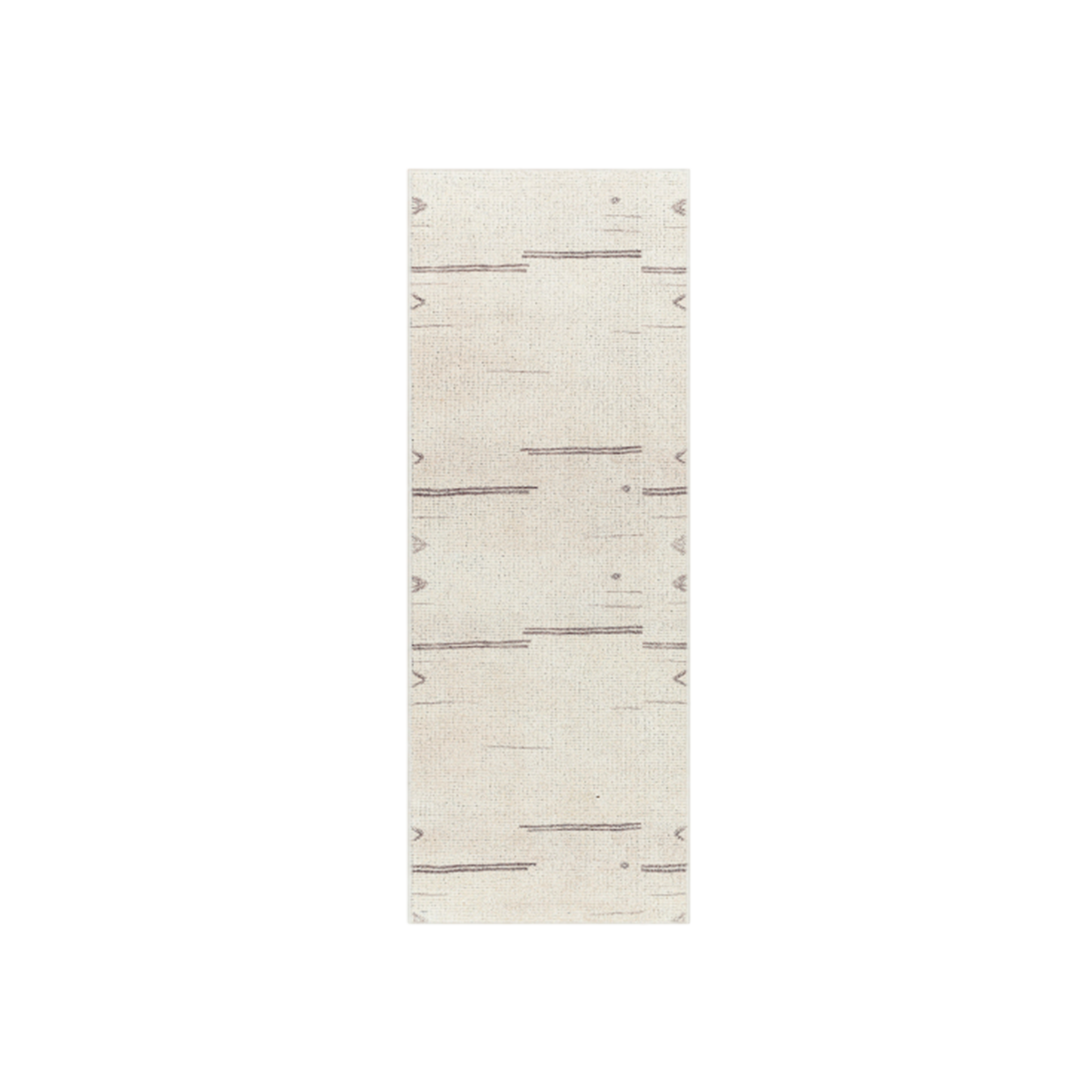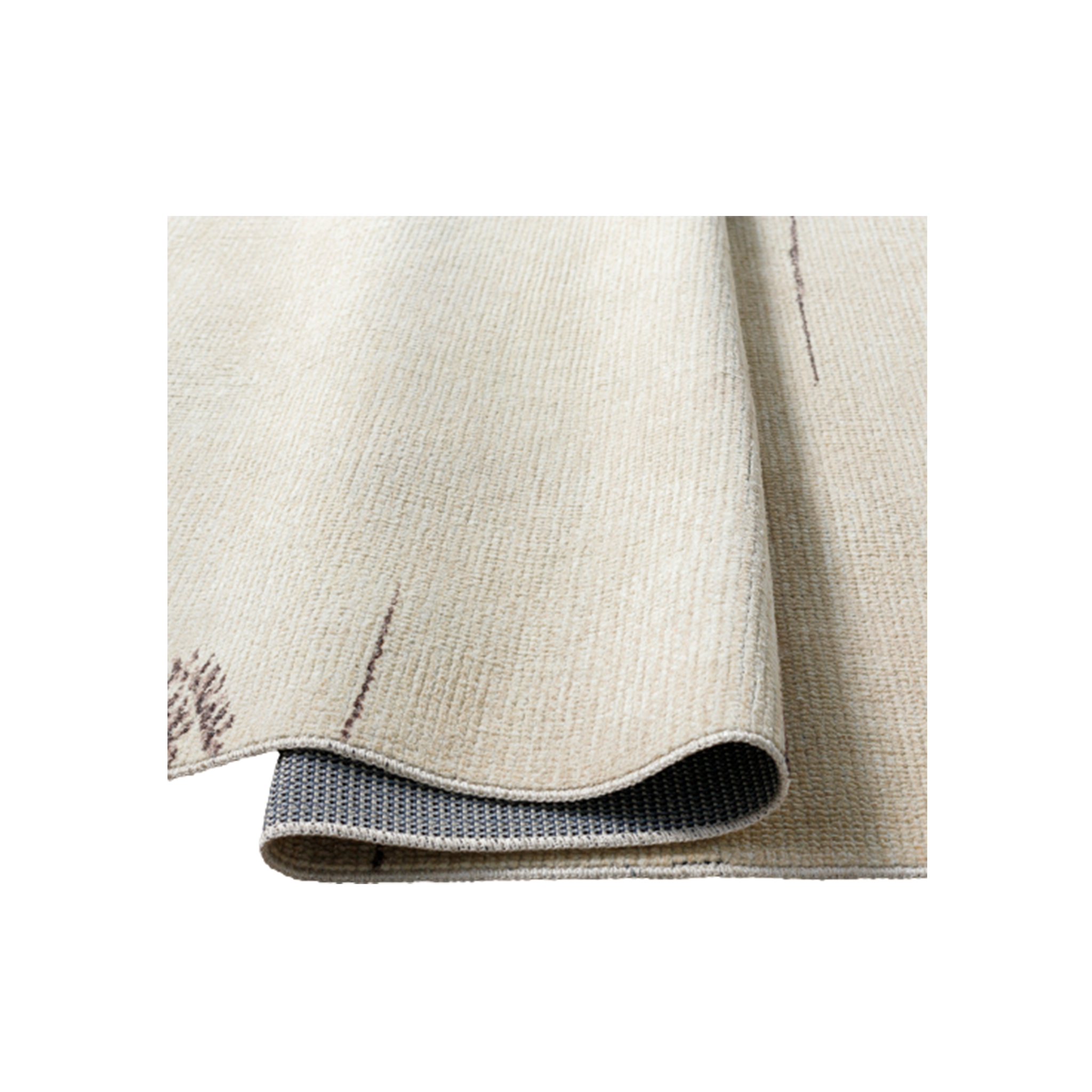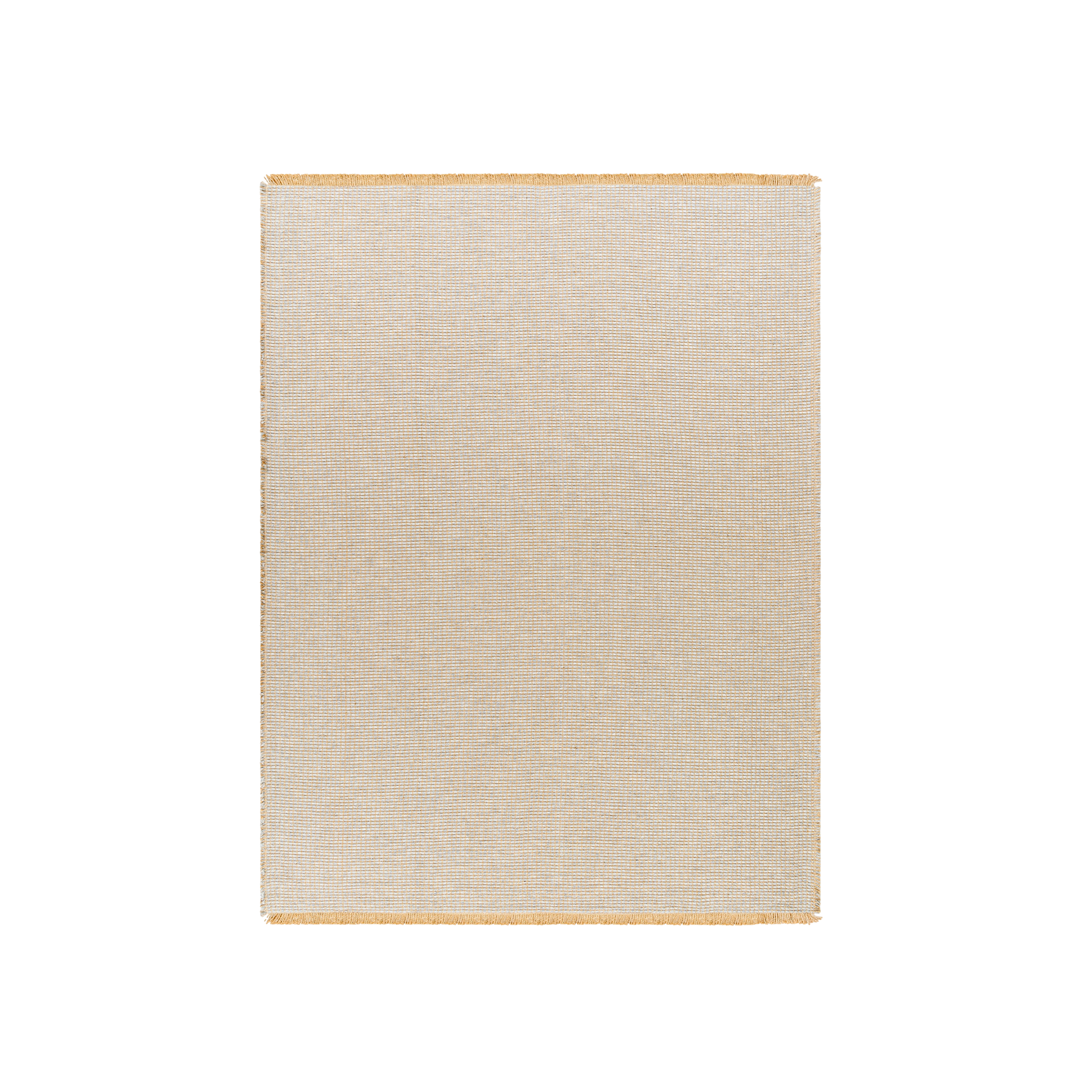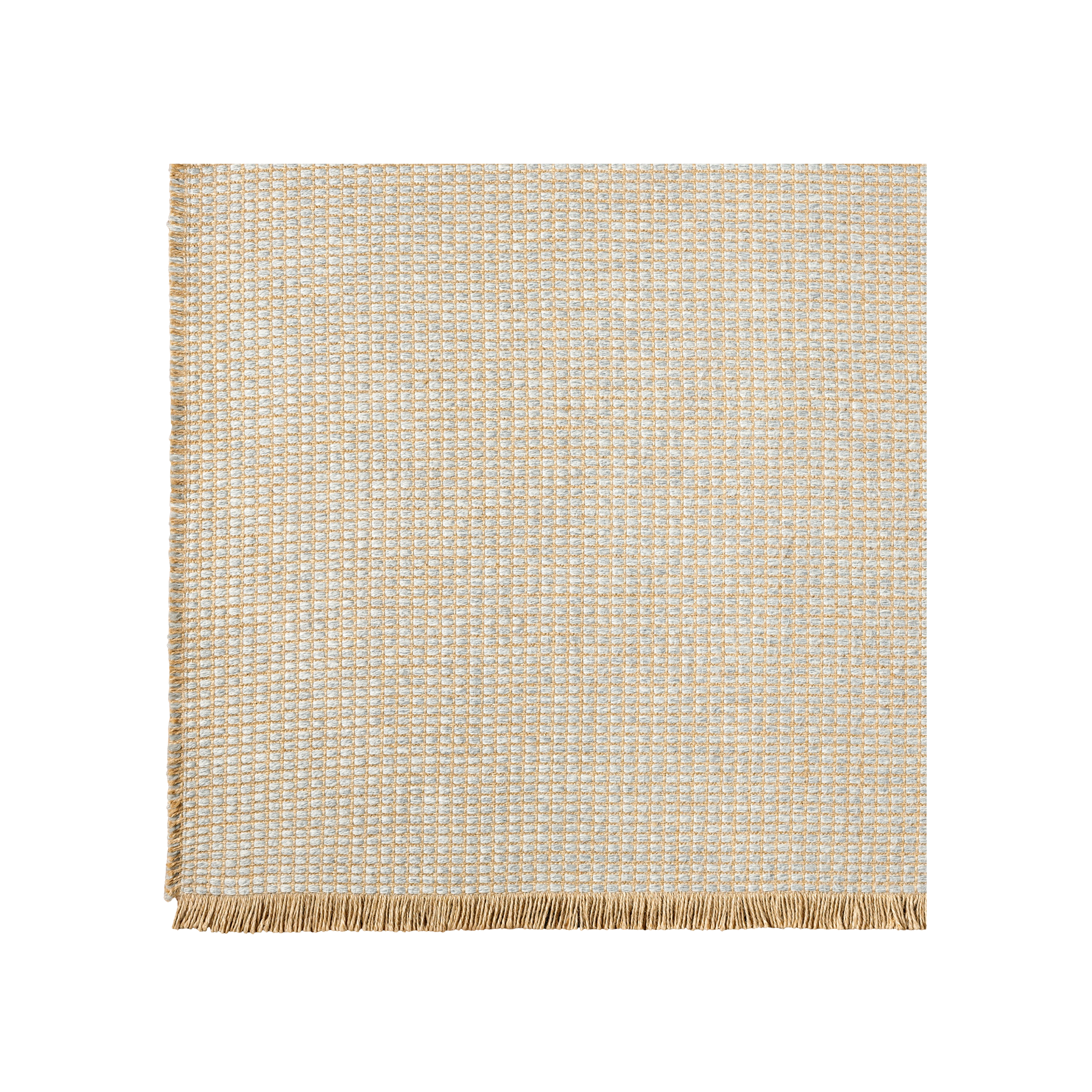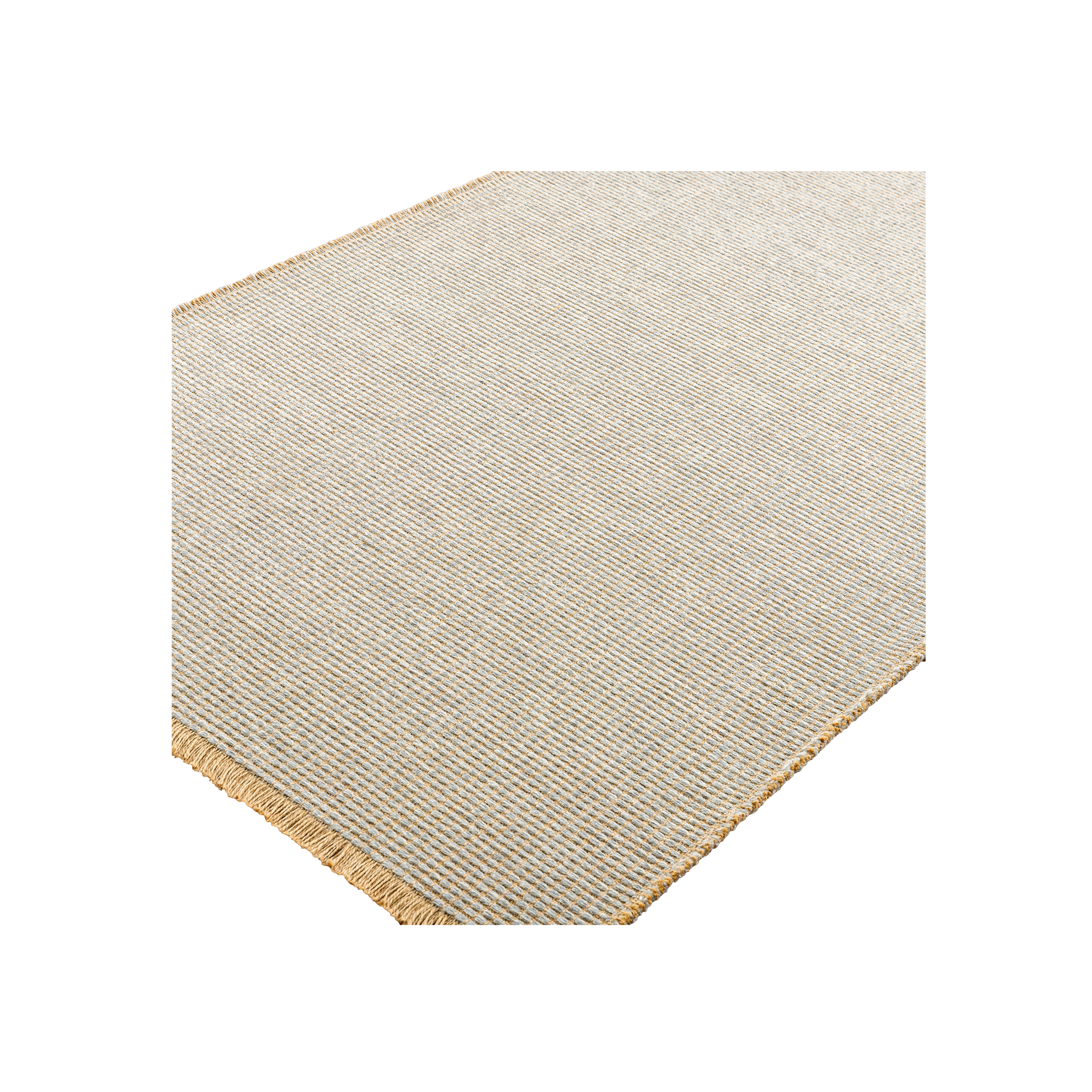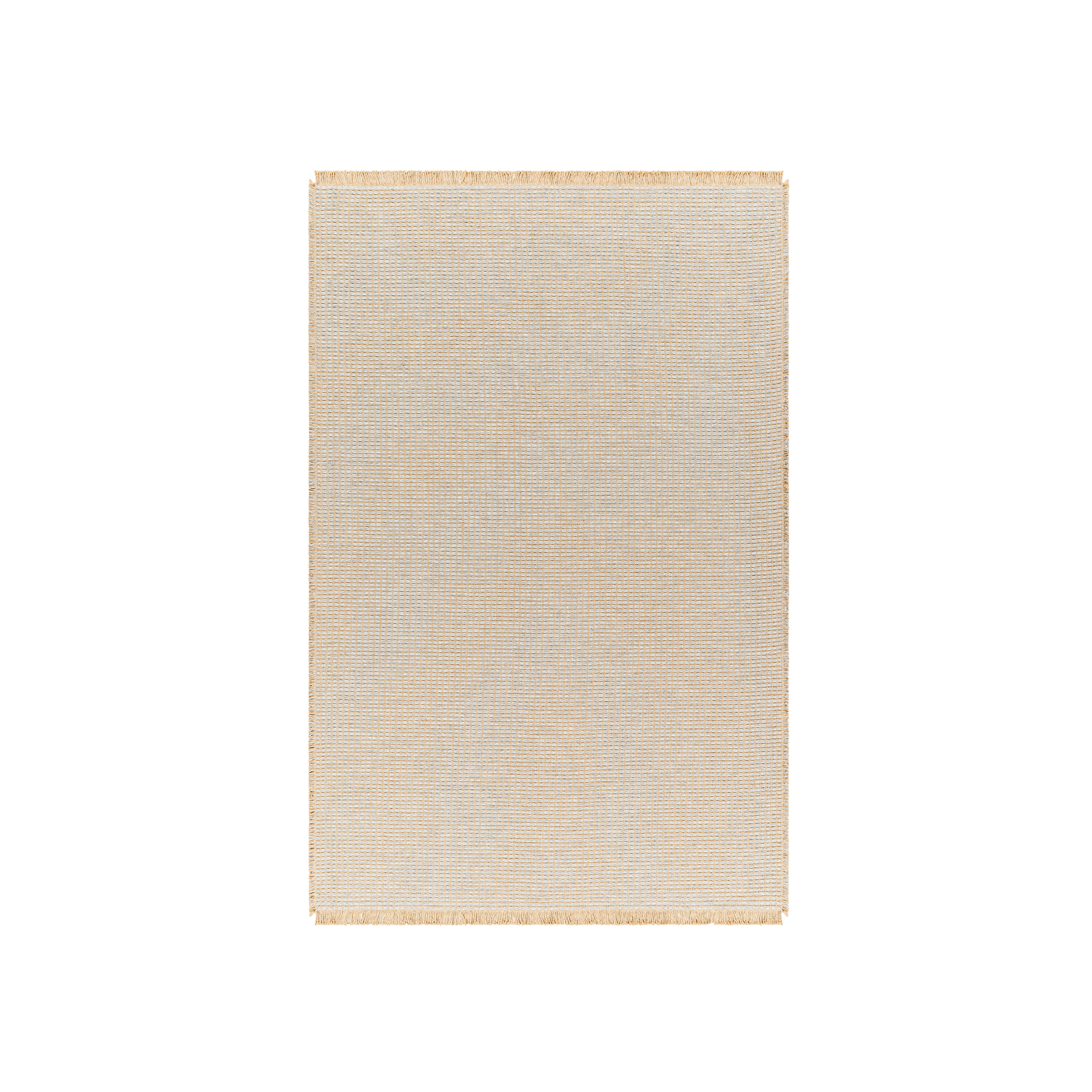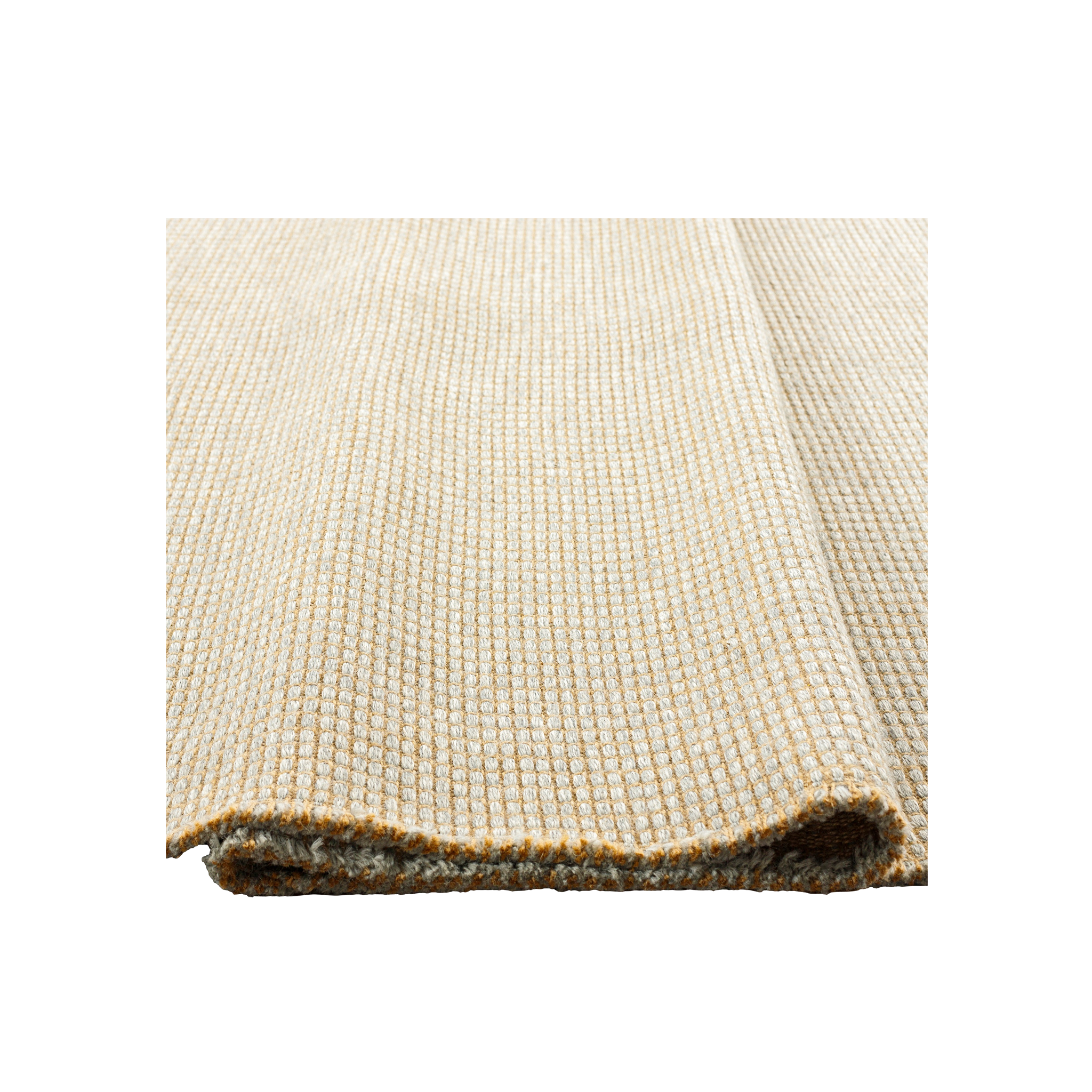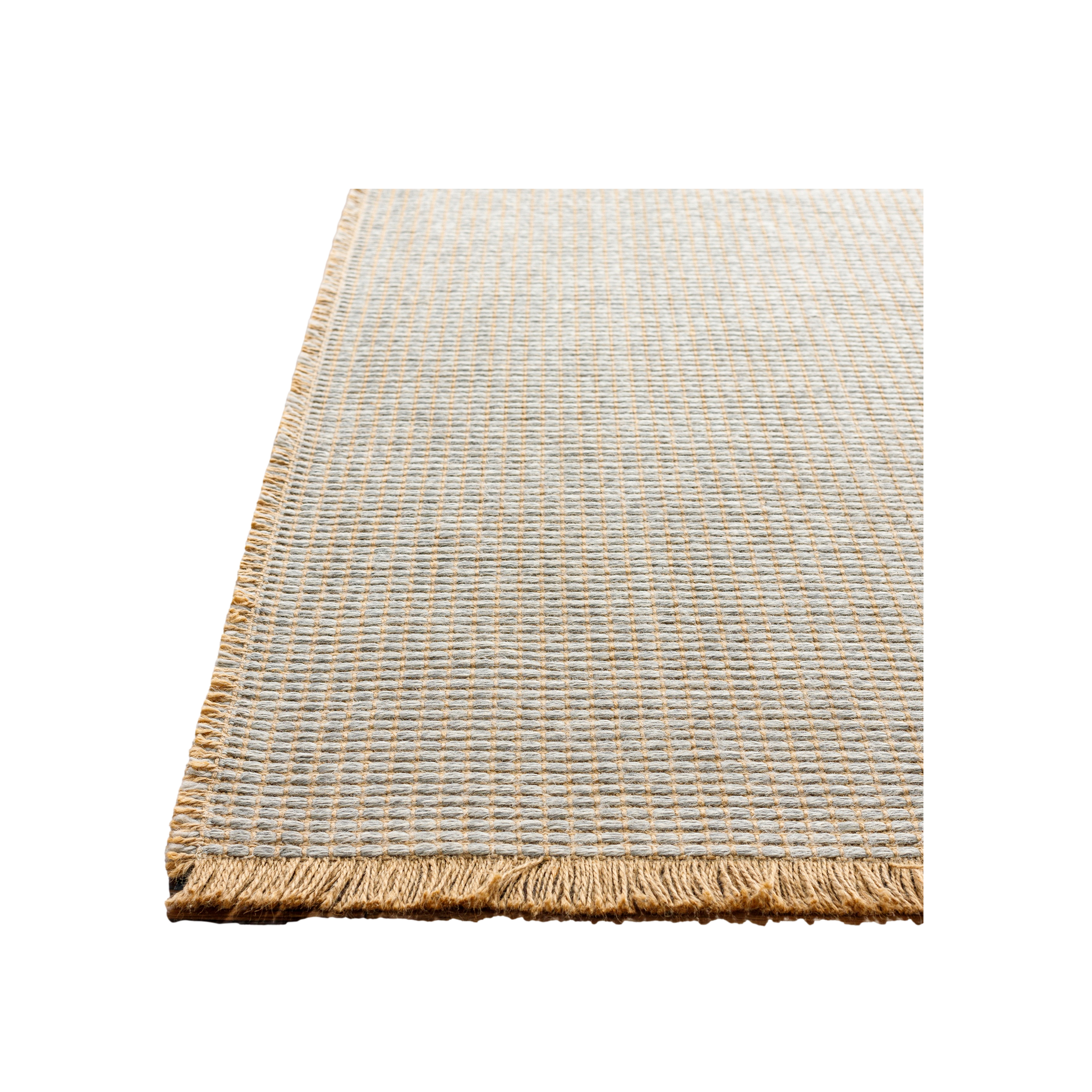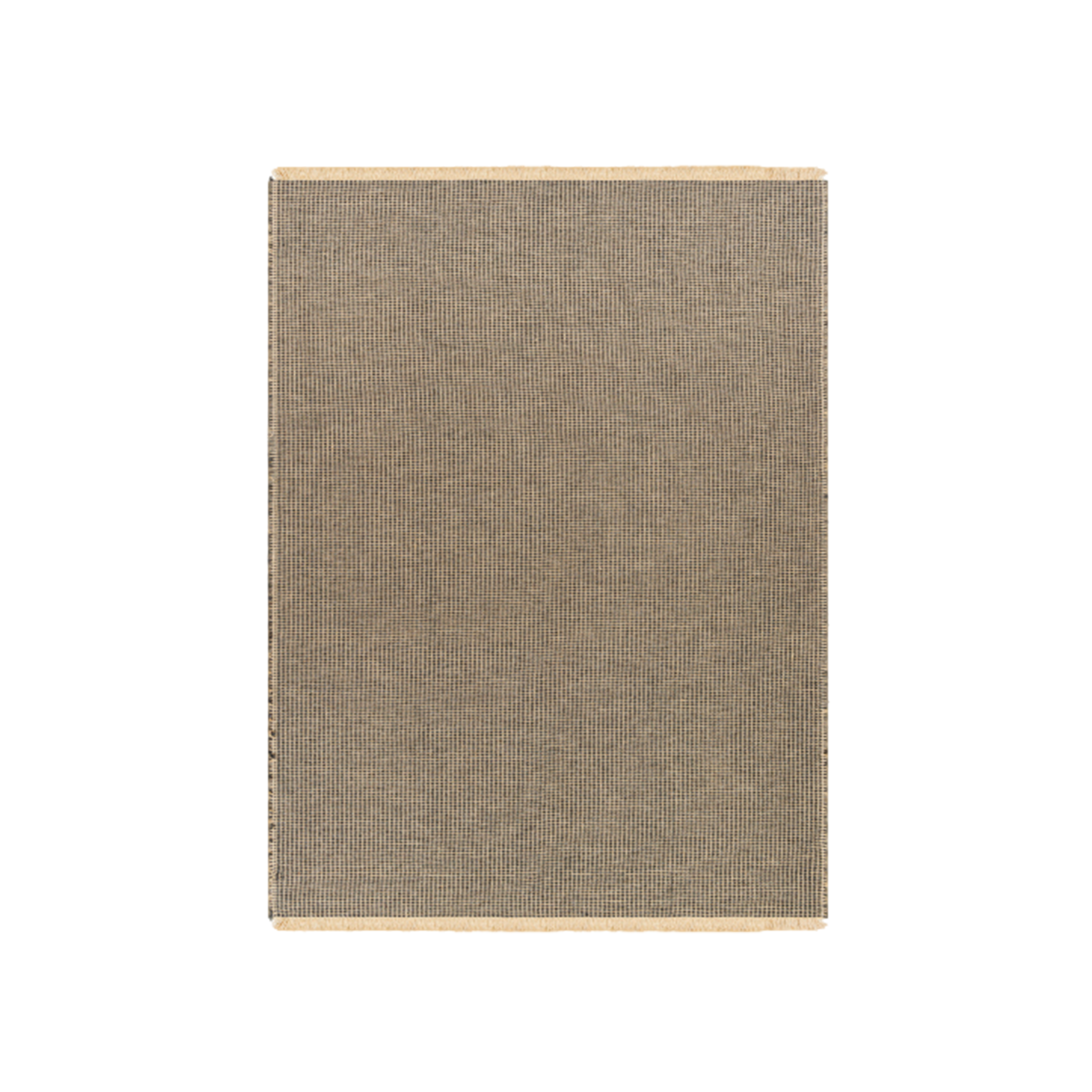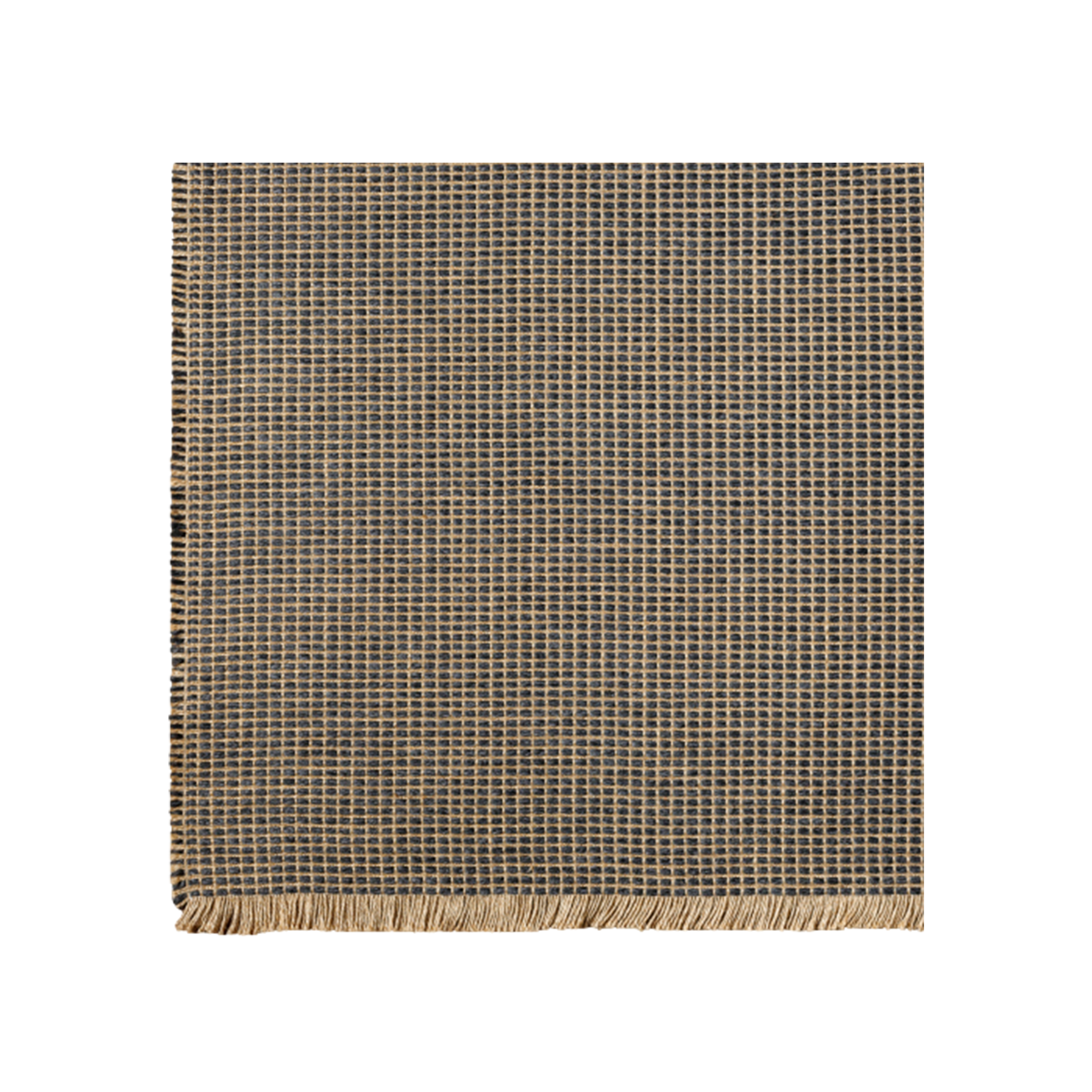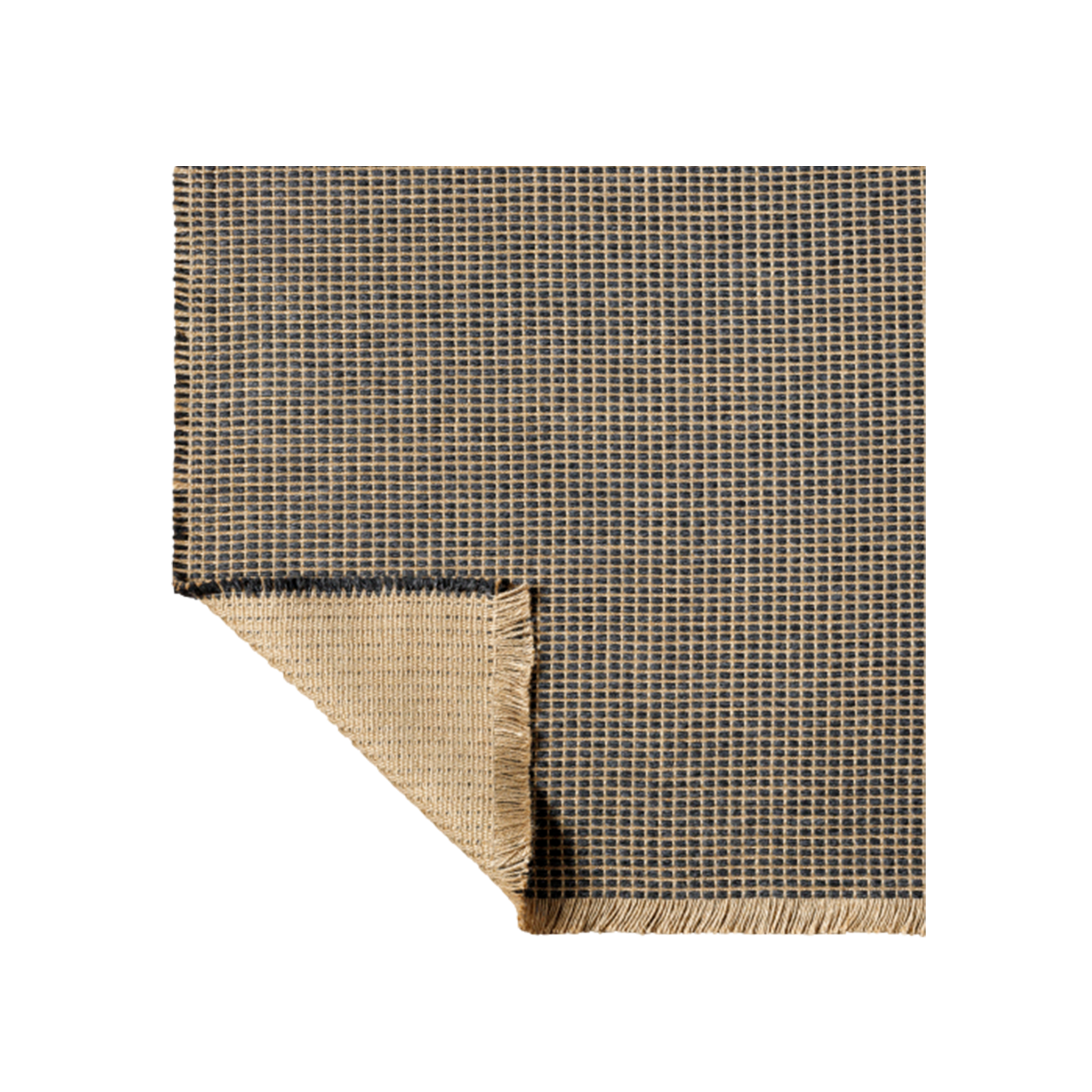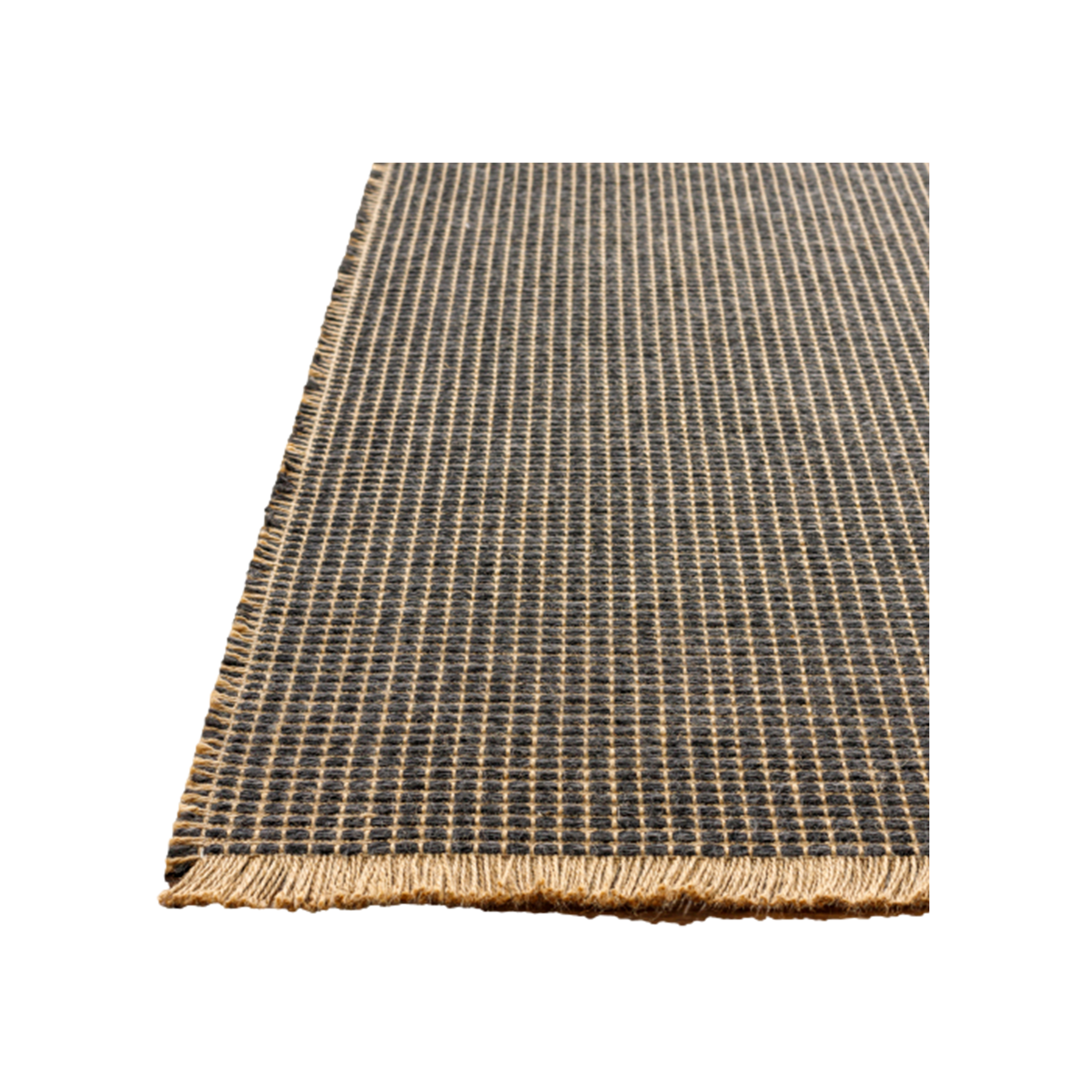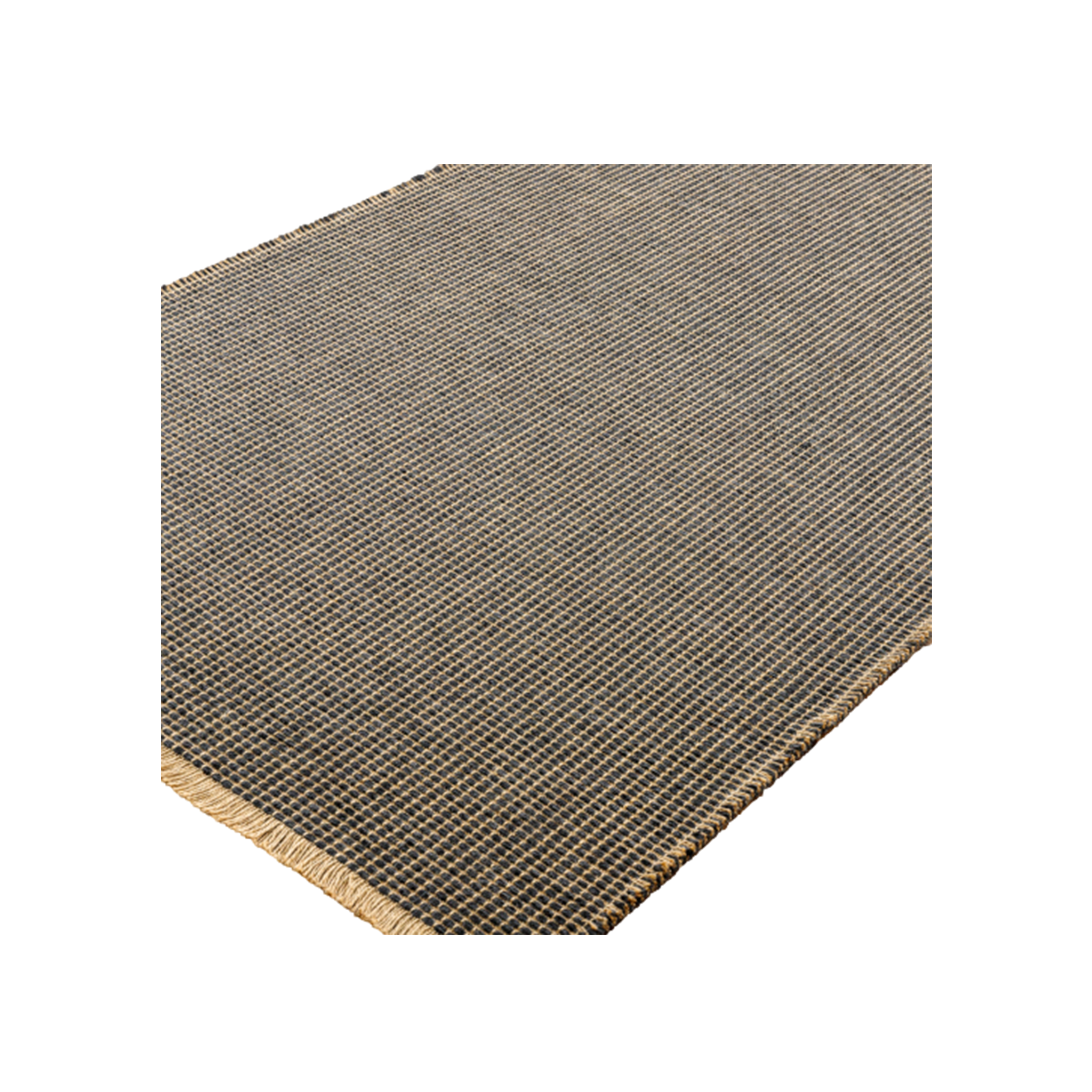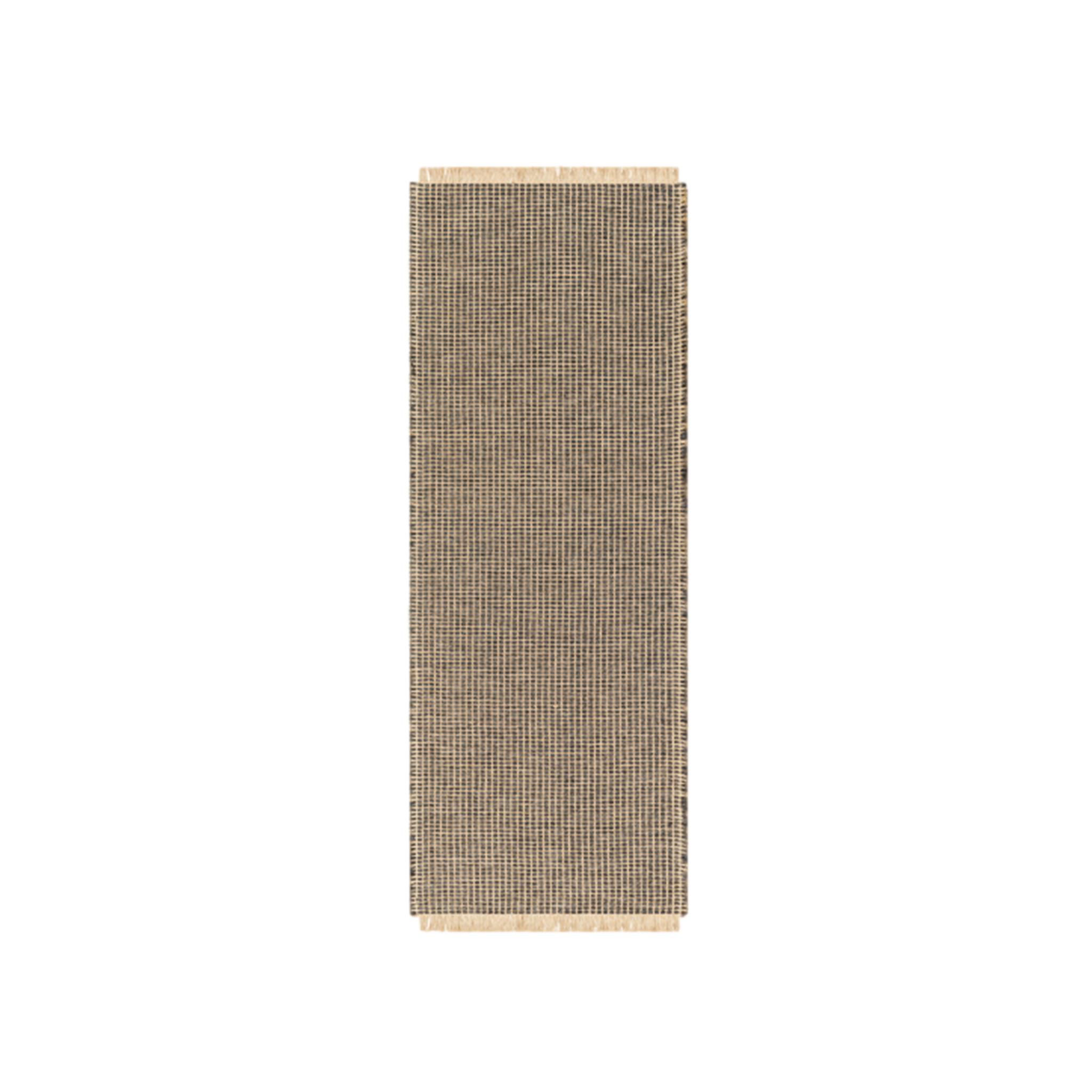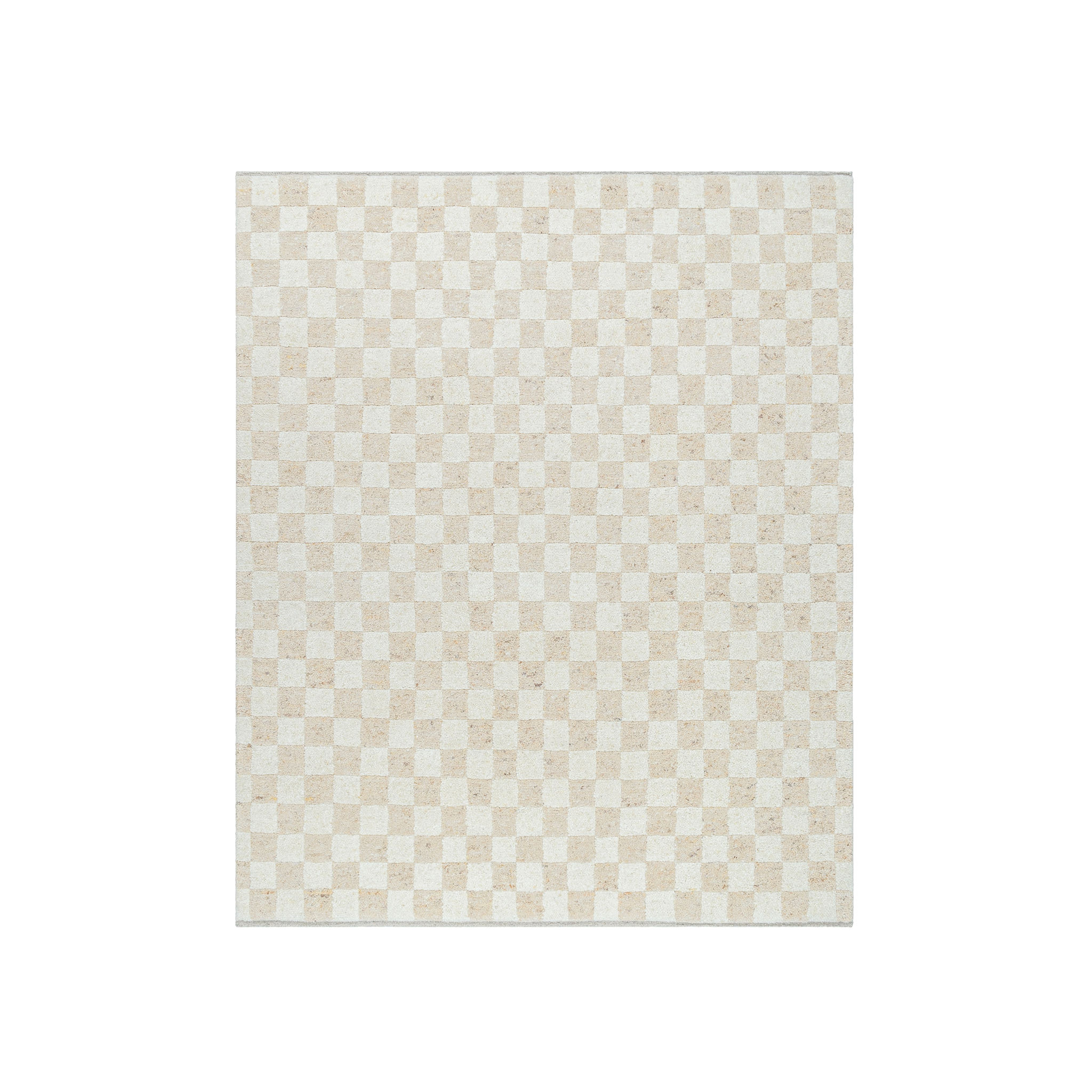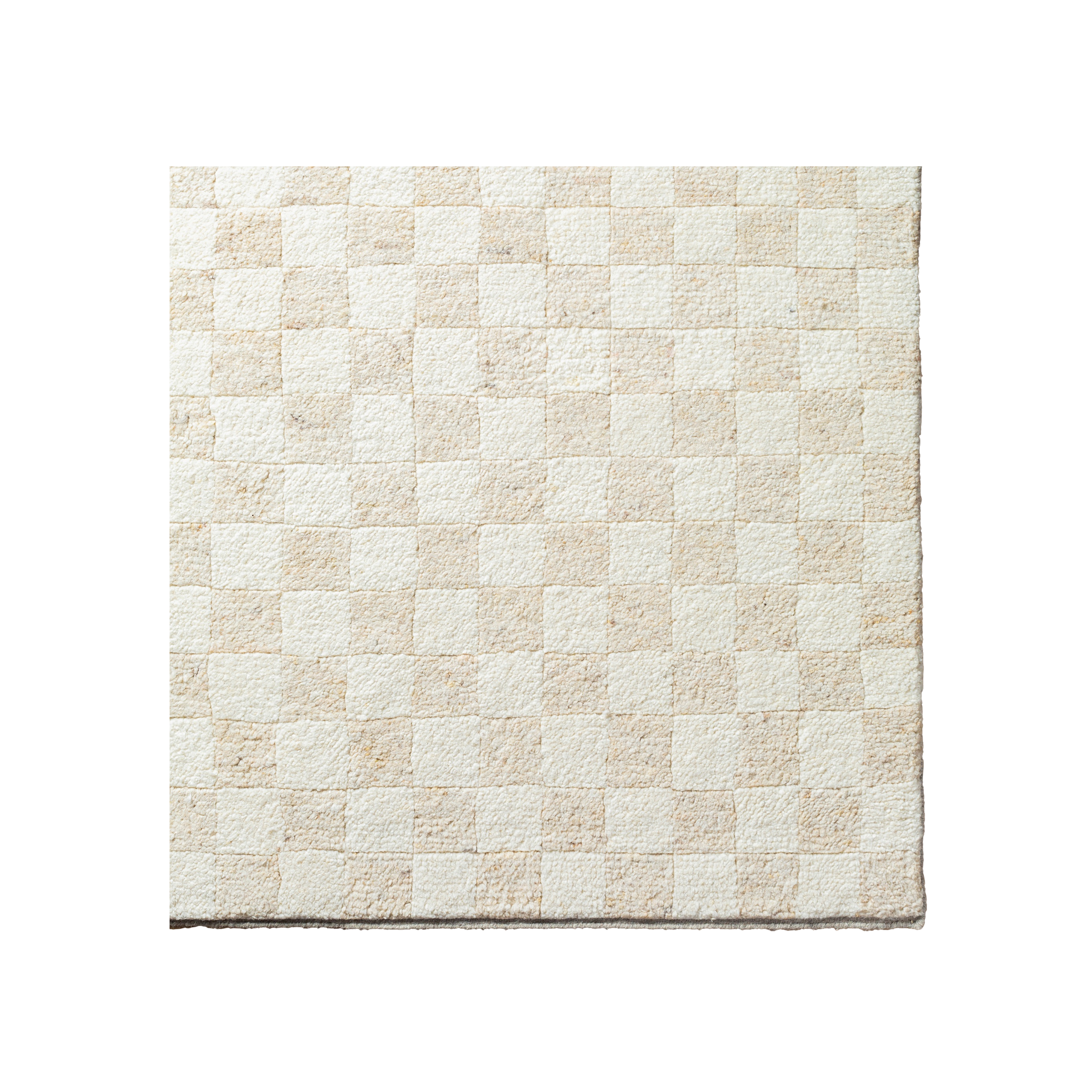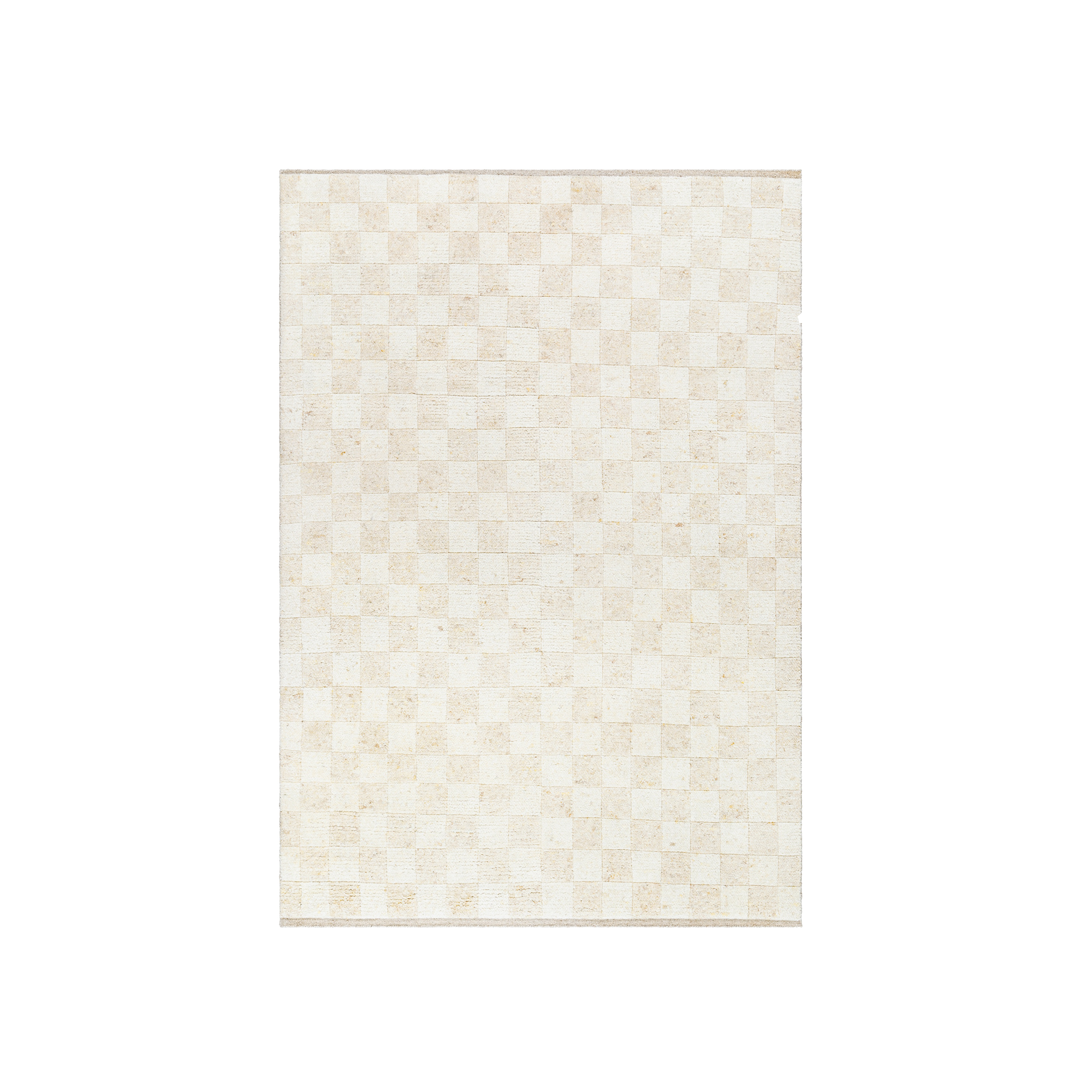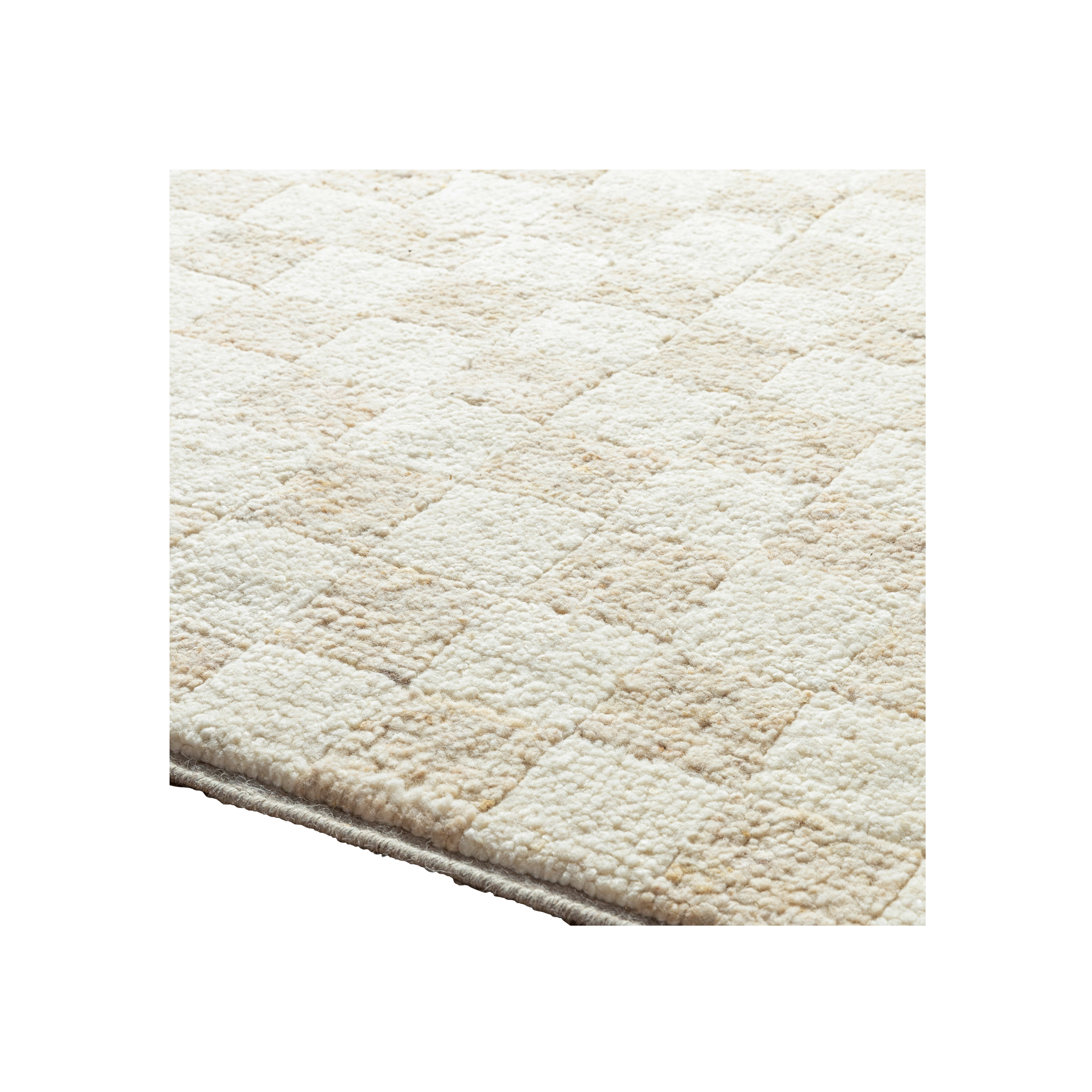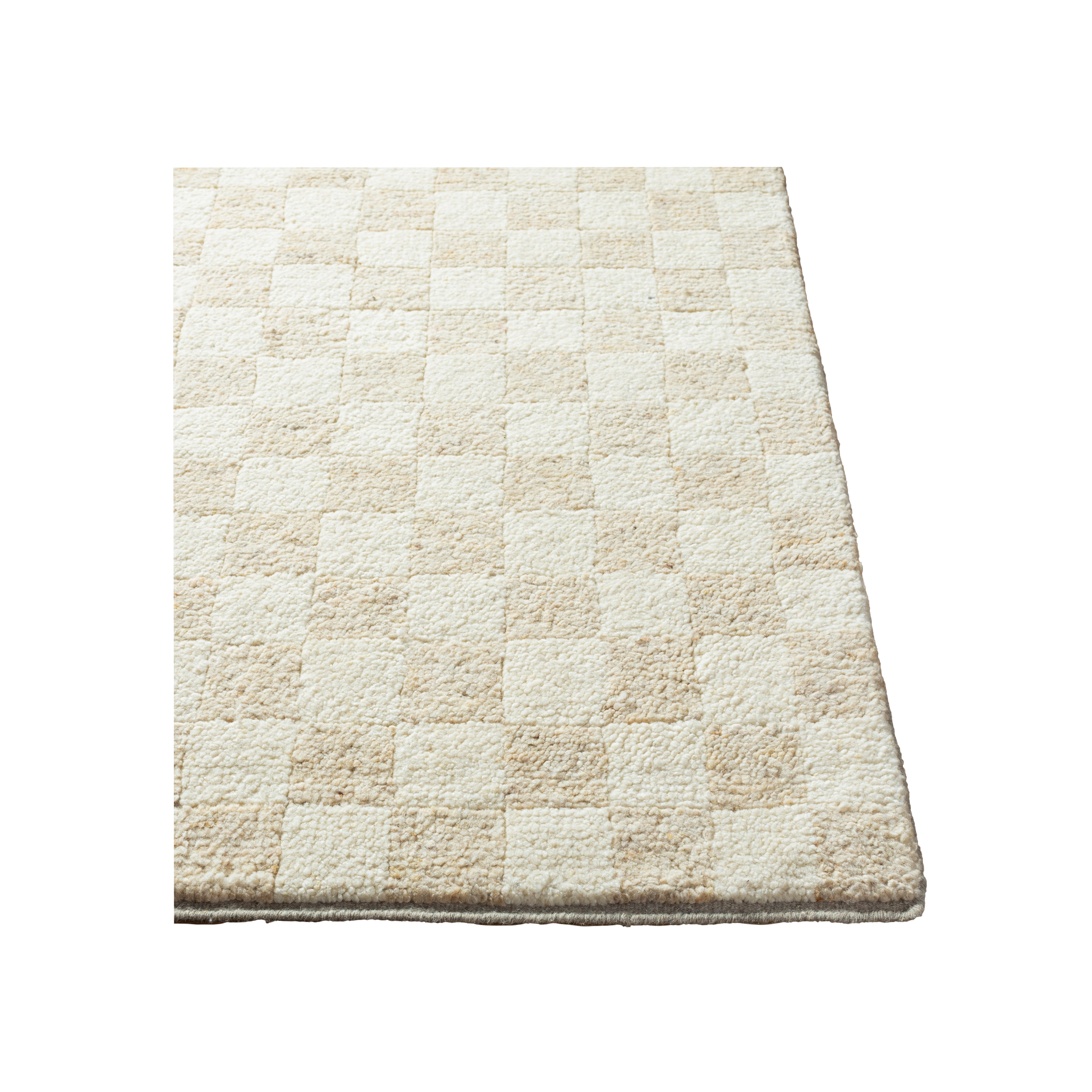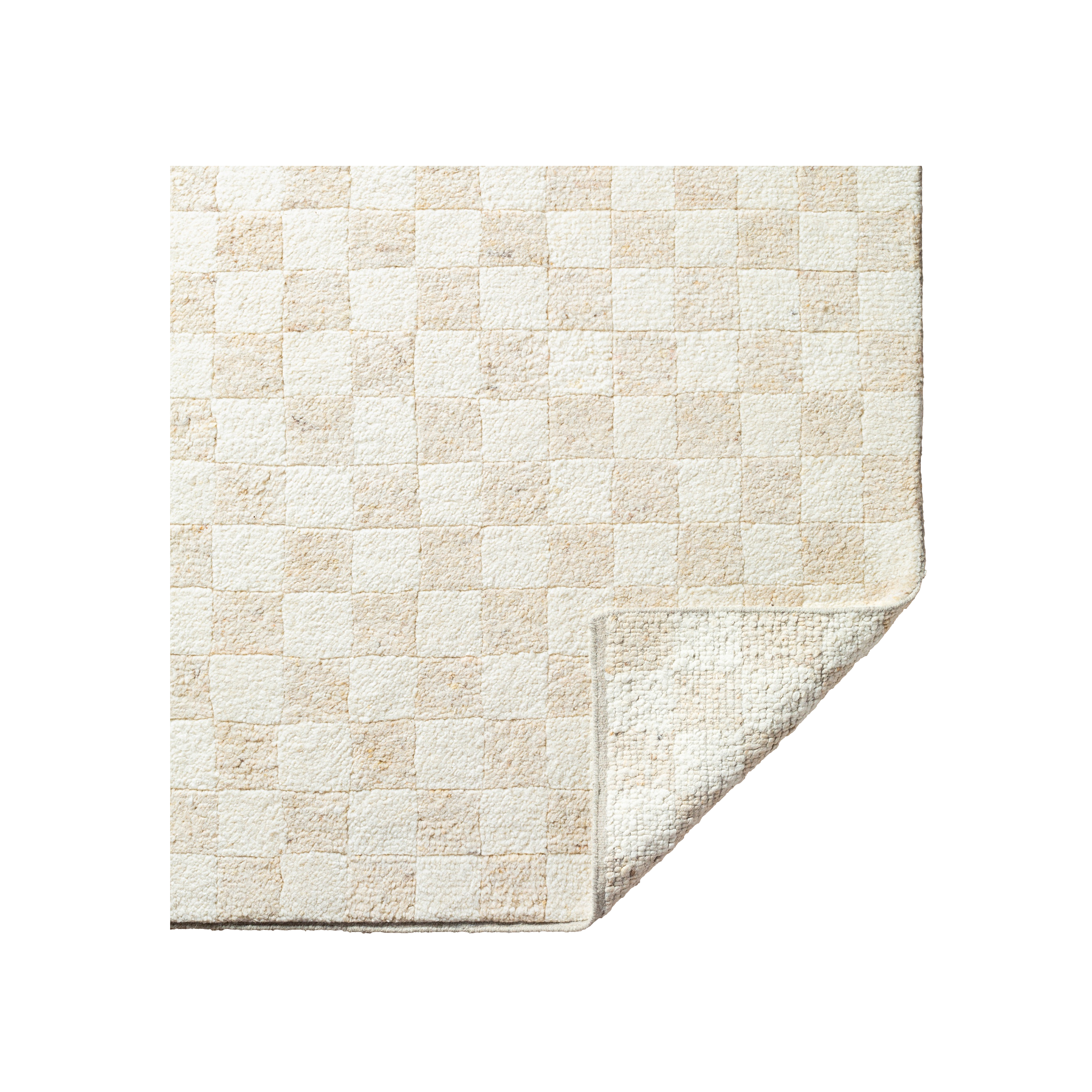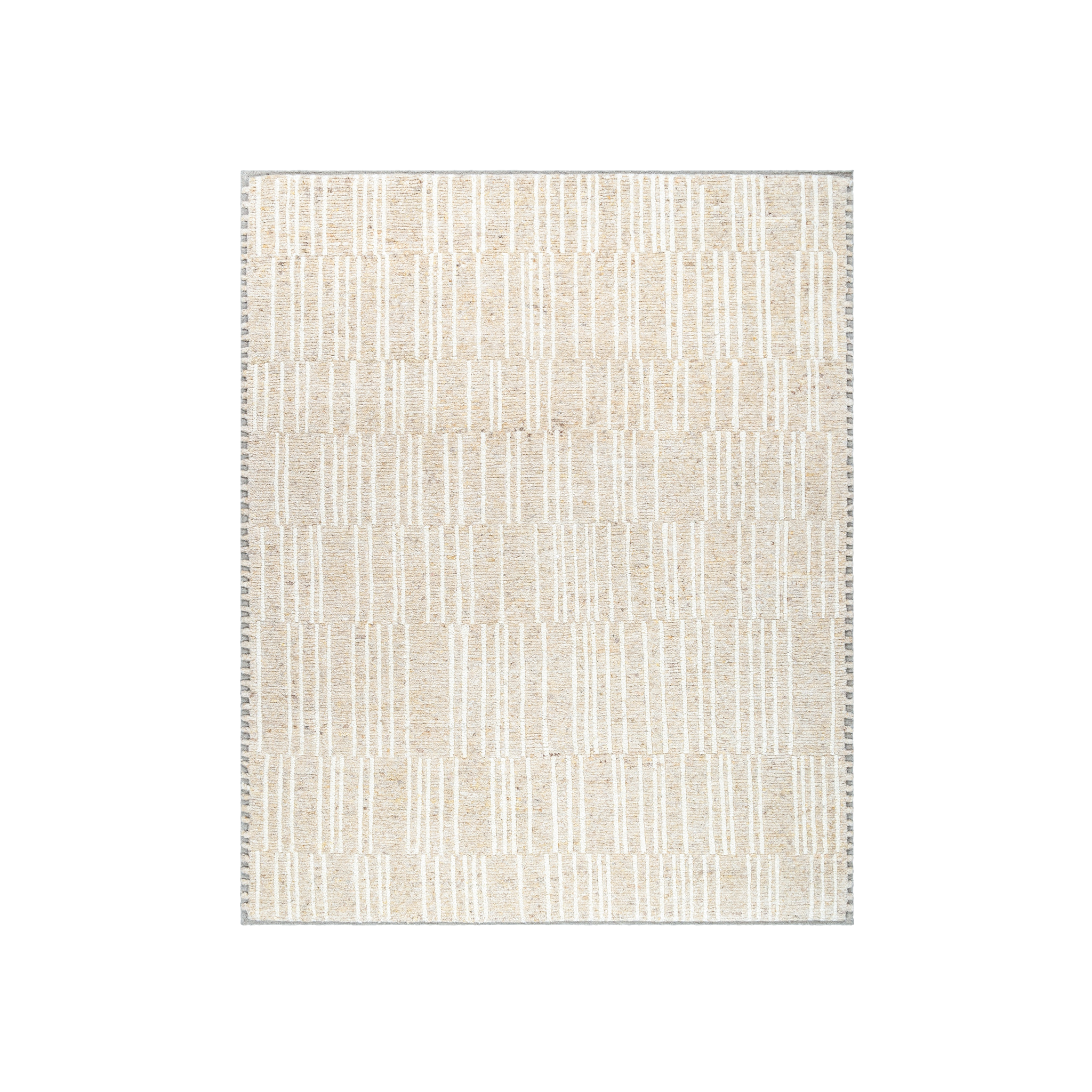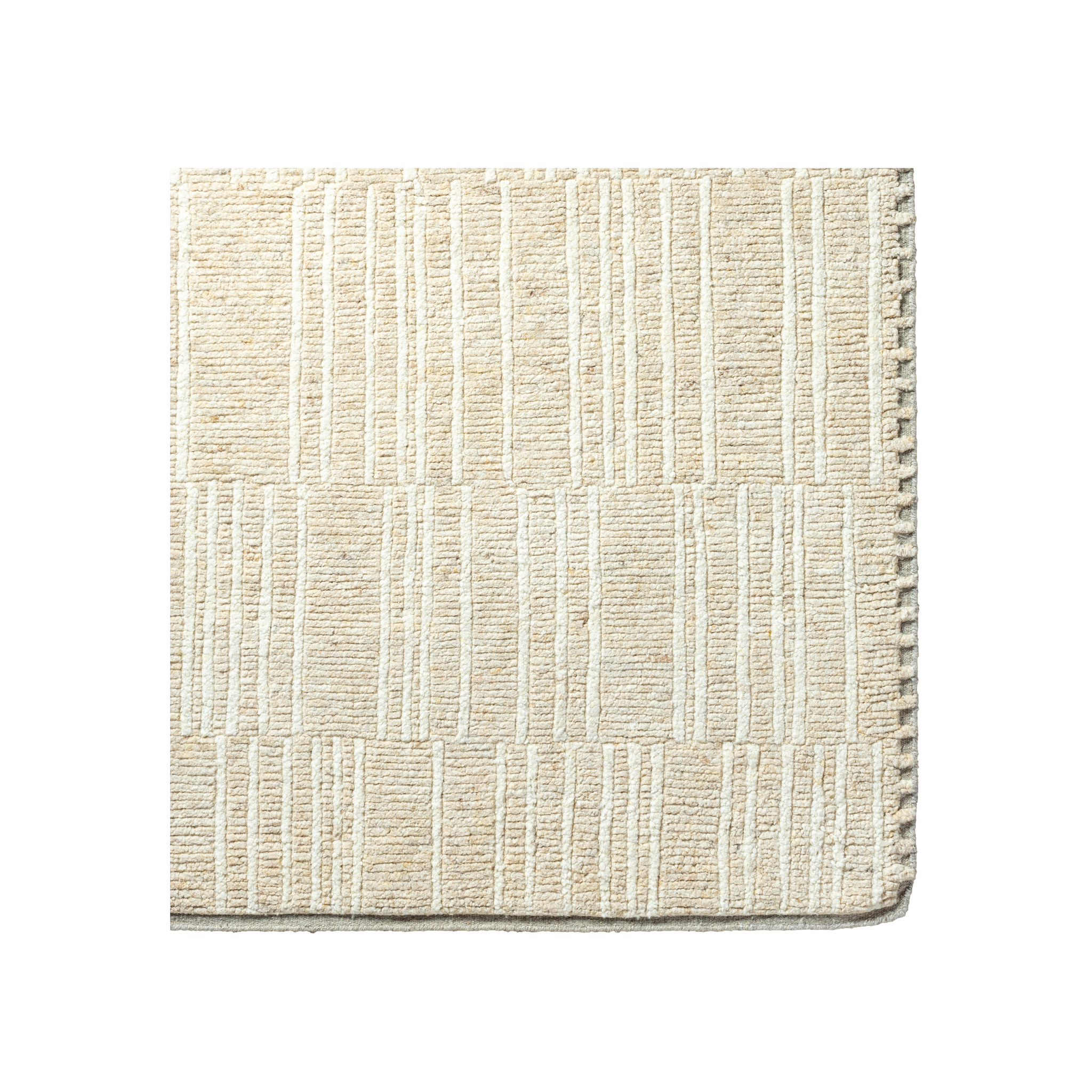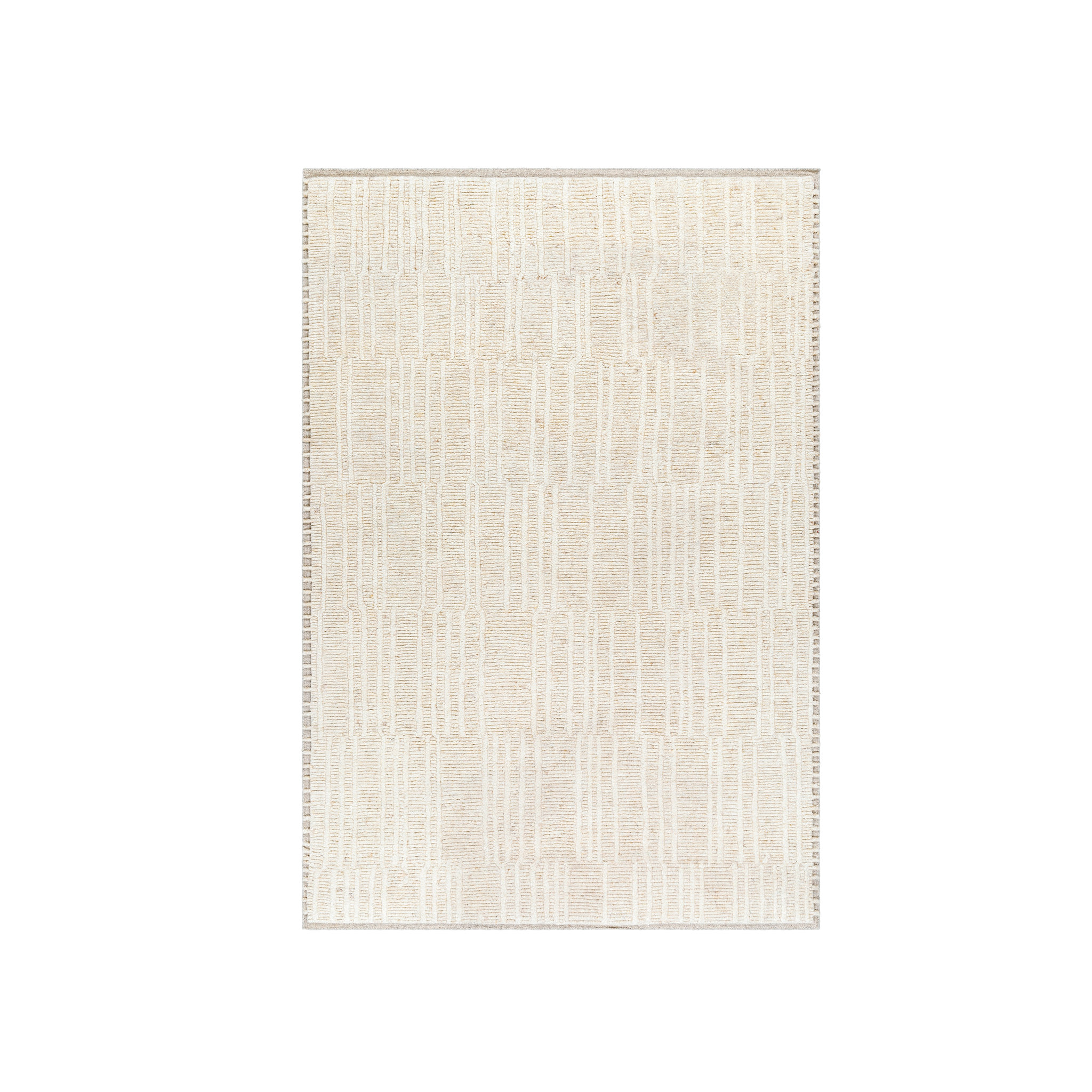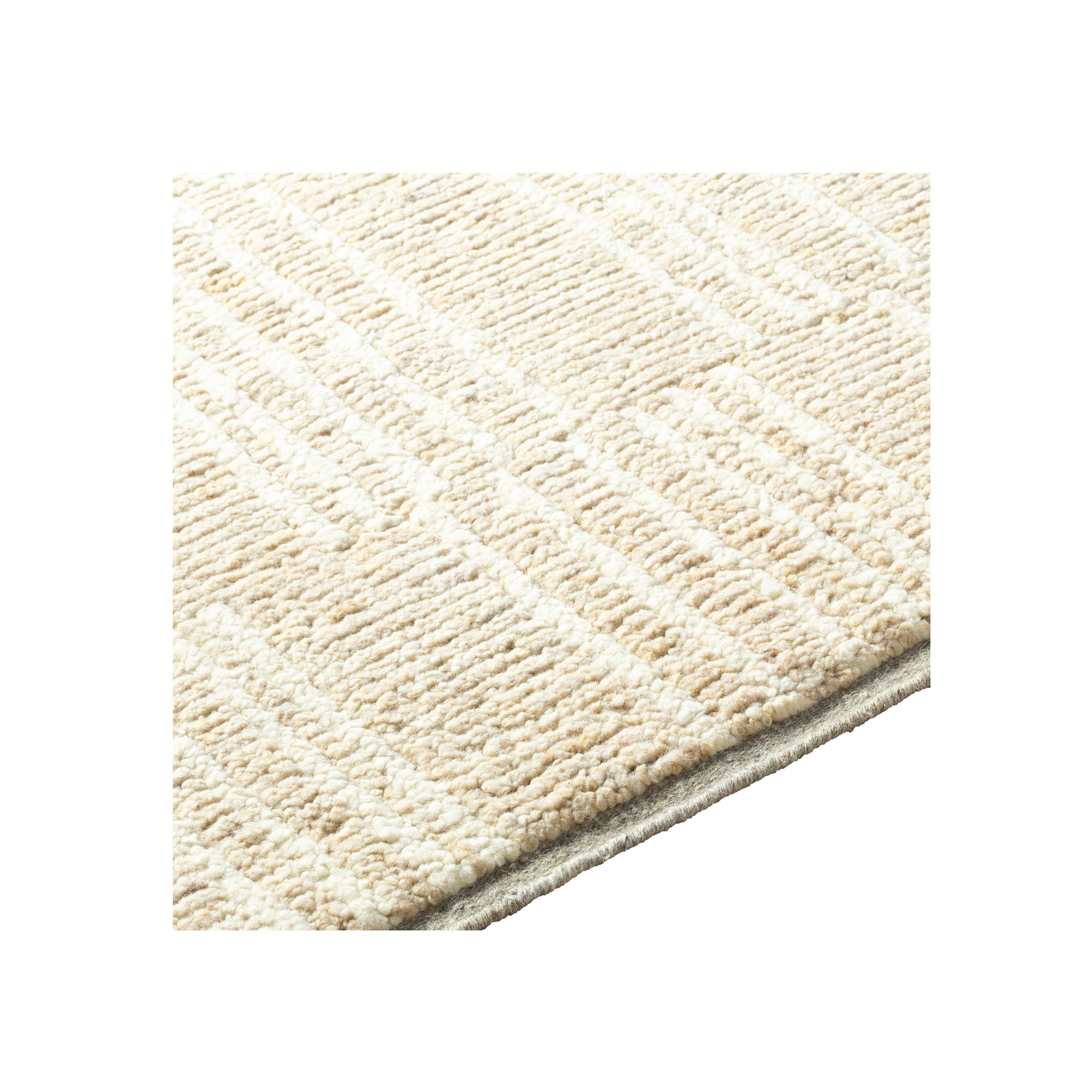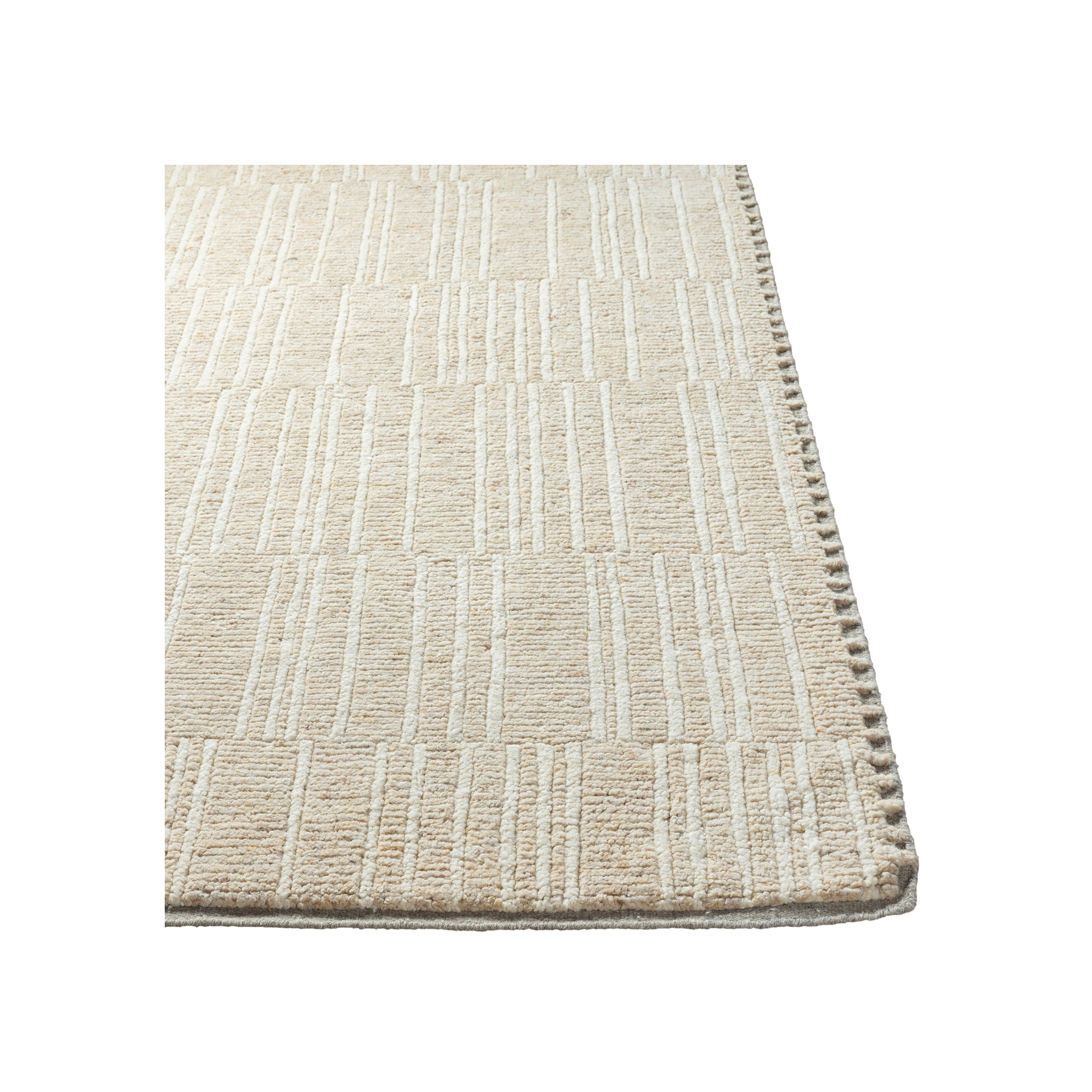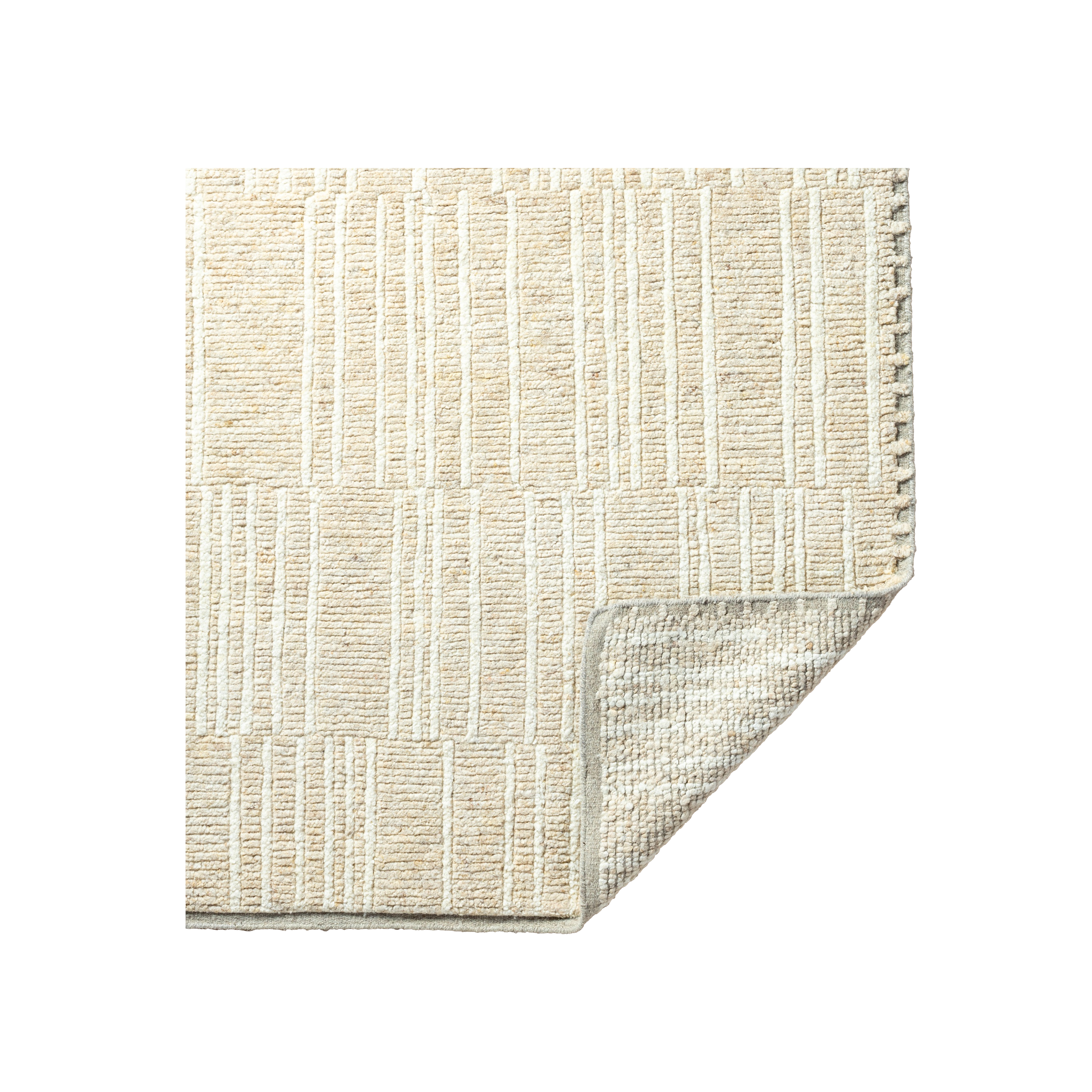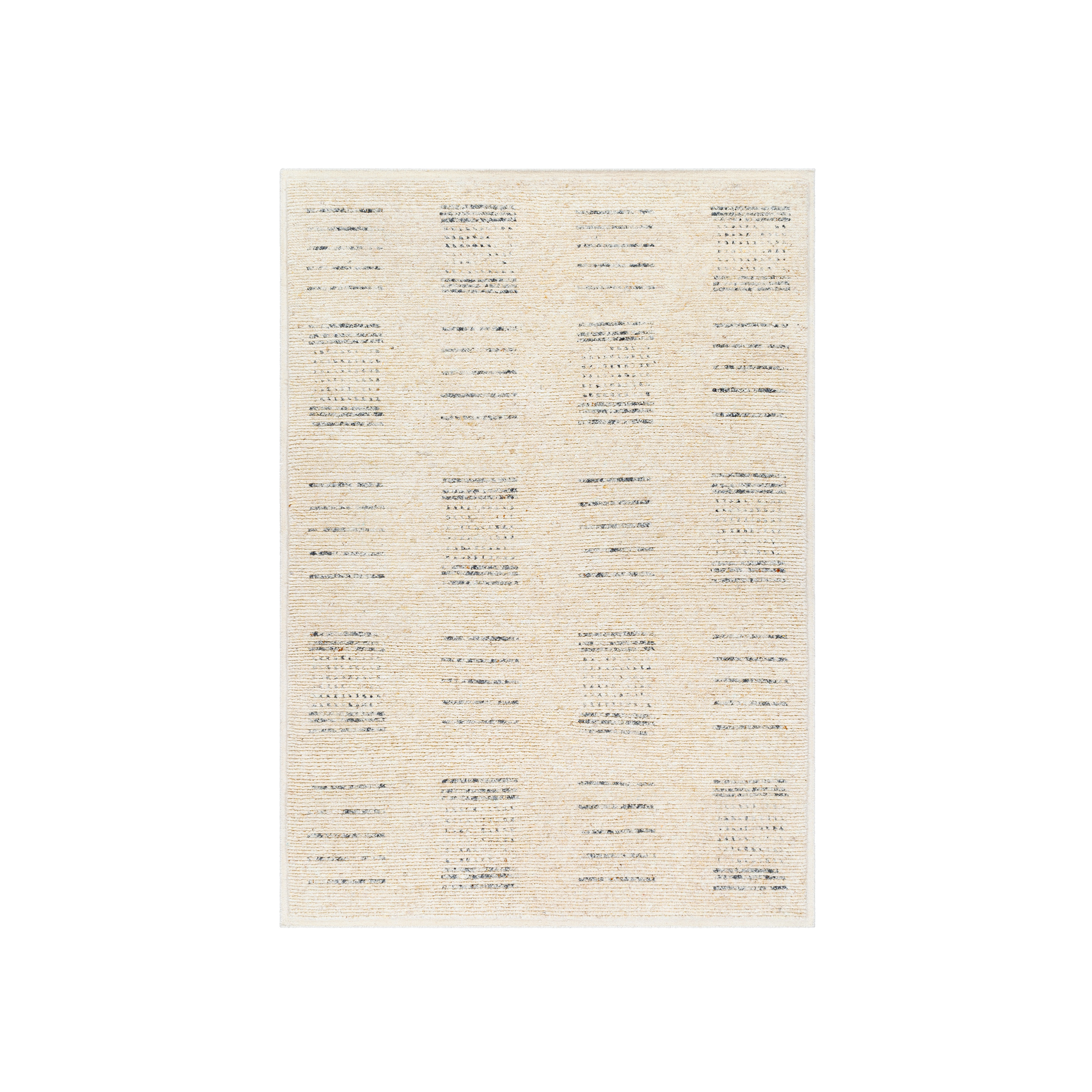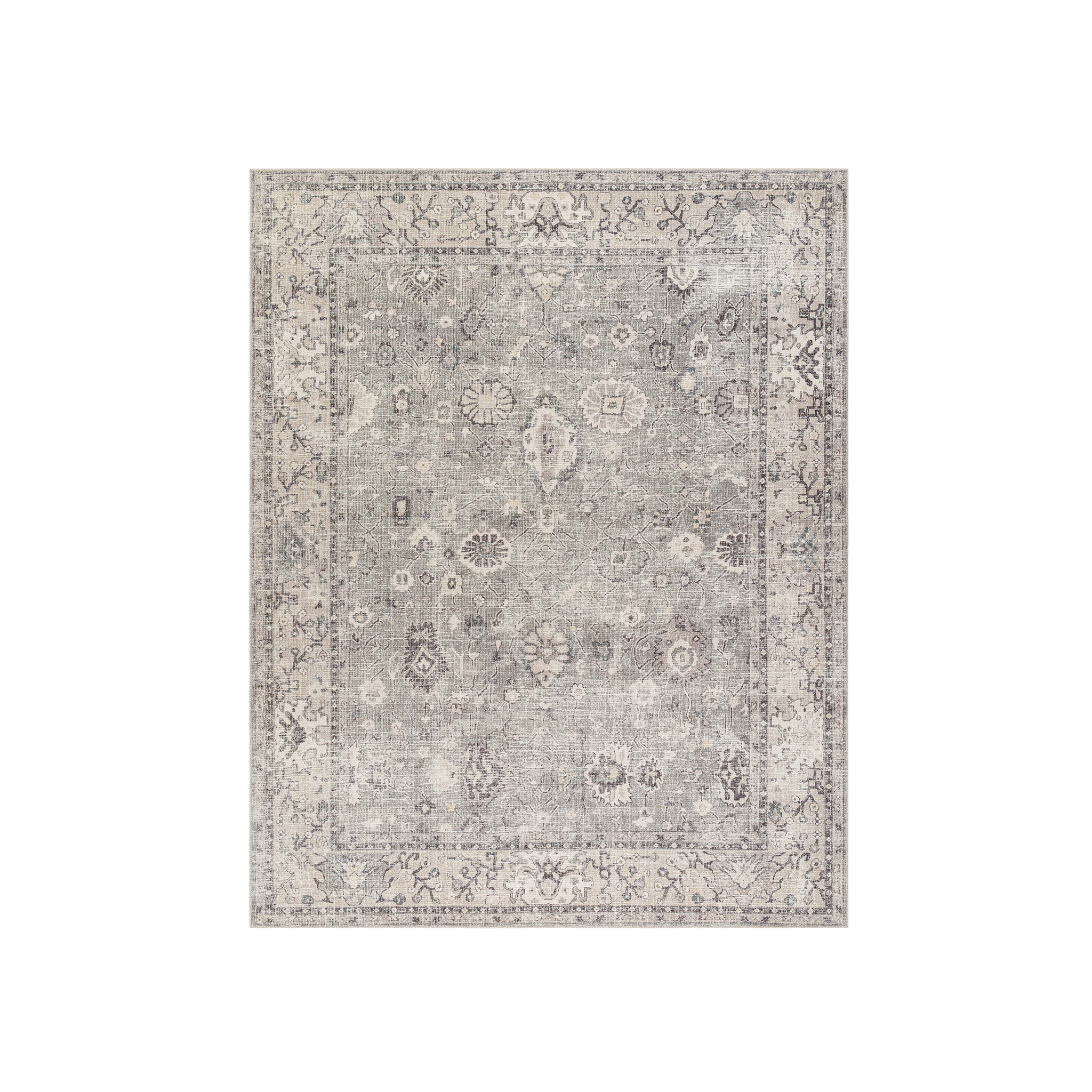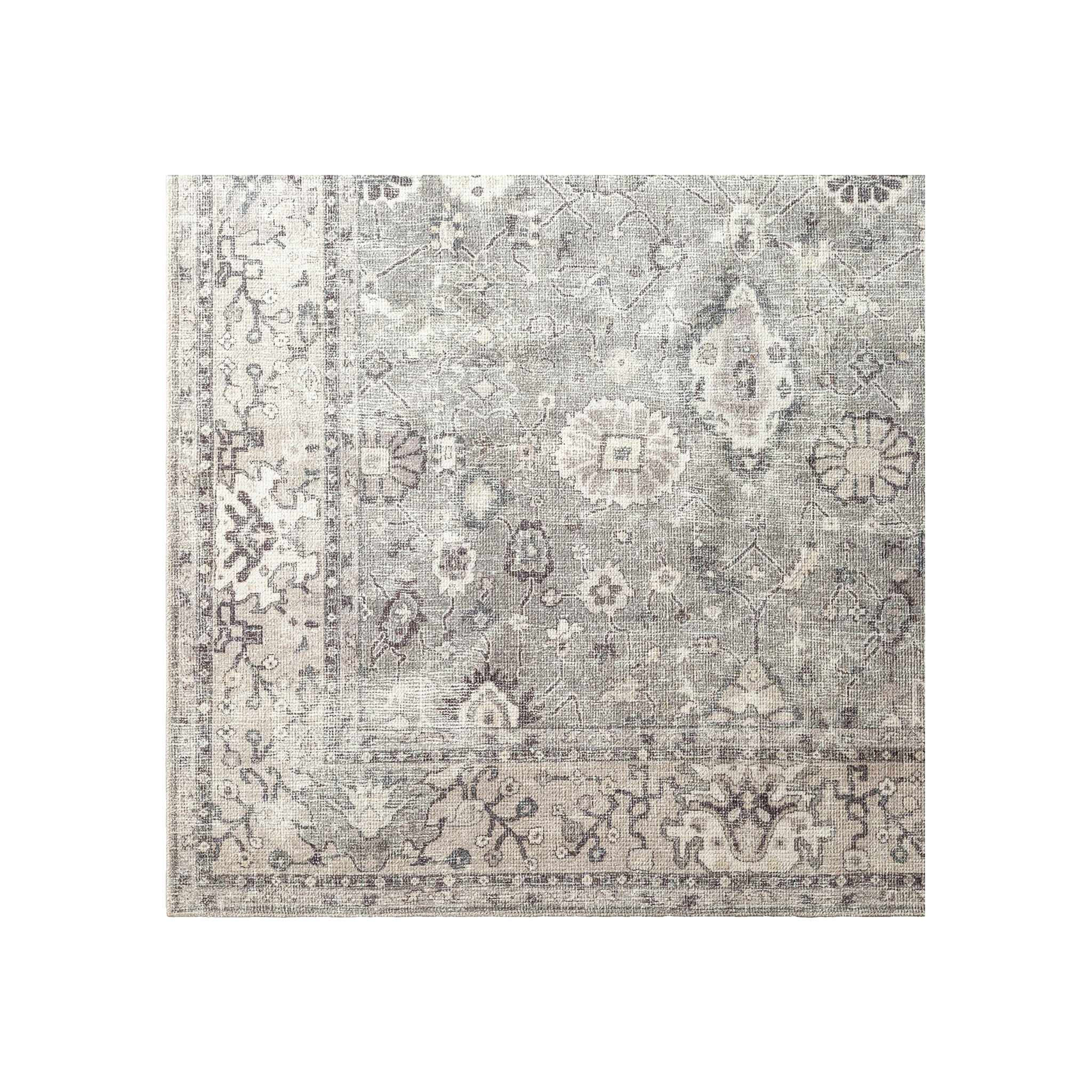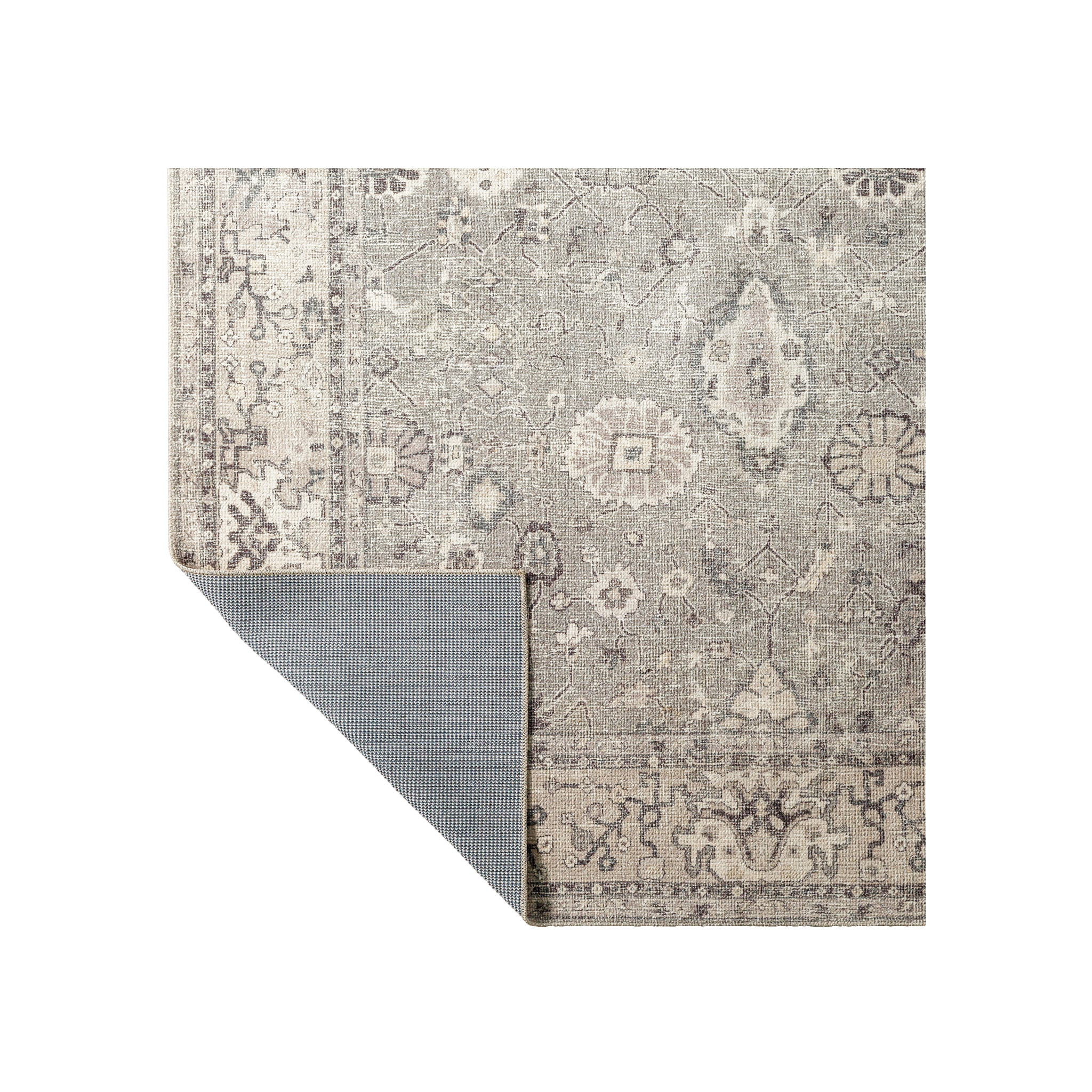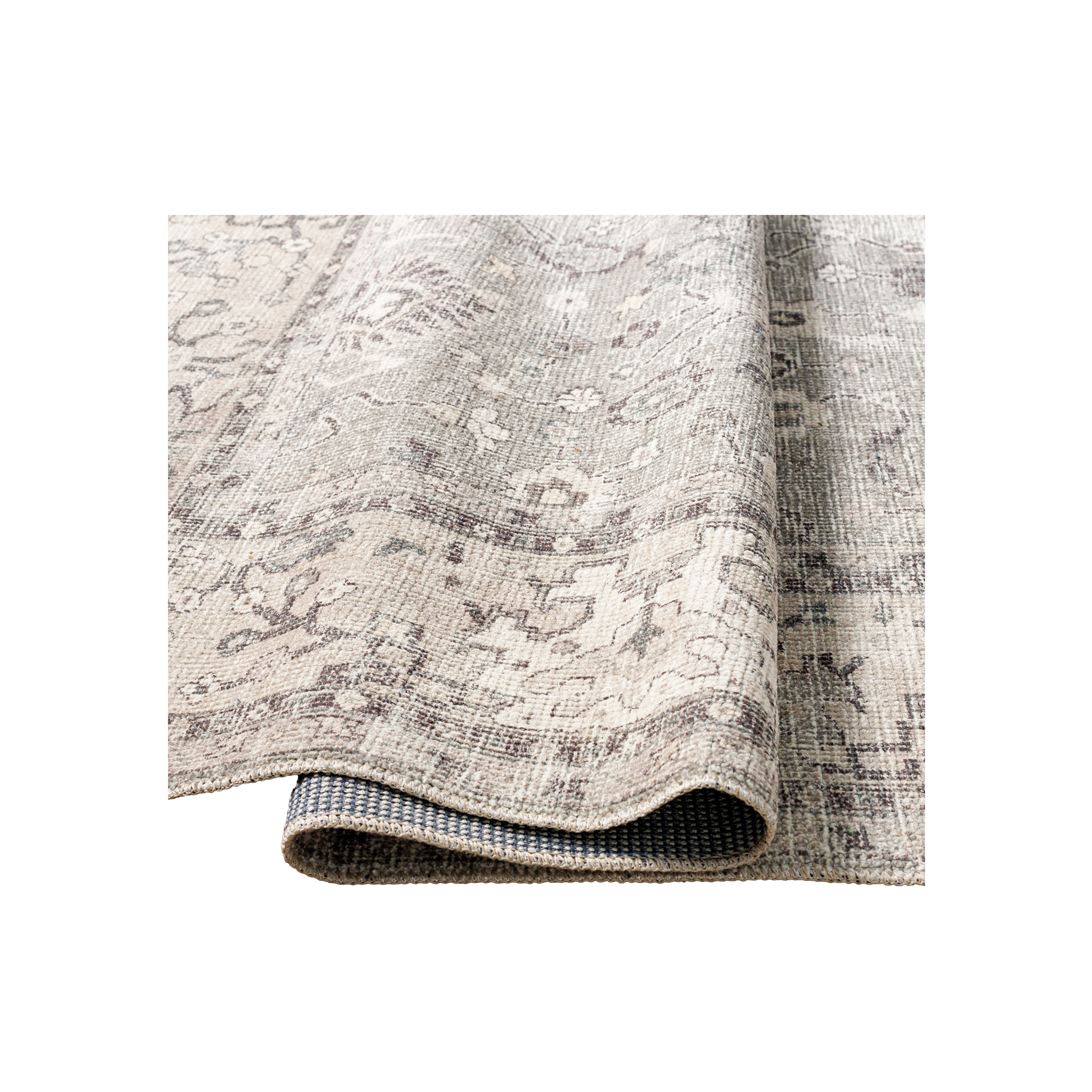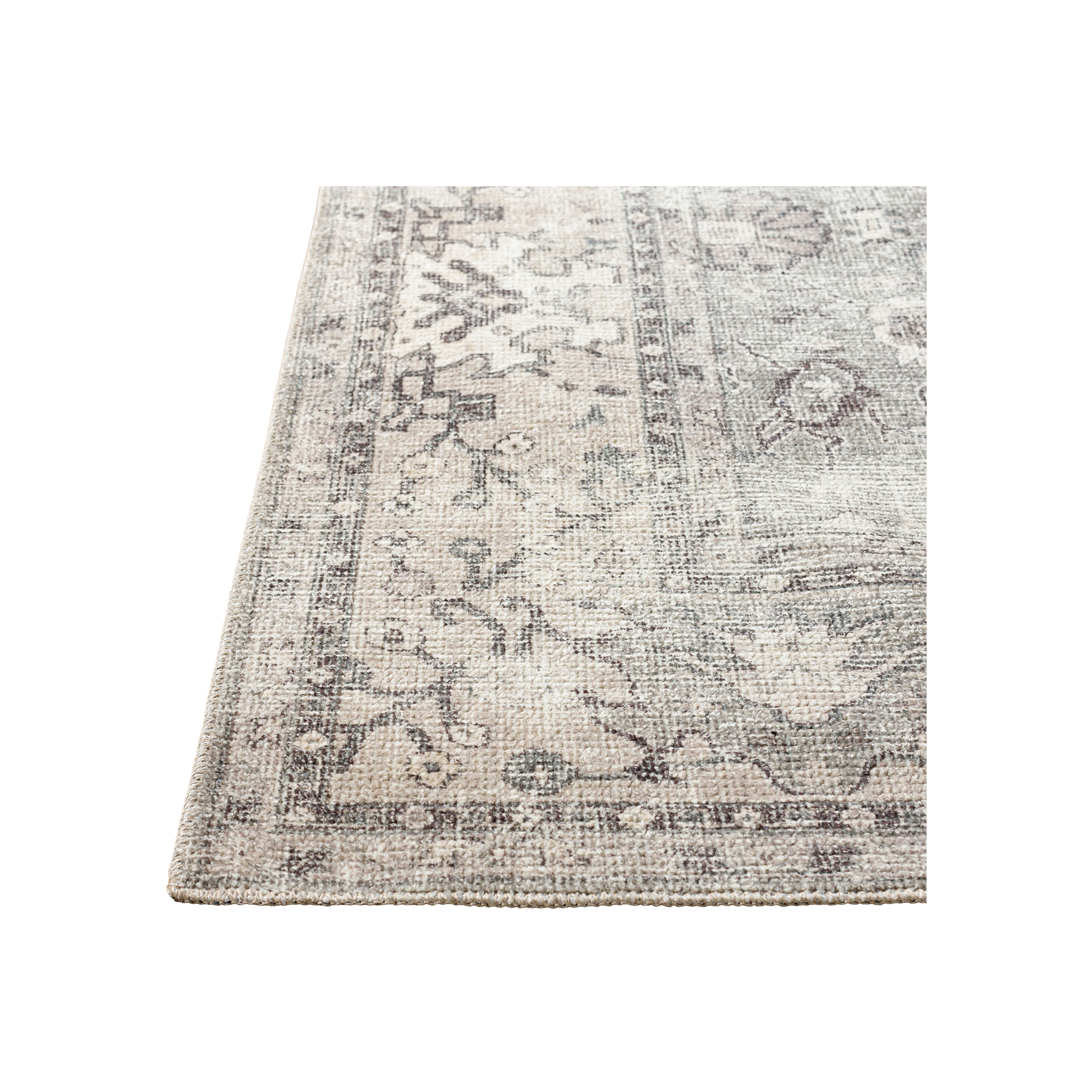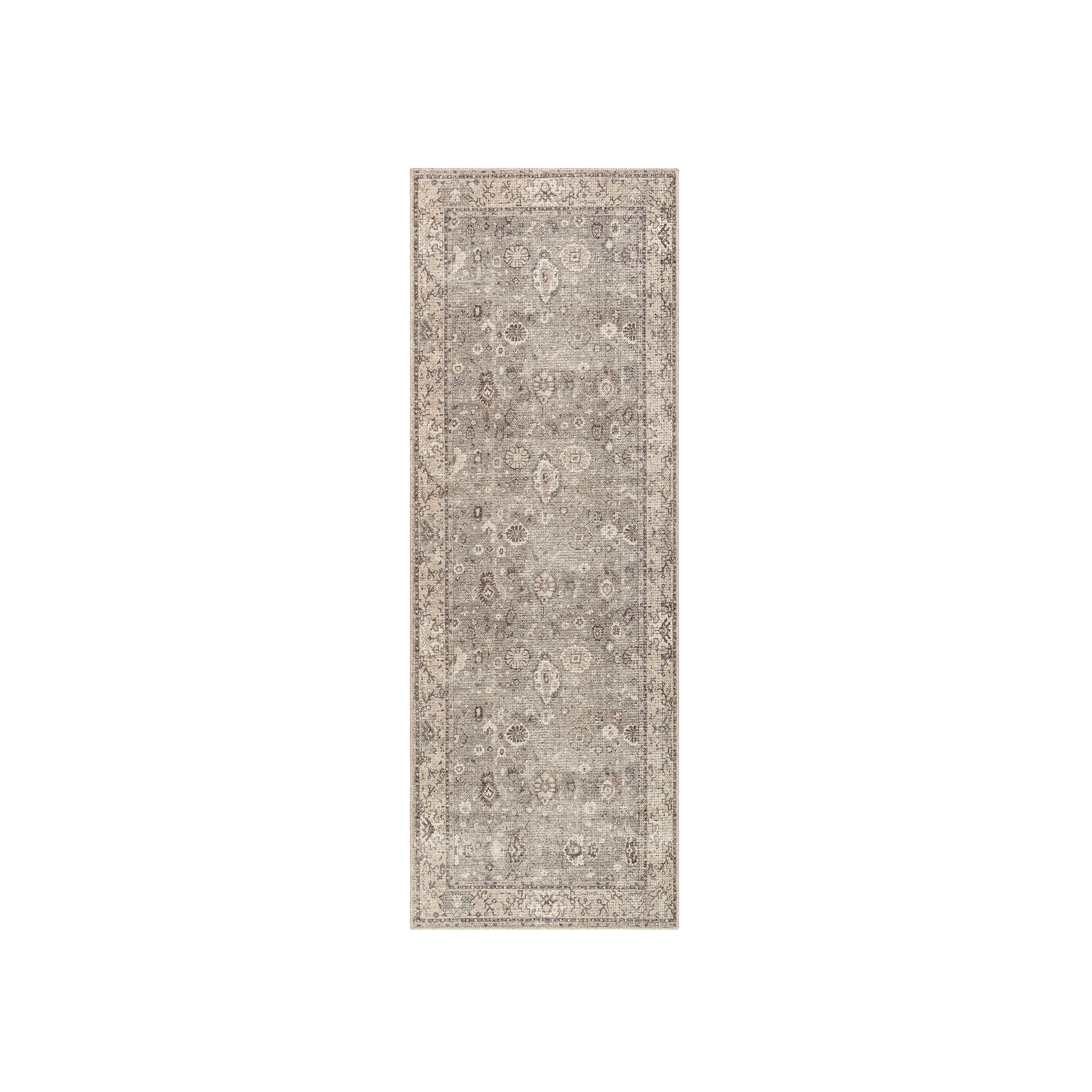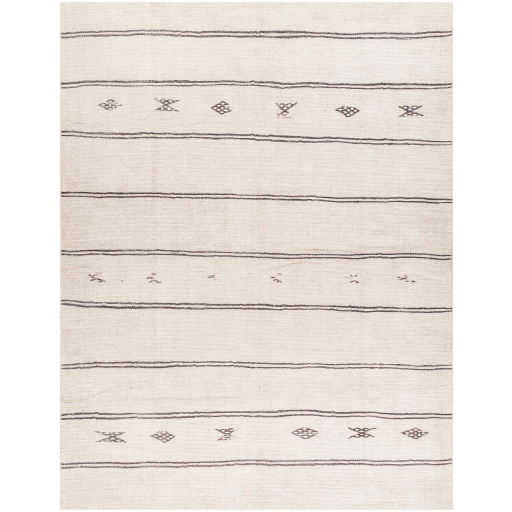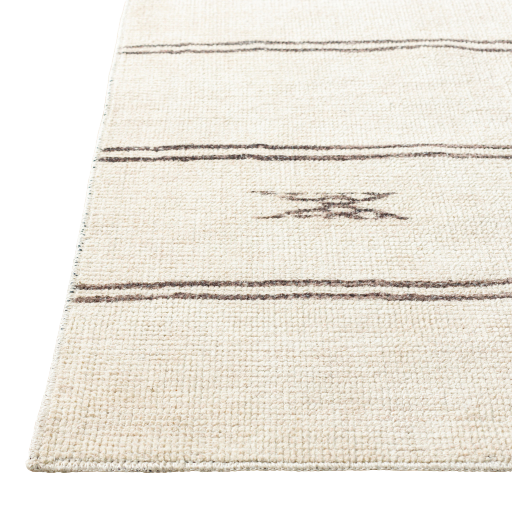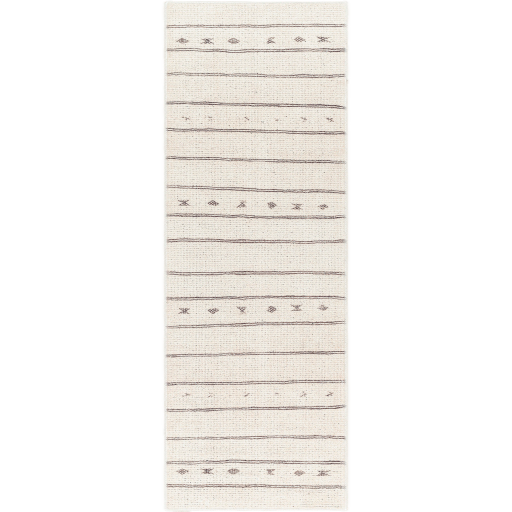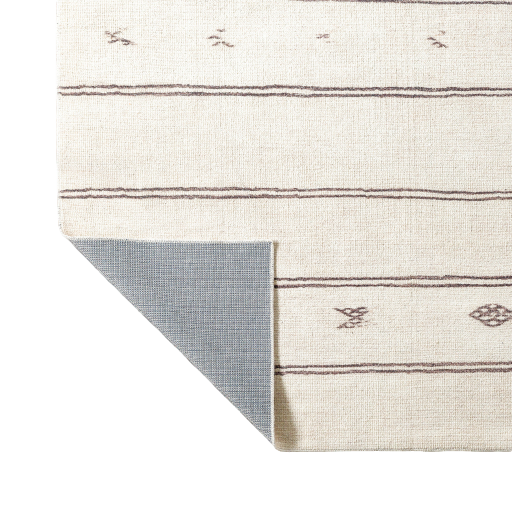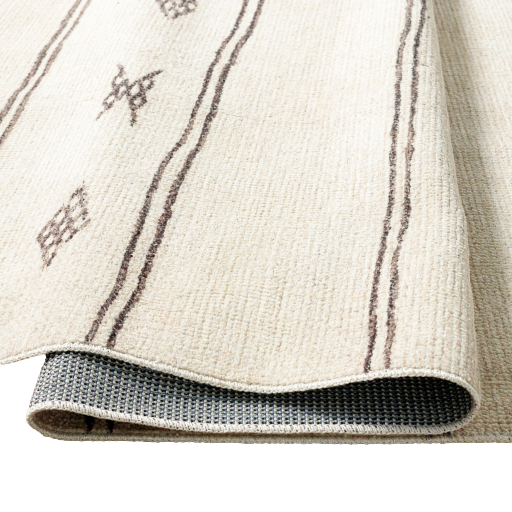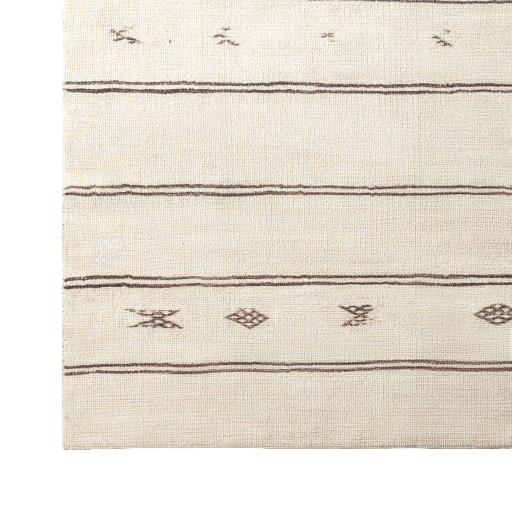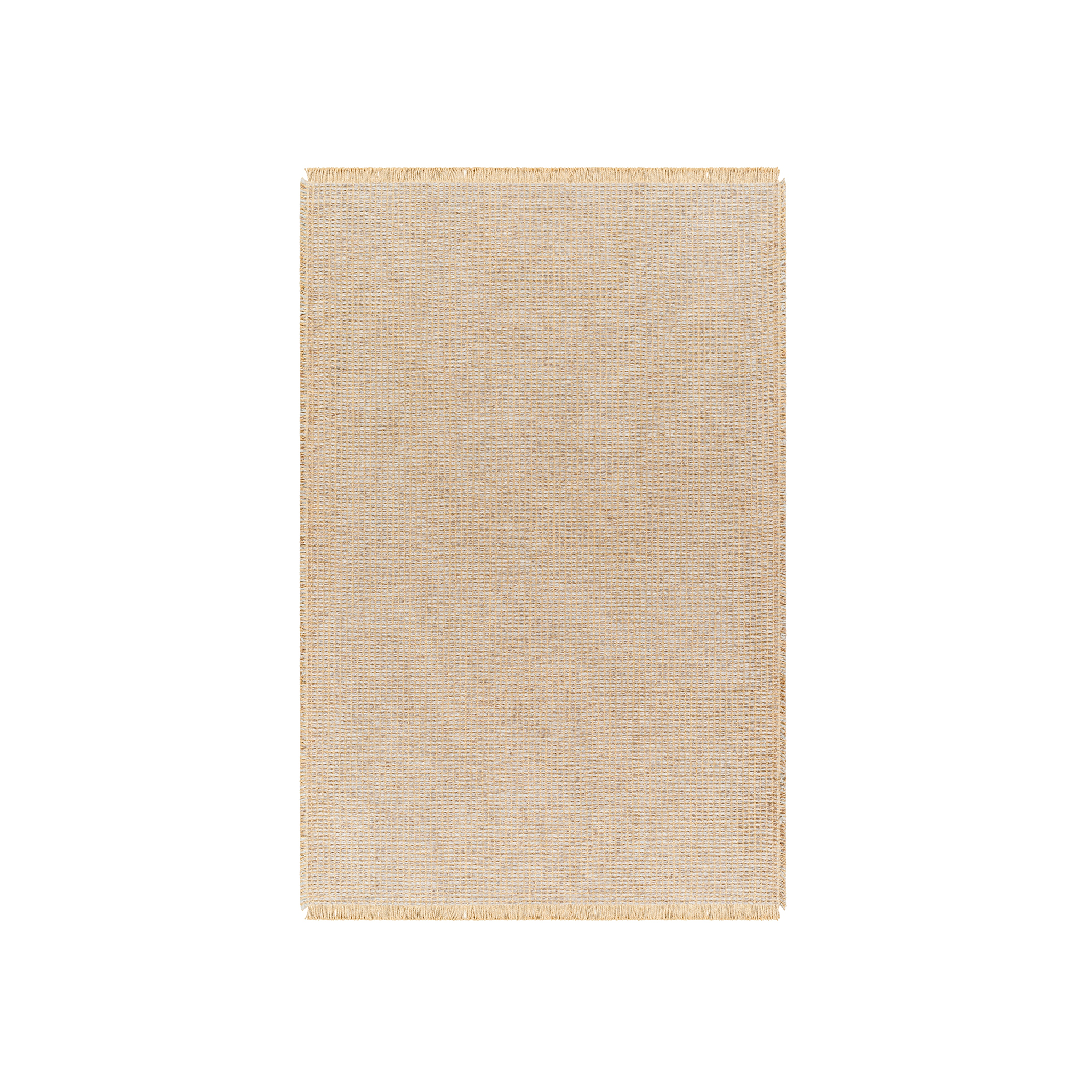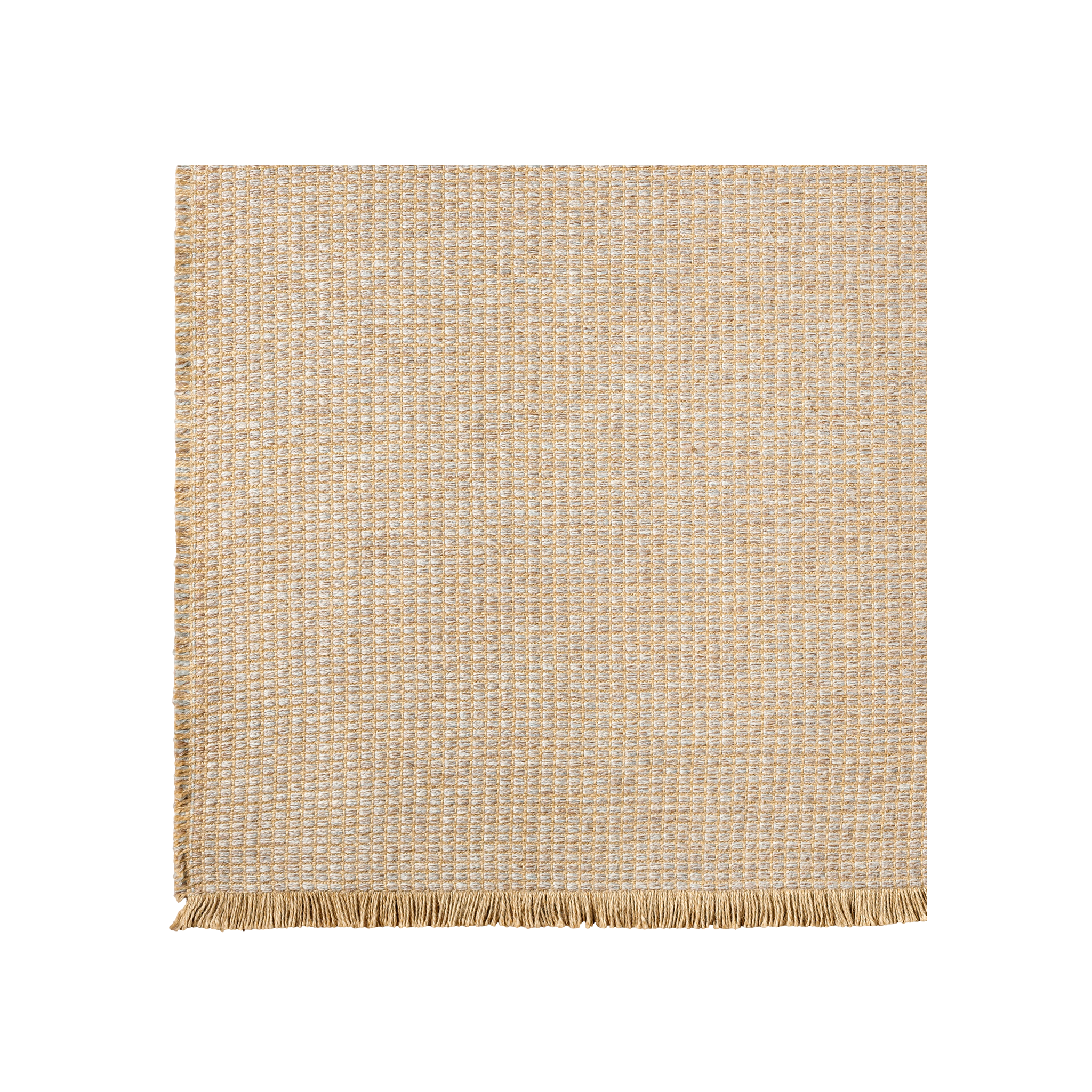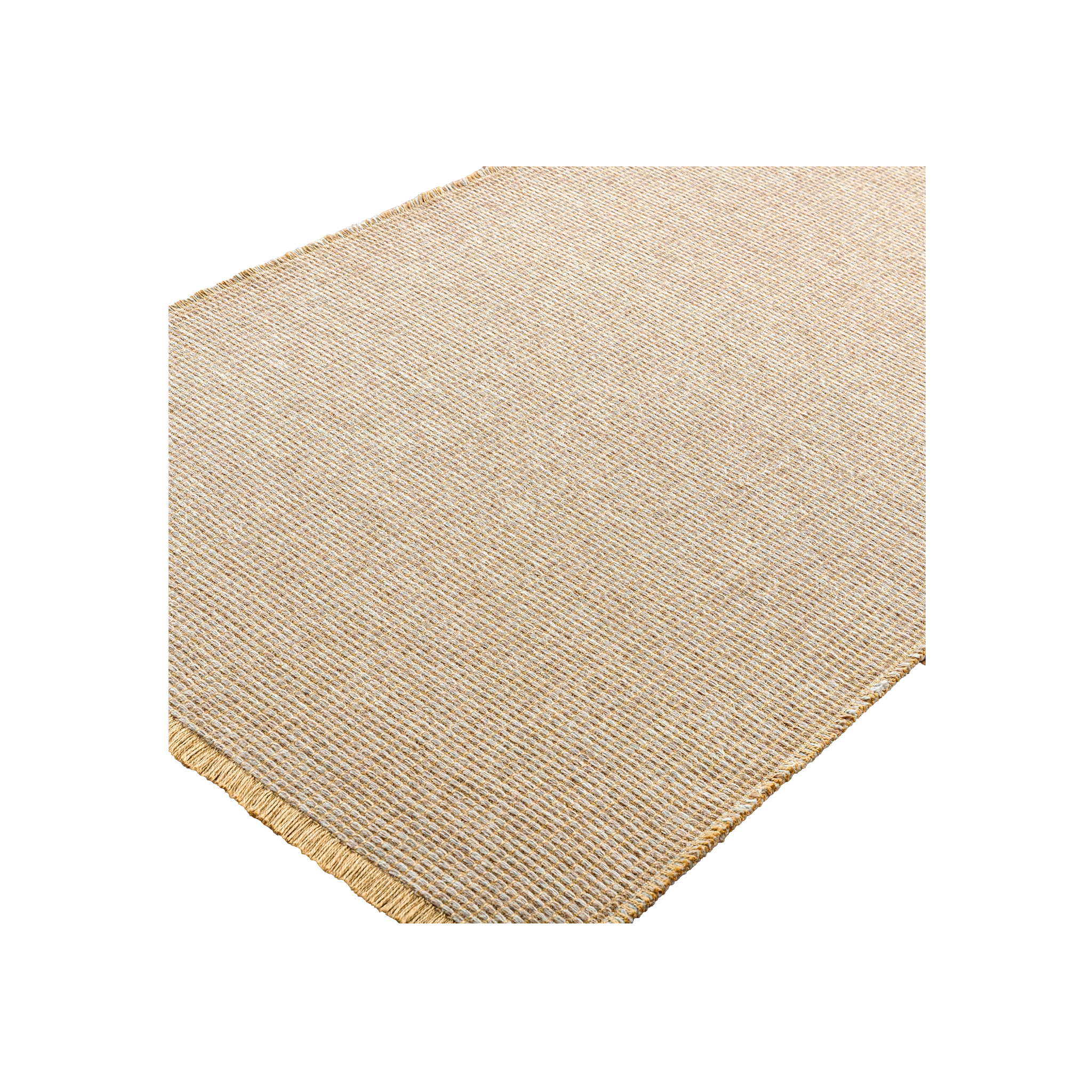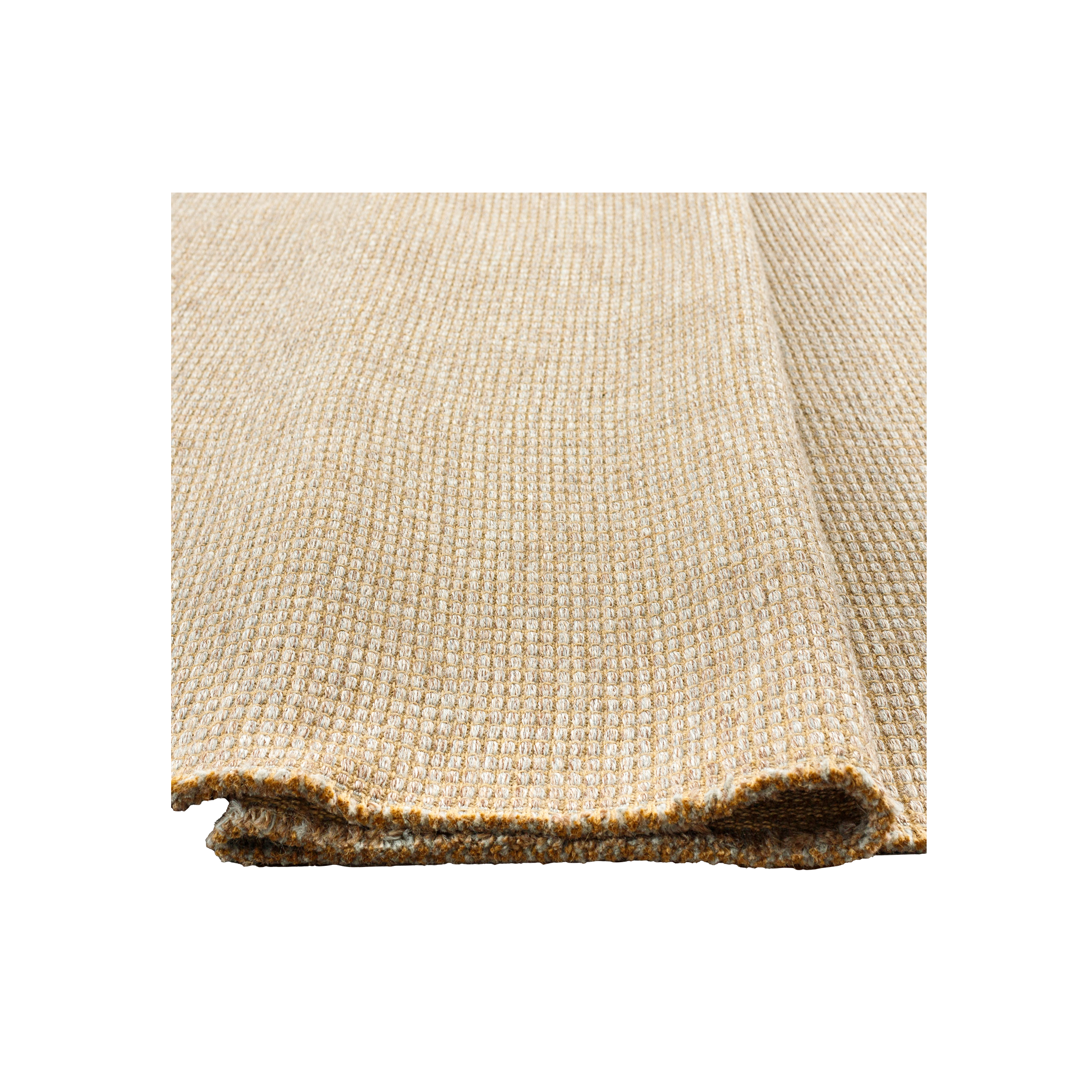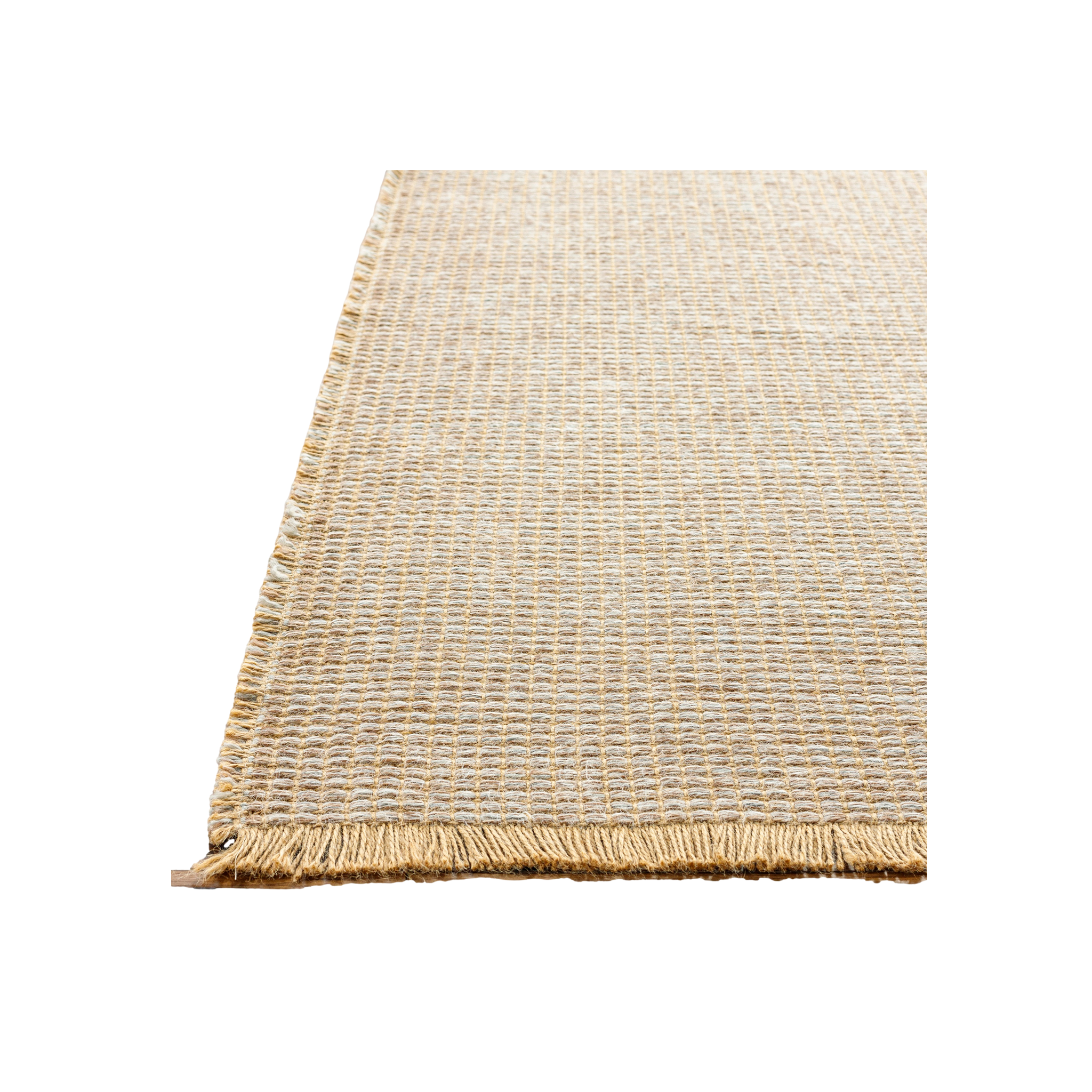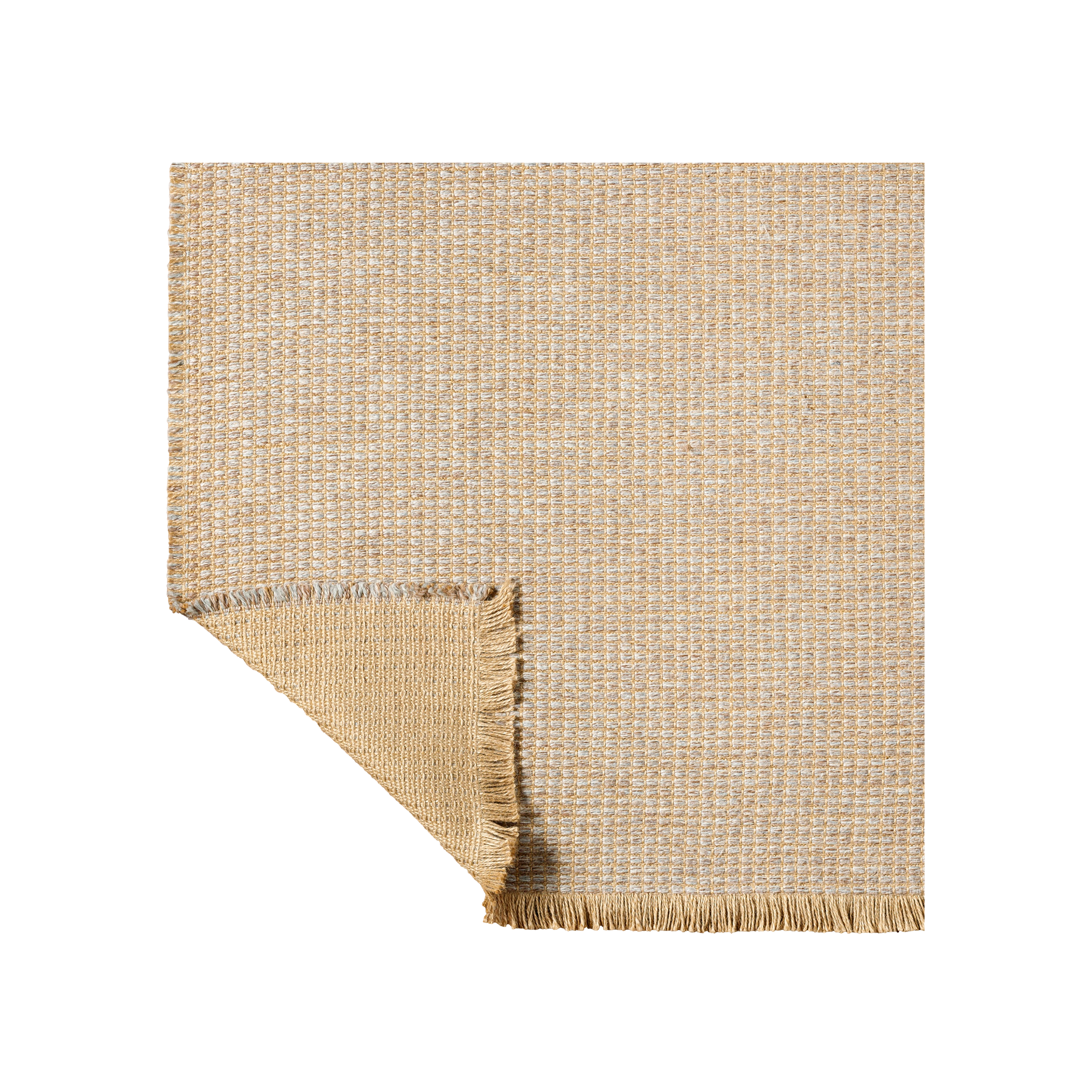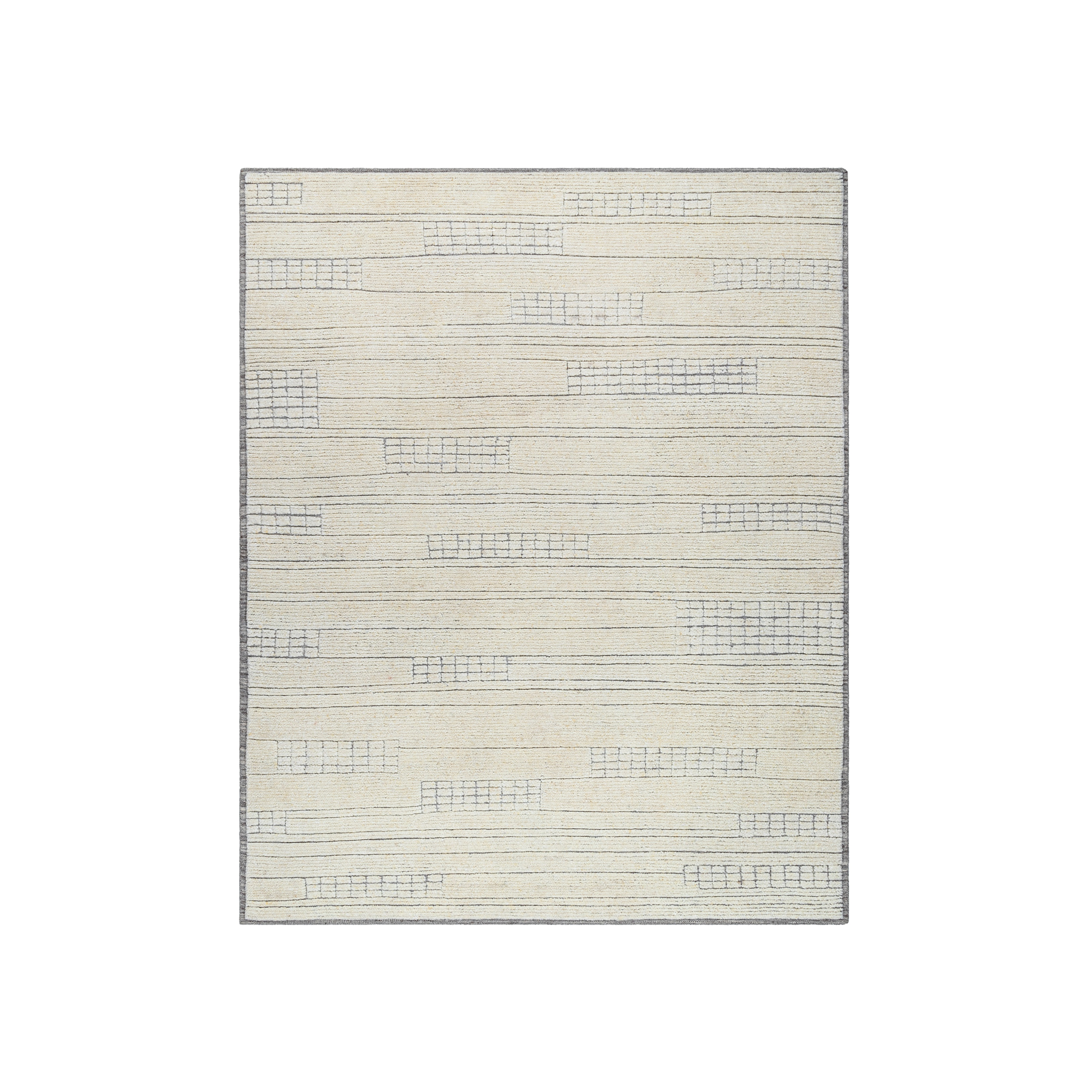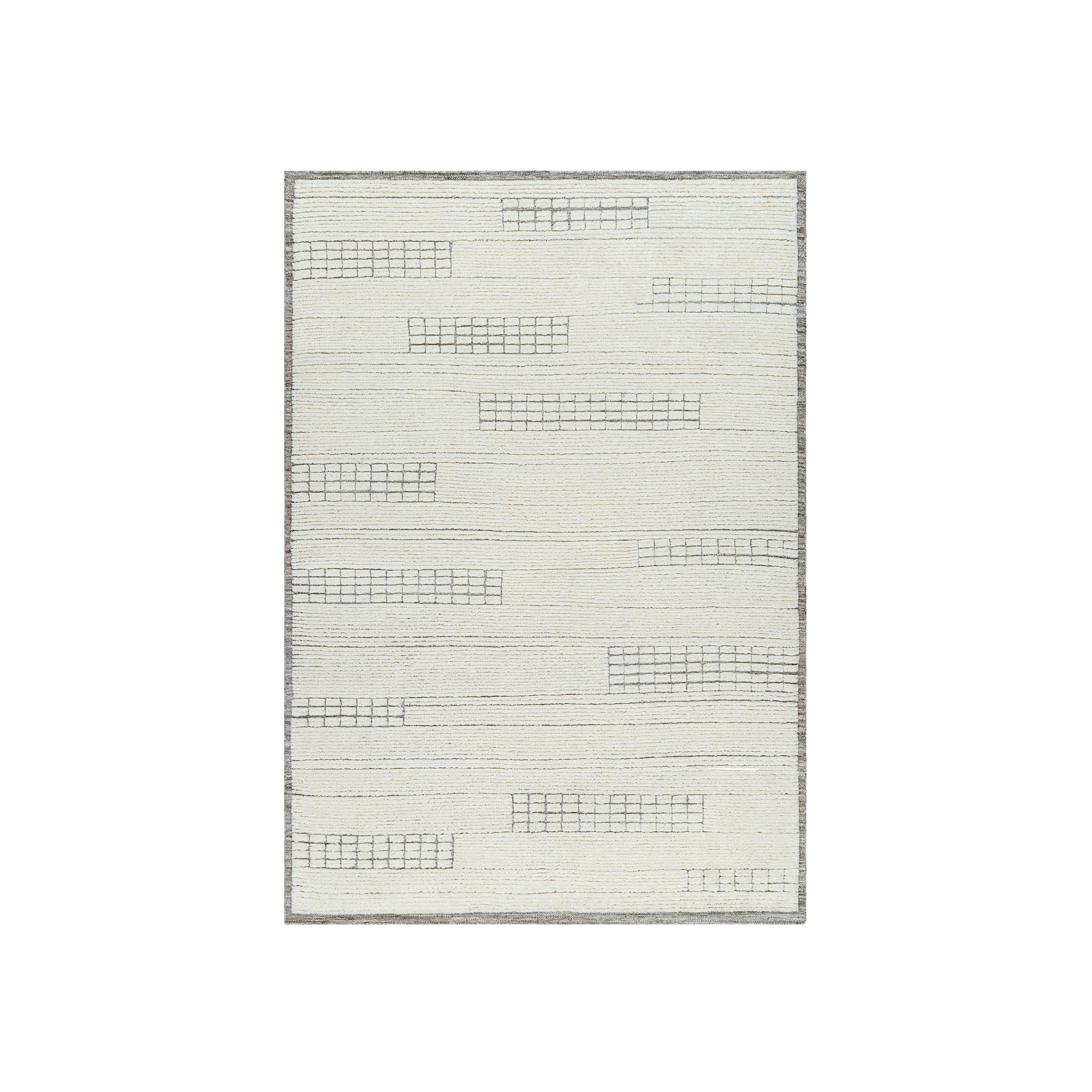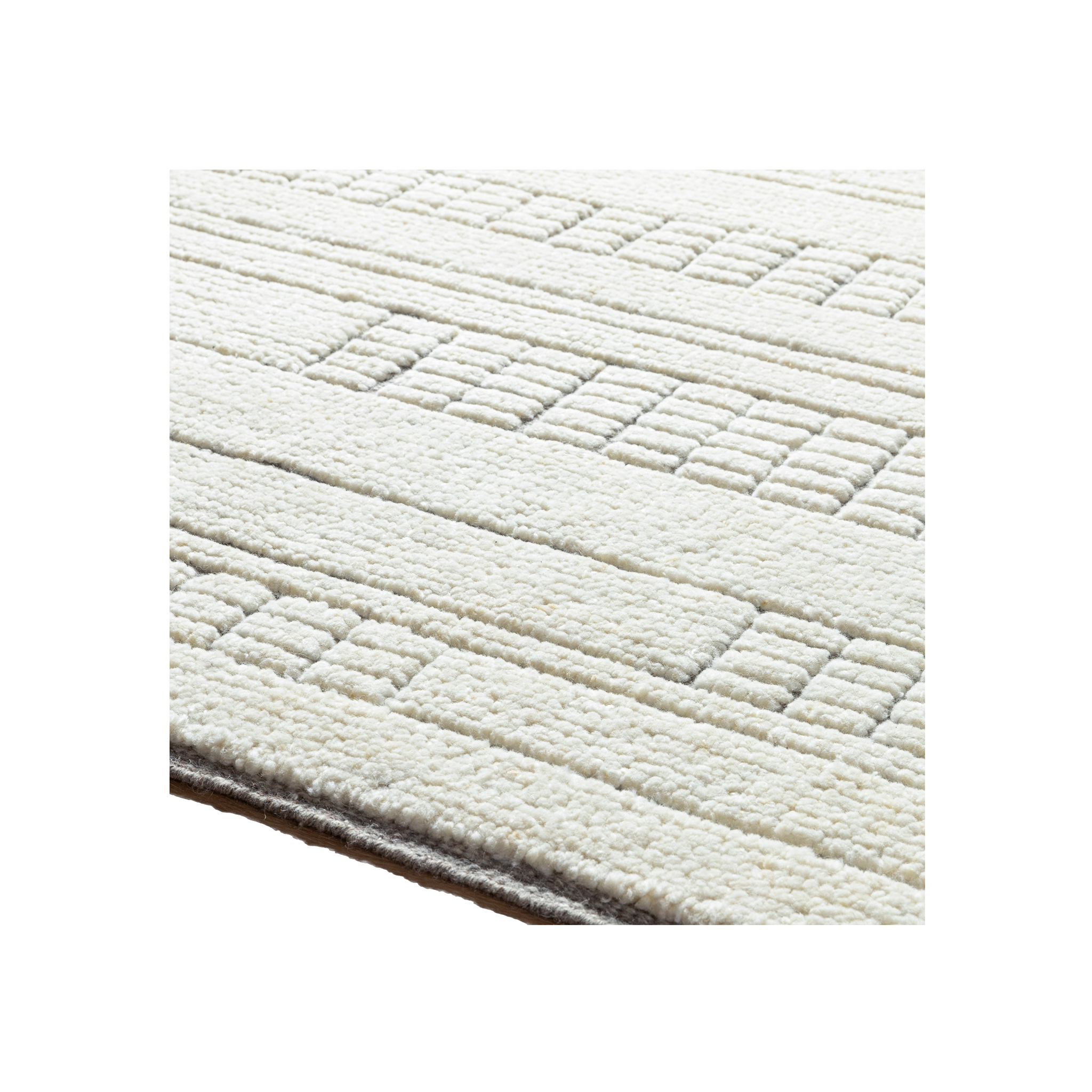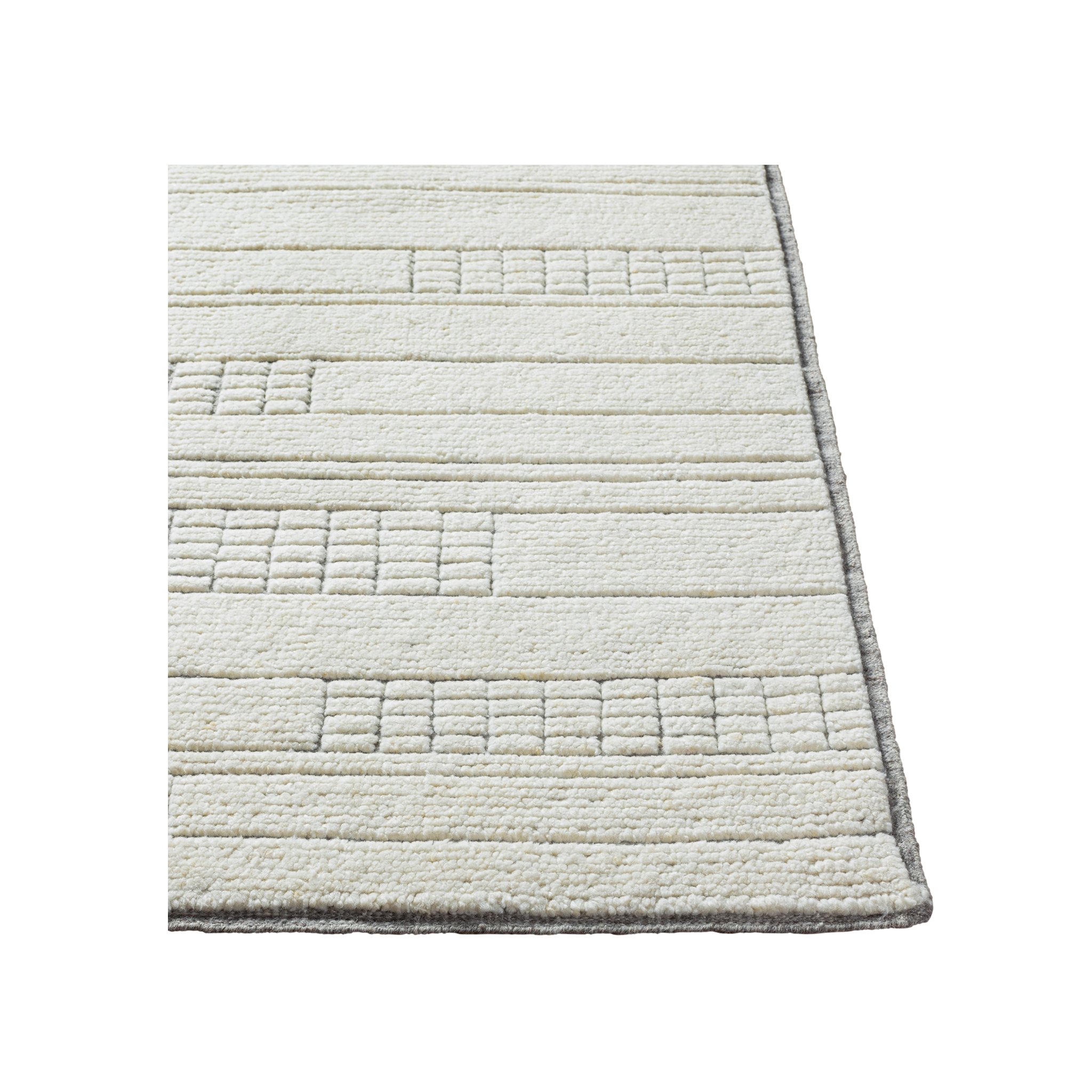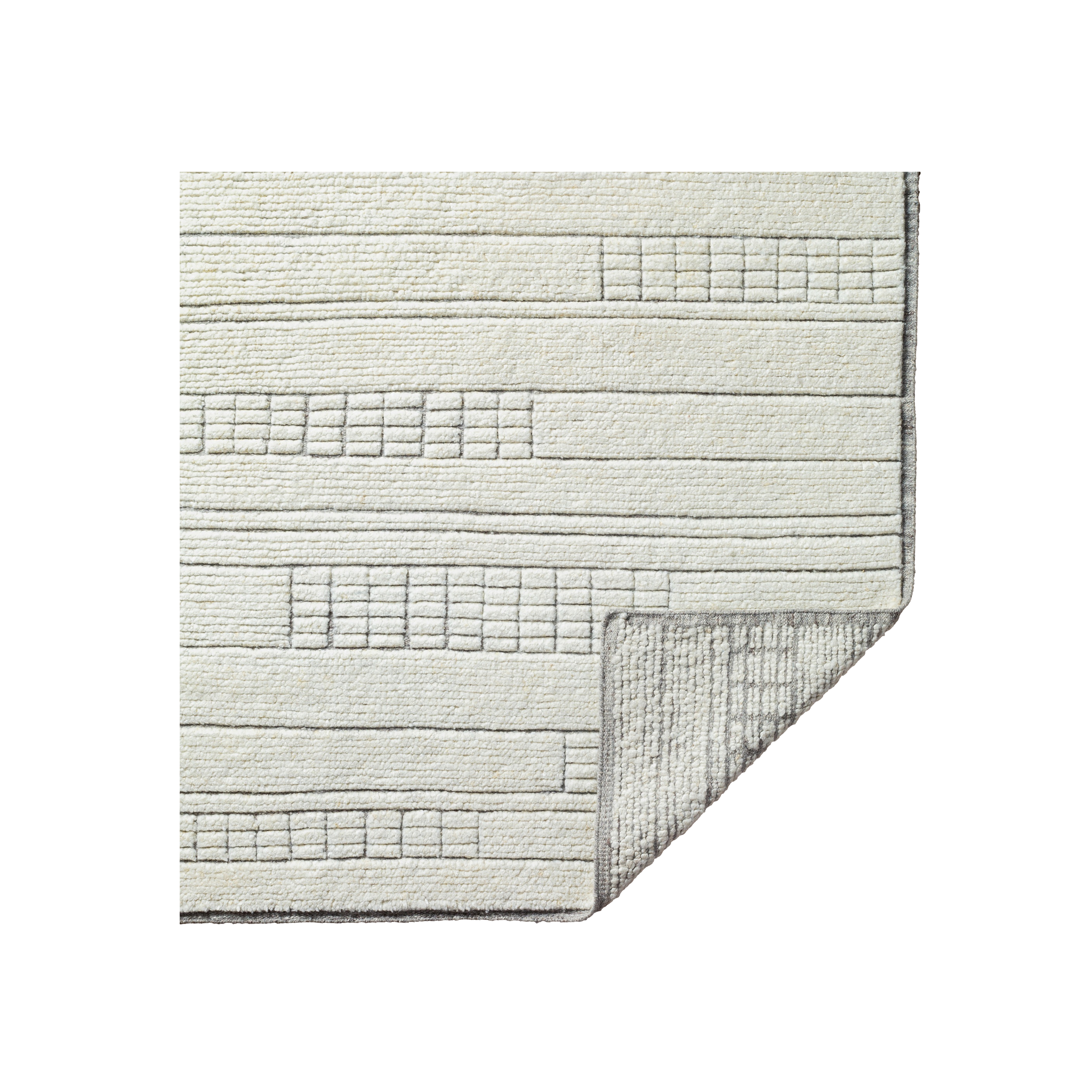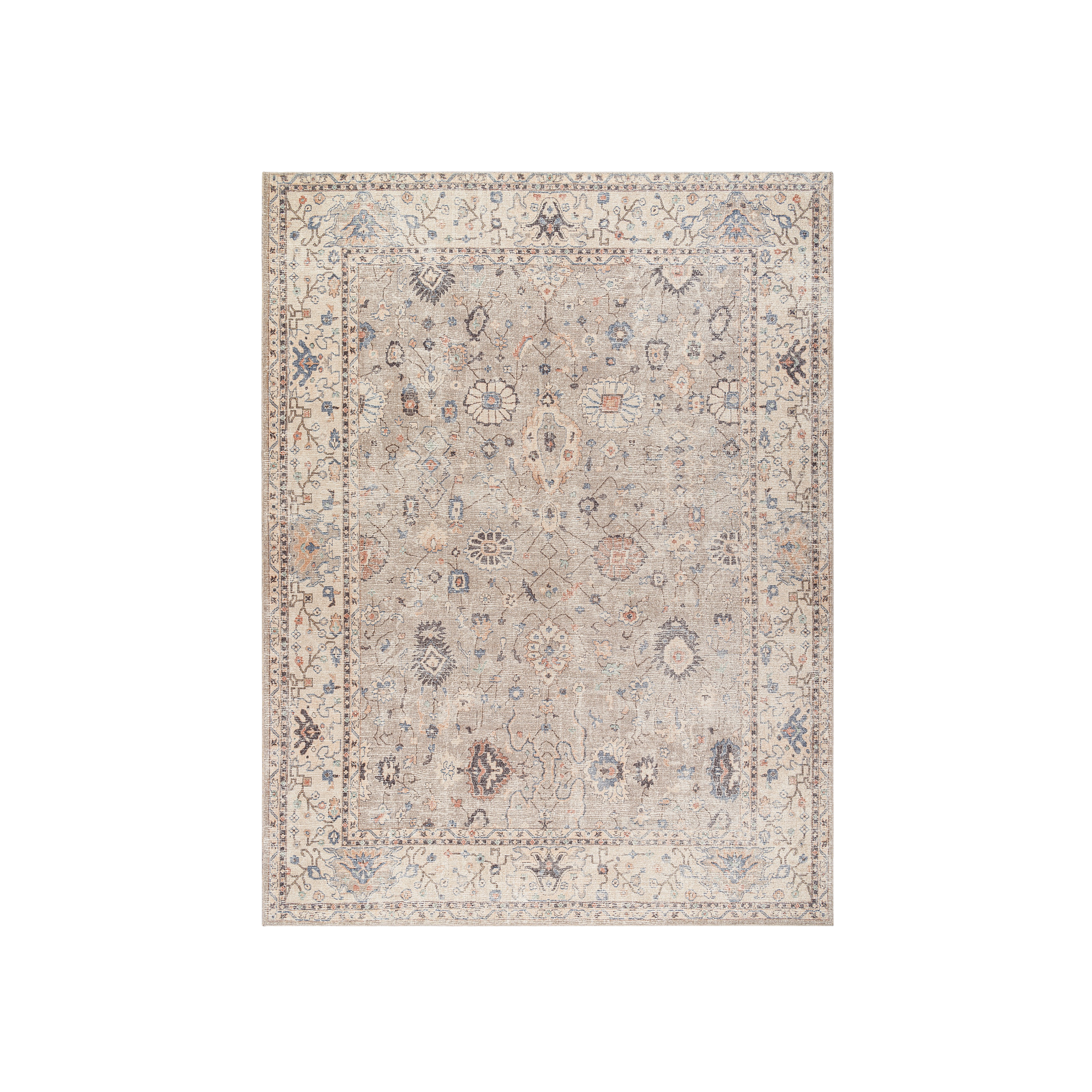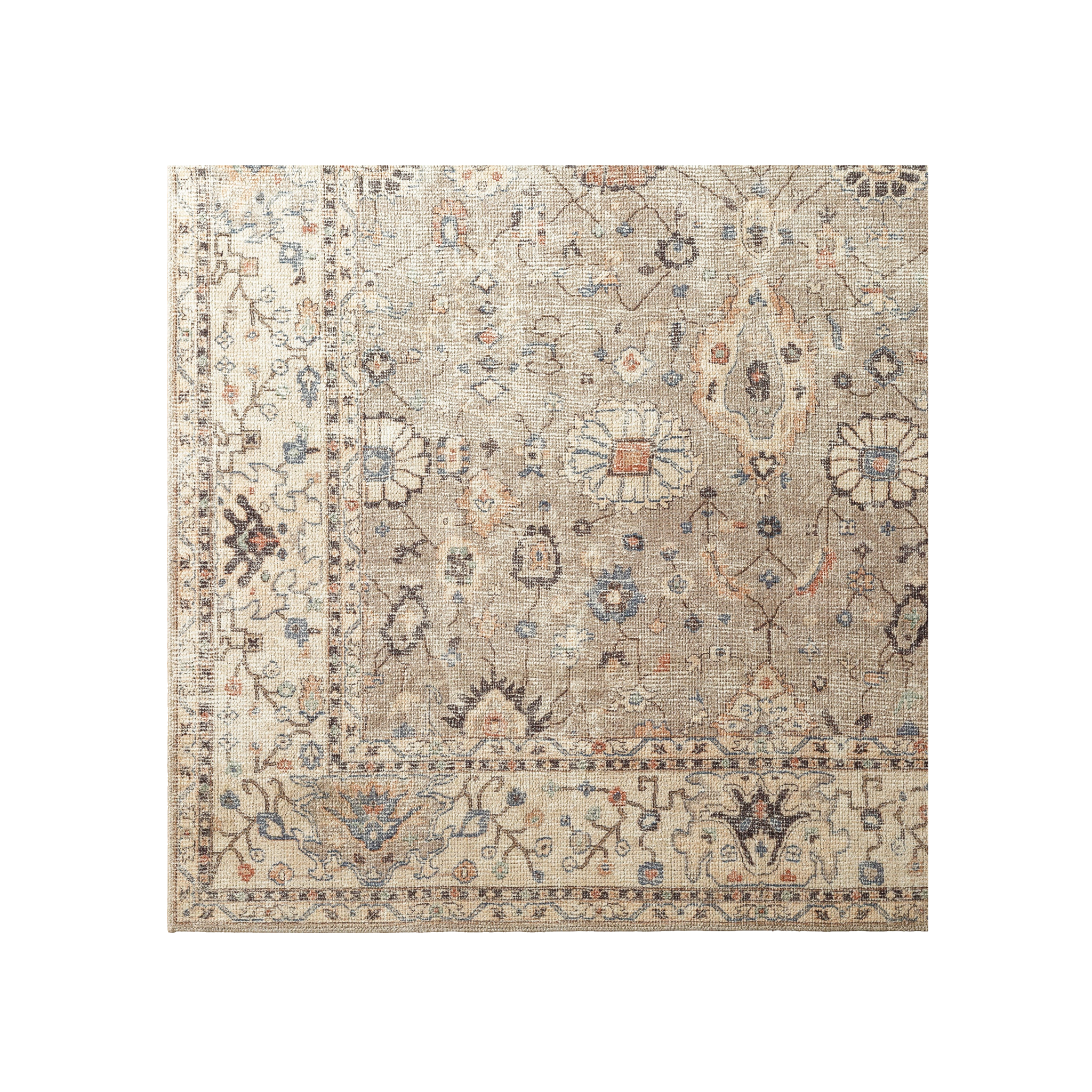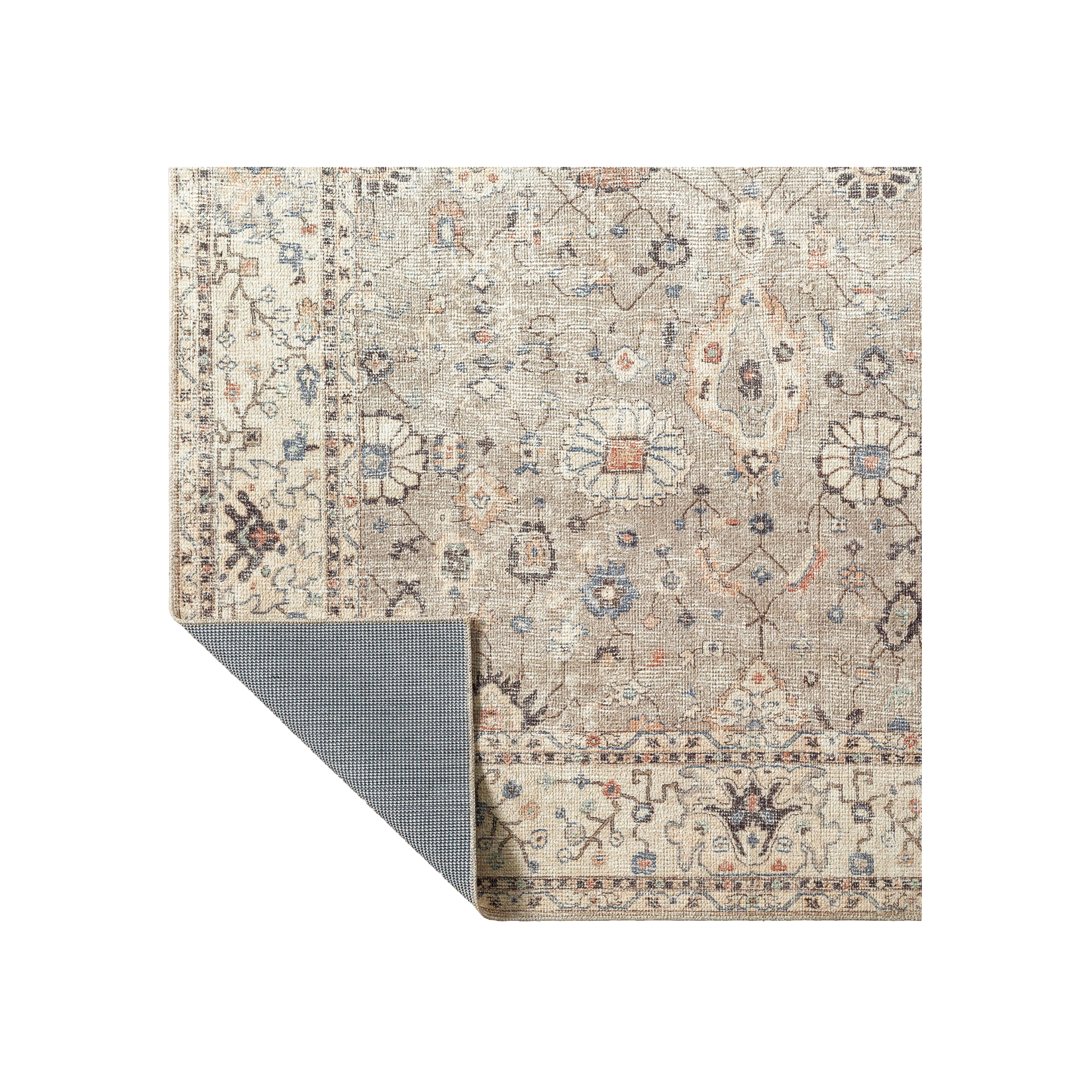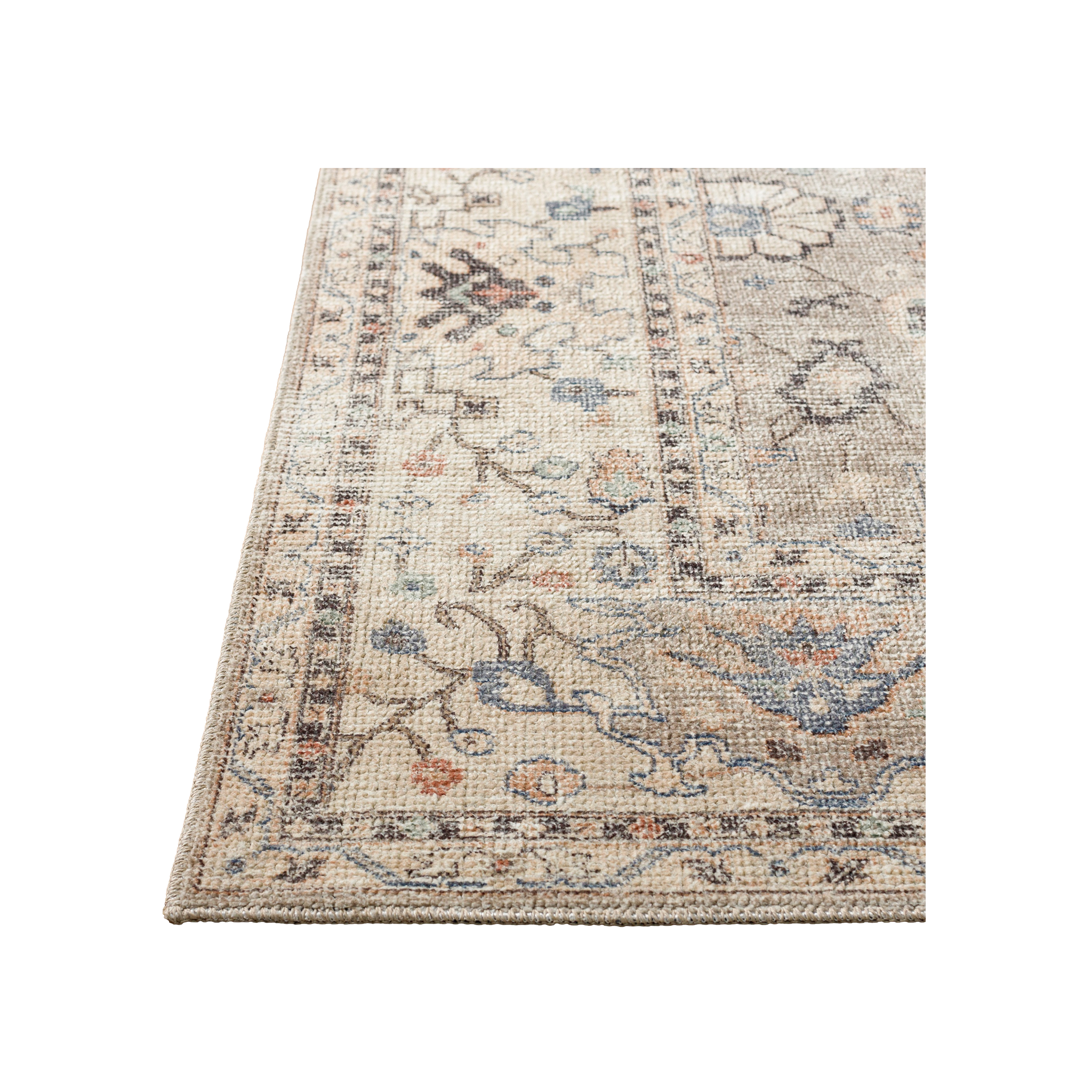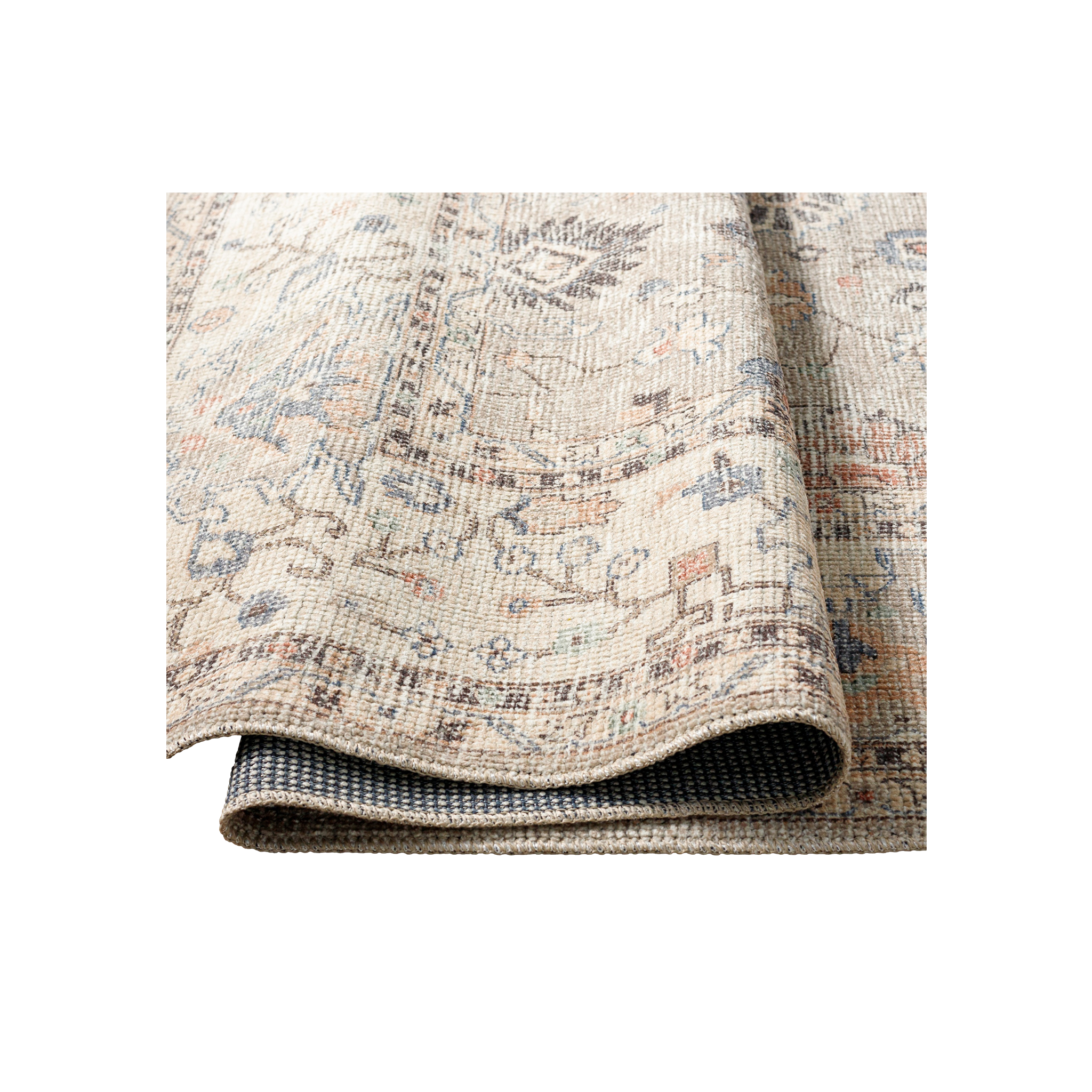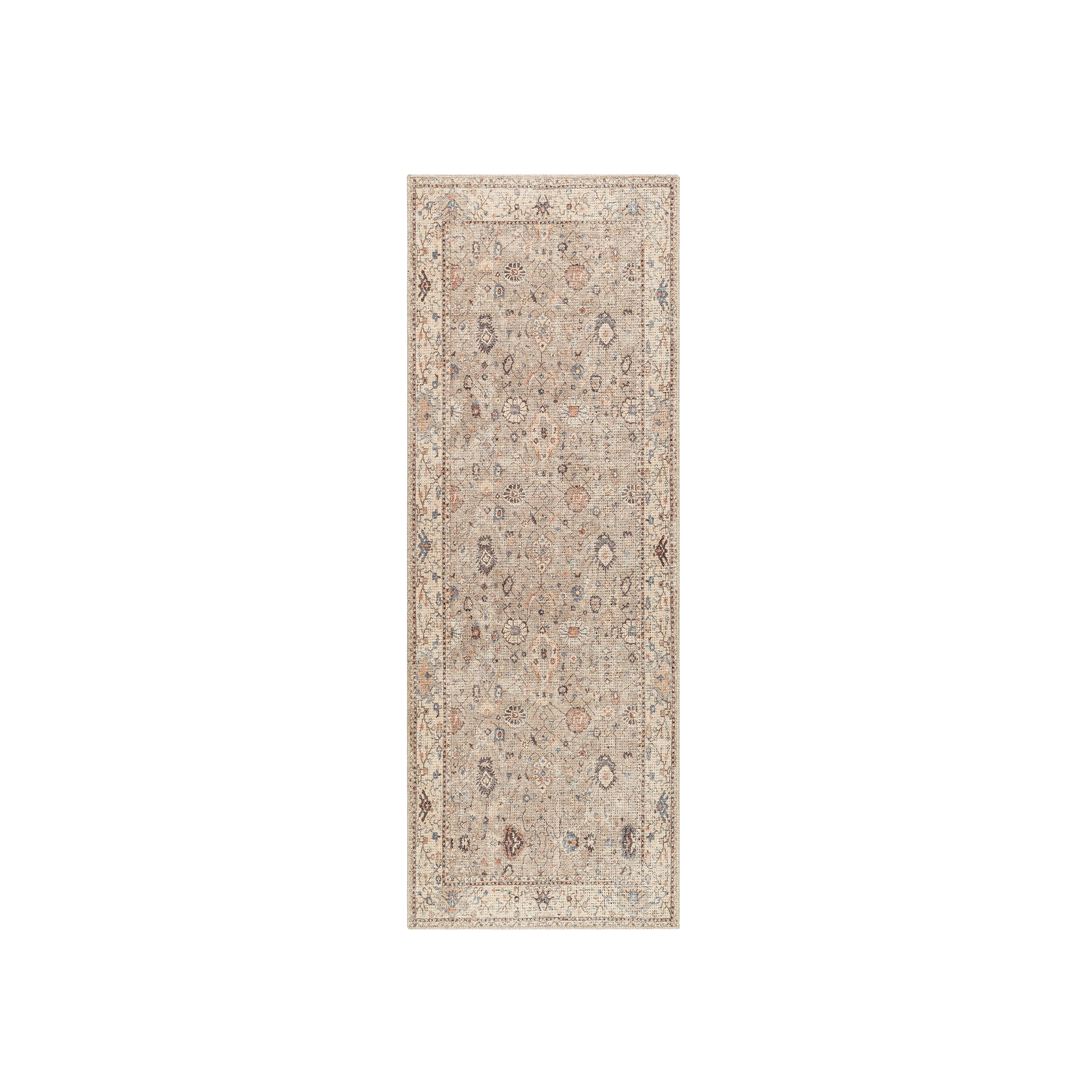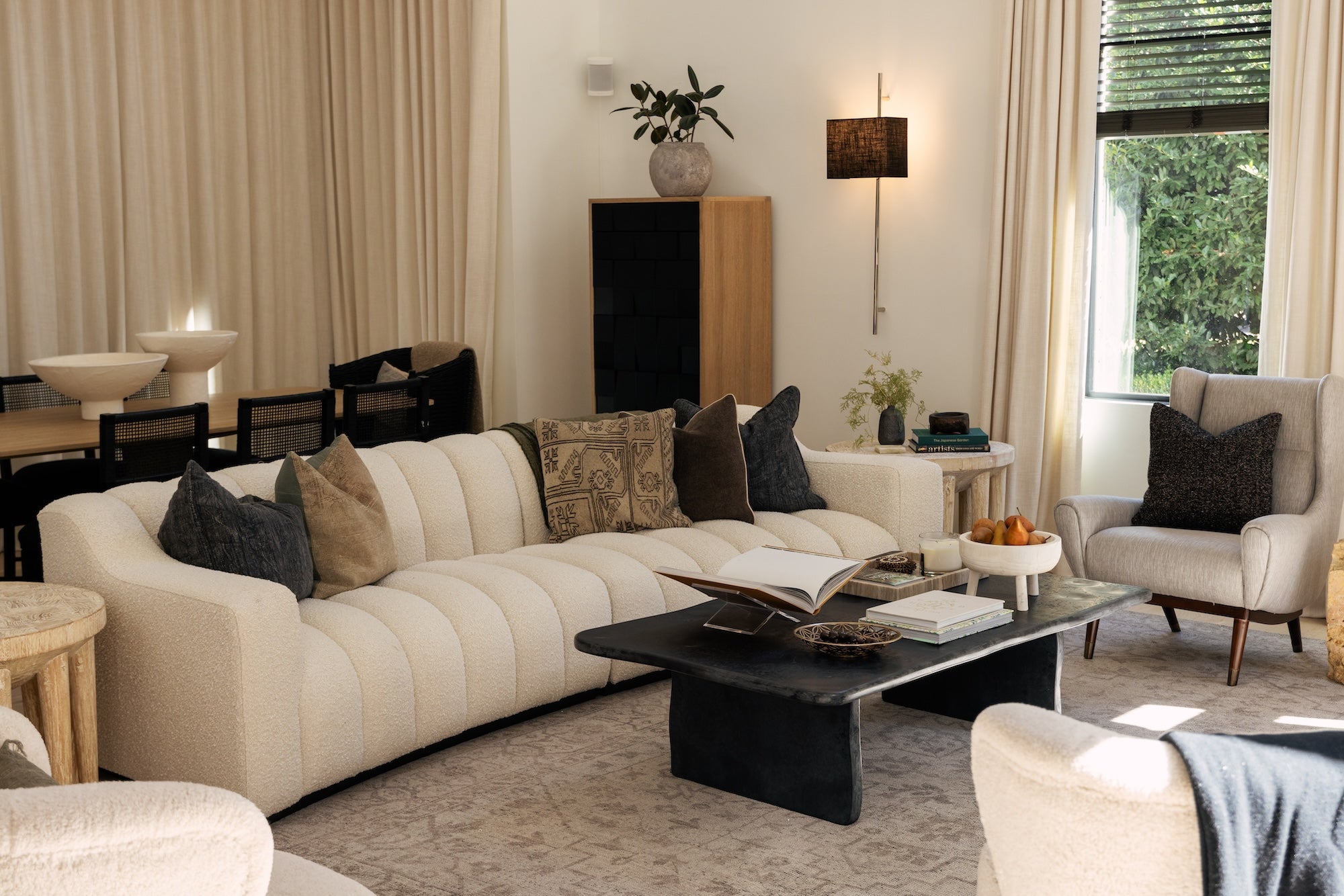design
Rug Material Guide
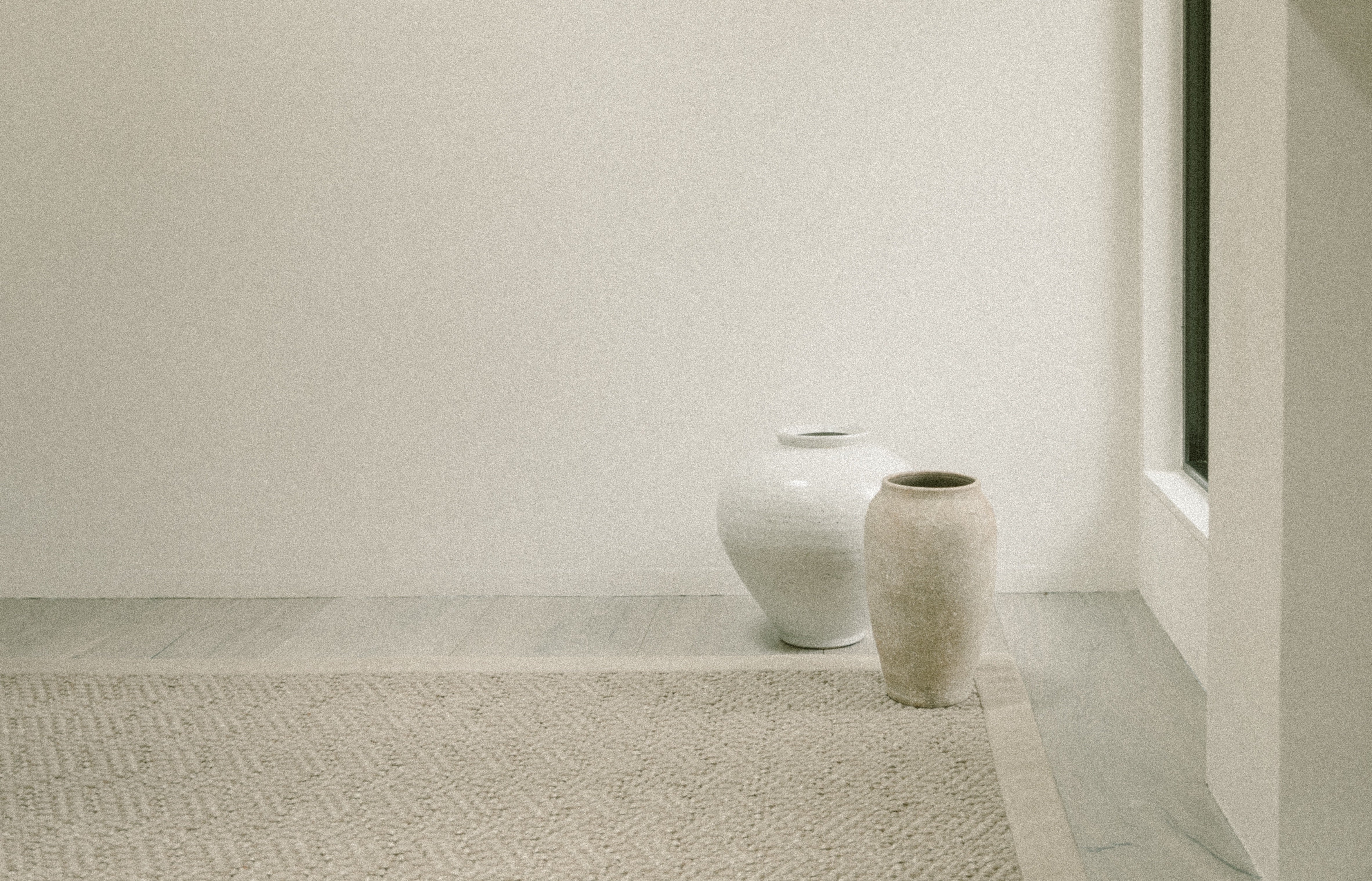
It's no secret that rugs are a great way to add stylish comfort to your home. But, if you're looking to make a long-term investment, there's more to choosing the right rug than just its looks. You'll also need to consider the type of material it's made from. At first glance, all rugs may appear similar, but they can actually vary drastically when it comes to their construction, composition, and performance.
In this blog post, we explore different natural and synthetic rug materials so you can know exactly what type of fabric suits your long-term needs: whether it’s for a living room floor or entryway runner, a house full of littles, or an office for one. So sit back, relax, and prepare to read our encyclopedia of rug materials.
Natural Rug Fibers
Natural rugs are composed of organic materials that are harvested from plants or animals, like wool, cotton, jute, sisal, and silk. These materials are renowned for their exceptional quality and eco-friendliness, making them a sustainable choice for your home. Natural rugs carry a sense of warmth and luxury with them, often exhibiting intricate designs due to their superior weave quality. They're incredibly soft underfoot, providing a comforting and cozy ambiance in any space they grace.
Natural rugs are durable and can withstand the test of time if properly taken care of, making them a worthwhile investment for your home. It's important to note, however, that these rugs can be a bit pricier due to their premium quality and labor-intensive production processes. Nevertheless, the beauty and longevity they offer make them a worthy addition to any home setting.
types of natural rug materials
What Are Wool Rugs Made Of?
Wool rugs are handcrafted from the naturally derived fibers of sheep. Renowned for their softness and warmth, wool rugs bring a cozy, welcoming feel to any room. The fibers are spun into yarn, which is then intricately woven or knotted together to create designs that range from simple and traditional to complex and modern, catering to a wide variety of styles and preferences.
Where to Use Wool Rugs
Owing to their superior quality and comfort, wool rugs are an excellent choice for bedrooms, living rooms, and other spaces where comfort is paramount. Their natural ability to repel water and resist staining makes them suitable for dining areas as well. However, they might not be the best fit for high moisture areas like bathrooms or outdoors, as prolonged exposure to damp conditions can damage the fibers.
Are They Kid-Friendly and Durable?
Indeed, wool rugs are remarkably durable and can withstand the hustle and bustle of daily life, including the energetic play of children. The natural resilience of wool fibers allows the rug to bounce back to its original shape even after being compressed by heavy furniture or foot traffic. However, spills should be attended to promptly as, while wool is naturally resistant to staining, it is not entirely stain-proof.
How to Care for Wool Rugs
Proper care is key to maintaining the beauty and longevity of a wool rug. Regular vacuuming can help remove dust and dirt. In case of a spill, blot immediately with a clean, dry cloth. For more stubborn stains, a professional rug cleaner is recommended.
Also, to prevent uneven wear and tear, rotate your rug every few months, especially if it's placed in a high-traffic area. With a little care, a wool rug can be a cherished piece of your home for many years to come.
What Are Cotton Rugs Made Of?
Cotton rugs are woven from the soft, fluffy fibers that surround the seeds of the cotton plant. Famous for its lightweight and breathable qualities, cotton serves as a versatile material ideal for a range of climates and settings. The natural softness of cotton rugs makes them a preferred choice for spaces where comfort is key, such as bedrooms or playrooms.
Where to Use Cotton Rugs
Cotton rugs are a practical and stylish choice for low-traffic areas such as bedrooms, studies, or guest rooms. They're also perfect for adding an extra layer of comfort and style to your existing carpeting in high-traffic zones like living rooms. However, they may not be the best fit for areas prone to moisture or heavy foot traffic.
Are They Kid-Friendly and Durable?
Certainly, cotton rugs are quite kid-friendly. They don't have the same plushness as wool rugs, but their surface is soft and friendly for crawling infants and tumbling toddlers. Cotton rugs can also stand up to a fair amount of wear and tear, although they may not last as long as their wool counterparts. Their durability can be extended with the right care and maintenance.
How to Care for Cotton Rugs
When it comes to keeping your cotton rug clean, the process is quite straightforward. They're often machine washable, making them a practical choice for areas prone to spills or high foot traffic. Just remember to use a gentle cycle and cold water to prevent shrinkage.
For small stains, a quick spot clean with a mild detergent will usually do the trick. With proper care, a cotton rug can be a charming and long-lasting addition to your home decor.
What are Jute and Sisal Rugs Made Of?
Jute and sisal rugs are created from plant fibers. Jute, sometimes referred to as the "golden fiber" for its color and cost-effectiveness, is derived from the stalks of the jute plant, native to India and Bangladesh. Sisal, on the other hand, is extracted from the leaves of the agave sisalana plant, most commonly found in Brazil and Africa.
Where to Use Jute and Sisal Rugs
These rugs are a perfect choice for those seeking a natural, rustic charm in their home decor. They're best suited for areas of moderate foot traffic like living rooms or home offices. Notably, sisal rugs are more durable, thus can be used in slightly higher traffic areas than jute.
Are They Kid-Friendly and Durable?
While jute and sisal rugs offer a unique aesthetic, they may not be the optimal selection for homes with children. Their rough texture can be hard on the delicate skin of crawling babies or barefoot toddlers. However, in terms of durability, sisal outshines jute. Sisal rugs are highly durable and can endure wear and tear better than jute rugs.
How to Care for Jute and Sisal Rugs
Care for these rugs involves regular vacuuming to remove dirt and dust. They should not be cleaned with a steam cleaner or shampooer as water can cause the fibers to shrink or become distorted. For stains, it's recommended to blot, not rub, with a dry cloth and use a mild soap or rug cleaner. It's also advisable to rotate these rugs periodically to ensure even wear and prolong their lifespan.
What Are Silk Rugs Made Of?
Silk rugs are renowned for their lustrous sheen and unrivaled softness. Derived from the cocoons of silkworms, silk fibers are meticulously spun together to produce a rug that embodies luxury and sophistication. Silk rugs are best suited for low-traffic areas such as bedrooms or offices where their delicate beauty can be appreciated without the risk of extensive wear or damage.
Where to Use Silk Rugs
The delicate and luxurious nature of silk rugs makes them a perfect fit for spaces that are primarily used for relaxation or entertaining guests. They add a touch of elegance and glamour to any room, making them an ideal choice for bedrooms, sitting rooms, or formal dining areas.
Are They Kid-Friendly and Durable?
While silk rugs are incredibly inviting to the touch, they tend to be less durable and stain-resistant compared to wool or cotton rugs. Hence, they may not be the best choice for homes with young children or pets. Silk rugs require careful handling and are more prone to showing wear and tear over time.
How to Care for Silk Rugs
Preserving the opulent charm of a silk rug requires special care. Avoid using harsh chemicals or scrubbing at stains, as this can cause the fibers to break down. For everyday cleaning, it's best to lightly vacuum your silk rug with a brushless attachment to prevent snagging the delicate fibers.
For deeper cleaning or stain removal, professional rug cleaning services are highly recommended. With the right care, a silk rug can continue to radiate elegance and add a touch of luxury to your home for years.
What Are Leather Rugs Made Of?
Leather rugs are crafted from the hides of various animals, commonly cows. These hides are treated and crafted into unique, high-quality rugs. The process often includes dyeing and hand-stitching to create a variety of patterns and designs. Each leather rug, with its distinct markings and textures, brings a touch of individuality and rugged charm to any setting.
Where to Use Leather Rugs
Leather rugs are incredibly versatile and can add a dash of sophisticated rusticity to a wide range of interior styles. They are particularly fitting for spaces such as studies, lounges, or bedrooms, where their unique style can be appreciated. However, while they can handle moderate foot traffic, they are not ideal for high-traffic or wet areas due to their susceptibility to staining and water damage.
Are They Kid-Friendly and Durable?
When it comes to child-friendliness, leather rugs sit somewhere in the middle. While they are not as delicate as silk or fur, they are less forgiving of spills and stains compared to cotton or synthetic alternatives. In terms of durability, a well-crafted leather rug can be quite robust, holding up well under regular use. However, like any natural material, its lifespan can be significantly extended with the right care.
How to Care for Leather Rugs
Care for leather rugs involves regular dusting or vacuuming with a brush attachment to prevent dirt build-up. Avoid using water or cleaning agents as these can cause staining or discoloration. For spills, immediate blotting with a dry cloth is recommended.
Periodically, a leather conditioner can be applied to maintain the rug's suppleness and prevent cracking. Always remember, when in doubt, that consulting with a professional cleaner is the safest option to maintain the quality and extend the life of your leather rug.
What Are Fur Rugs Made Of?
Fur rugs are crafted from the pelts of animals such as sheep, rabbits, or foxes. These luxurious rugs are renowned for their plush texture, cozy warmth, and natural elegance. Each fur rug possesses a unique pattern, color, and feel, owing to the individual characteristics of the animal from which it's sourced.
Where to Use Fur Rugs
A fur rug is an excellent addition to spaces that require a touch of warmth and decadence. They're often used in bedrooms, living rooms, or studies where their soft, inviting texture can be fully appreciated. However, due to their sensitive nature, fur rugs aren't typically recommended for high-traffic or spill-prone areas.
Are They Kid-Friendly and Durable?
While fur rugs are undeniably soft and appealing, they are not the most kid-friendly option. They can be easily stained or damaged, and their cleaning process can be rather complex. Furthermore, fur rugs may not be as durable as other natural or synthetic alternatives, depending on the type of fur and the quality of the rug's construction.
How to Care for Fur Rugs
Caring for fur rugs requires a gentle approach. Regularly shake out the rug to remove dust and keep the fur fluffy. For occasional deep cleaning, it's best to reach out to professional cleaners who specialize in fur.
Steer clear of regular vacuuming, heat, and water as they can damage the fur. By treating your fur rug with care, you can ensure its longevity and enjoy its luxurious appeal for many years to come.
Synthetic Rug Fibers
Synthetic rugs are man-made, composed primarily of materials such as nylon, polyester, and polypropylene. These materials are designed to mimic the appearance and texture of natural fibers, offering a wide range of color and design possibilities. Synthetic rugs are often machine-made, allowing for high precision and consistency in their patterns.
The key advantage of synthetic rugs is their ability to withstand heavy foot traffic and resist stains, making them a practical choice for areas such as hallways, playrooms, or kitchens. They're also a popular choice for outdoor spaces due to their resistance to moisture and sunlight.
types of synthetic rug materials
What Are Polyester Rugs Made Of?
Polyester rugs are crafted from synthetic fibers, offering high-quality aesthetics at an affordable price. Known for their vibrant colors and glossy appearance, these rugs are made from petroleum products through a chemical process, resulting in a durable and stain-resistant material.
Where to Use Polyester Rugs
With their eye-catching designs and easy maintenance, polyester rugs are a fantastic choice for spaces that require a pop of color or a protective layer over flooring. They work well in high-traffic areas, such as living rooms and hallways, or in homes where spills are a common occurrence, thanks to their impressive stain resistance.
Are They Kid-Friendly and Durable?
Yes, polyester rugs are extremely kid-friendly. Their soft texture makes them comfortable for playtime, and their resistance to spills and stains means they can withstand the messier aspects of life with children. As for durability, while polyester rugs can handle high foot traffic and are highly resistant to water-based stains, they can show signs of wear and tear with time.
How to Care for Polyester Rugs
Caring for polyester rugs is a breeze. Routine vacuuming will keep them looking fresh and free of dust. For liquid spills, blotting with a clean cloth and warm water should do the trick. If a more stubborn stain occurs, a gentle carpet cleaner can be used.
Although polyester rugs can handle some moisture, it is always best to dry them thoroughly to prevent mildew or mold growth. Periodic professional cleaning is also recommended to maintain the vibrancy and extend the life of these rugs.
What Are Polypropylene Rugs Made Of?
Polypropylene rugs, also known as olefin rugs, are made from synthetic fibers derived from propylene, a byproduct of the petroleum refining process. Appreciated for their resistance to wear, moisture, and sunlight, polypropylene rugs are a popular choice for many homeowners due to their durability and affordability.
Where to Use Polypropylene Rugs
Thanks to their high resistance to stains and fading, polypropylene rugs are ideal for high-traffic areas of the house such as living rooms, dining areas, and outdoor spaces. They're also a perfect pick for rooms exposed to direct sunlight or prone to moisture, such as sunrooms or bathrooms.
Are They Kid-Friendly and Durable?
Absolutely! Polypropylene rugs are extremely kid-friendly owing to their resistance to spills and stains. Their durability makes them a practical choice for households with kids and pets. Despite heavy foot traffic, these rugs can maintain their appearance for a good length of time.
How to Care for Polypropylene Rugs
Maintaining a polypropylene rug is easy. Regular vacuuming can help keep it free of dust and dirt. For spills, simply blot with a clean cloth and mild detergent if necessary. These rugs can also be hosed down for a thorough clean, making them an excellent choice for outdoor use.
However, they should be thoroughly dried to prevent any potential for mildew growth. With proper care, a polypropylene rug can be a durable and stylish addition to your home decor.
What Are Viscose Rugs Made Of?
Viscose rugs are crafted from a type of man-made fiber, also known as rayon. Viscose is created by treating purified cellulose, often derived from wood pulp, with chemicals to break it down into a silky, shiny material. The result is a luxurious, soft fabric that can emulate the shimmer of silk at a fraction of the cost.
Where to Use Viscose Rugs
Viscose rugs, with their elegant sheen and soft texture, are perfect for adding a touch of sophistication and luxury to any space. However, they're best suited for low-traffic areas due to their delicate nature. Think bedrooms, formal dining rooms, or a private office space where they can be admired without the threat of heavy footfall.
Are They Kid-Friendly and Durable?
In terms of softness and visual appeal, viscose rugs can be quite appealing to kids. However, their low durability and susceptibility to staining make them less than ideal for spaces used by children. Viscose rugs show signs of wear more readily, and liquid spills can create hard-to-remove spots or discoloration.
How to Care for Viscose Rugs
Care for viscose rugs involves regular, gentle vacuuming using a brushless attachment to remove dust and prevent dirt from settling into the fibers. Blot any spills immediately, but avoid rubbing or using water to clean as it can damage the fibers and cause discoloration. Due to their delicate nature, professional cleaning is recommended for deeper stains or routine maintenance. With the proper care, a viscose rug can maintain its luxurious allure for years to come.
What Are Nylon Rugs Made Of?
Nylon rugs are made from synthetic fibers derived from petroleum products. These fibers are known for their strength and resilience, making nylon rugs an excellent option for both durability and comfort. The nylon fibers also retain color well, resulting in rugs that offer vibrant and long-lasting hues.
Where to Use Nylon Rugs
Due to their high durability and stain resistance, nylon rugs are ideal for high-traffic areas in the home. They are an excellent choice for entryways, kids' rooms, staircases, and hallways. Also, thanks to their ability to withstand heavy use without losing their aesthetic appeal, they're often used in commercial spaces.
Are They Kid-Friendly and Durable?
Absolutely! Nylon rugs are extremely kid-friendly, as they are resilient to spills, stains, and dirt. The durability of nylon rugs is one of their key strengths, allowing them to withstand heavy foot traffic and the rigors of active households with children and pets. Their resilience also means they retain their appearance for a long period, making them a cost-effective choice for many households.
How to Care for Nylon Rugs
Caring for nylon rugs is relatively straightforward. Regular vacuuming is recommended to keep them clean and dust-free. In case of spills or stains, a mild carpet cleaner can be used, followed by blotting with a clean cloth.
For a deeper clean, professional carpet cleaning services can be utilized periodically. With the right care, a nylon rug can remain vibrant and durable for many years.
Final thoughts: When deciding between natural or synthetic rug materials, consider your lifestyle, preferences, and the specific needs of the room. If you prefer eco-friendly materials and don't mind investing time in maintenance, natural rugs could be the right choice. They offer unique designs, high quality, and durability. However, they might be more susceptible to stains and might require more careful cleaning.
On the other hand, synthetic rugs are designed to resist stains, wear, and moisture. They are ideal for high-traffic areas and households with children or pets. They require less maintenance compared to their natural counterparts and are usually more affordable.
Ready to find your perfect rug match? Shop our rug collection or reach out to our design team to source with us for free.
